
This could end up being the case in Laylock v. TMS Logistics, where plaintiff was awarded $3.5 million in a trucking accident, a damage award that might now be in jeopardy if juror misconduct requires a new trial. Plaintiff filed a certiorari petition (request for review) from Florida’s 1st District Court of Appeal to halt the juror interviews into the alleged misconduct before they begin. The defendant sought the interviews in connection with its pending motion for a new trial.
However, the appellate court ruled that because any harm plaintiff might suffer could be remedied on appeal, his petition was dismissed. That means the juror interviews may proceed, which could open the door for a new trial.
According to court records, plaintiff suffered serious injuries when a driver working operating a tractor-trailer for defendant company allegedly crashed into plaintiff. The case went to trial in 2015, three years after the collision, with jurors assigning defendant 95 percent damages and plaintiff 5 percent damages and awarding plaintiff $3.5 million, which included compensation for medical bills as well as pain and suffering.
However, at a hearing just a few days after the verdict was reached, the trial court made an announcement that a juror had contacted the court and spoke to the judge’s assistant. At that time, defendant announced one of its lawyers also had spoken to a juror. The attorney in question said two jurors approached her as she left the courthouse and offered their general opinions on the case, along with specific details on jury deliberations. One juror repeated several times that jurors agreed not to follow the court’s instructions. It was at that time the company sought more information.
Plaintiff objected, but the court ordered a limited interview of one of the jurors. After that interview was conducted, the trial court weighed defendant’s motion for more interviews and ultimately found the defendant’s sworn factual allegations and testimony were evidence of juror misconduct worthy of further review. The misconduct, if proven, would require a new trial, unless plaintiff is able to show there was no reasonable possibility the alleged misconduct affected the verdict. The court then scheduled interviews with the five remaining jurors. This was when plaintiff filed his write of certiorari.
The appellate court dismissed the petition because it found plaintiff’s argument for irreparable harm to be lacking. Plaintiff’s argument that these interviews would needlessly extend litigation required little discussion because the Florida Supreme Court ruled in 2013 that continuation of litigation – including time, costs and effort – does not constitute an irreparable harm. The court rejected the other arguments too, including the violation of the sanctity of the jury, though it certified a conflict with the 2nd DCA’s 1986 ruling in Preast v. Amica Mutual Insurance Co. This means we could see this issue come up before the Florida Supreme Court.
If you have been a victim of a traffic accident, call Chalik & Chalik at (954) 476-1000 or 1 (800) 873-9040.
Additional Resources:
Laylock v. TMS Logistics, Jan. 19, 2017, Florida’s First District Court of Appeal
More Blog Entries:
Truck Accidents to Rise as Poor Road Conditions Persist, Dec. 16, 2017, Miami Truck Accident Lawyer Blog
The post Laylock v. TMS Logistics – Florida Court to Investigate Alleged Juror Misconduct in $3.5M Truck Accident Lawsuit first appeared on SEONewsWire.net.]]>
Here in Florida, the slip-and-fall statute became even more stringent in 2005, when legislators enacted F.S. 768.0755, which holds that if a person wants to sue a business after a slip-and-fall on a transitory foreign substance, then the injured person has to first show the business had actual or constructive knowledge of the dangerous condition and should have taken some action to address it. Actual knowledge would mean someone notified a staffer of a spill or slippery condition. Constructive knowledge, meanwhile, would mean the condition existed for long enough that the business should have discovered it in the course of exercising ordinary care, or else the condition occurred so often that it was foreseeable. These guidelines are fairly strict, and that means to prevail in court, you need a legal advocate who is detail-oriented and meticulous.
In the recent case of Bates-Bridgmon v. Heong’s Market, Inc., the Rhode Island Supreme Court ruled that the trial court didn’t err in not instructing jurors on the “mode of operation” theory in the slip-and-fall case. Although the laws for premises liability vary to some degree from state-to-state, the general principles here are the same. Florida does follow the mode of operation law, which holds a store owner fails to use reasonable care if they fail to take action against a reasonably foreseeable condition that is made likely by defendant’s mode of operation and the owner’s failure to take adequate steps to prevent it.
So for example, if I have a self-serve ice cream store, I can expect that some customers may be careless in dripping some ice cream or condiments onto the floor. This could create a dangerous condition for other unsuspecting customers. That means I need to regularly check the floors in my establishment to look for slippery messes.
In the Bates-Bridgmon case, plaintiff suffered a fall on defendant’s property in March 2009. She entered the grocery store, which she frequented, to purchase meat. However, as she turned a corner, she slipped on what she later discovered was cucumber and oil that had spilled from a nearby salad bar. She called for help after the fall, but no one came to assist her. She crawled to the prepared foods department and pulled herself up. It was at that point she was able to get help from a store manager, whom she informed of the fall. However, she was told there was no one at the time to help her complete an incident report.
Plaintiff reportedly suffered immediate pain in her back, arm, knee, ankle and foot. She couldn’t sleep that night and went to the emergency room the next day. X-rays revealed no fractures, but there were soft tissue injuries. It was later discovered she had a bulging and degenerative discs and numerous tears in her knee muscles. Although she was on disability prior to the incident due to a chronic health condition, she described this pain as different.
She filed a personal injury lawsuit less than three years later, alleging defendant was negligent for failing to maintain the property in a reasonably safe condition.
A manager testified there were not mats put around the salad bar because there was concern customers may trip on those and that, to her knowledge, there had never been previous spills associated with the salad bar.
At the close of trial, defense argued that while it was not in dispute that plaintiff fell on oil and cucumber, there was no evidence of actual or constructive notice to the store or any employee, meaning there was not a reasonable opportunity to clean it up before plaintiff fell.
Plaintiff, meanwhile, compared the salad bar to a leaky drainpipe, arguing it is a constant danger.
The court presented jurors with instructions regarding defendant’s duty to exercise reasonable care to keep the site in reasonably safe condition for food and grocery shopping, taking into account the nature of conditions. However, there was no specific instruction on the mode of operation theory of negligence.
Jurors decided the case in favor of defendant, finding plaintiff had failed to prove defendant was negligent and that this negligence caused plaintiff’s injury.
Plaintiff appealed, but the state high court affirmed, finding plaintiffs never requested an instruction on the mode of operation, nor did they object when the trial judge failed to do so. This issue, therefore, was waived.
If you have been a victim of a slip-and-fall injury in Miami, call Chalik & Chalik at (954) 476-1000 or 1 (800) 873-9040.
Additional Resources:
Bates-Bridgmon v. Heong’s Market, Inc., Jan. 24, 2017, Rhode Island Supreme Court
More Blog Entries:
Acute Sleep Deprivation Ups the Risk of Miami Car Accident, Jan. 7, 2017, Slip-and-Fall Injury Lawyer Blog
The post Bates-Bridgmon v. Heong’s Market – Slip-and-Fall Verdict Affirmed first appeared on SEONewsWire.net.]]>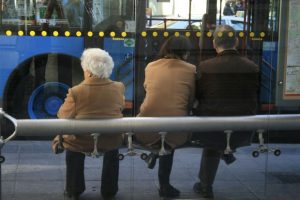
In the past, states routinely imposed driver restrictions that were based solely on one’s age. But now, advocacy groups are fighting back against this type of designation, saying it’s arbitrary and fails to take into account the individual’s ability. As people are living longer, many people are living healthier. The 70-year-old’s of today are much more active than the 70-year-old’s of even just 40 years ago. Consider that in 1970, less than half of people over the age of 65 had a valid driver’s license. Today, more than 85 percent do. These drivers also tend to have a fairly safe driving record. They also are generally healthier and their cars are safer than the elderly of generations’ past. Additionally, this cohort has an increasingly powerful – and vocal – advocacy base in organizations like the AAA Foundation for Traffic Safety and the AARP.
In Florida, drivers who are 80-years-old or older when their current license expires can renew at the nearest office for the Department of Motor Vehicles, and only after passing a vision test. In some situations, written knowledge will be tested too. Some older drivers may have restrictions placed on their driver’s license if their vision is not up to the standard. That could mean allowing driving only during daylight hours or prohibiting driving during rush hour traffic.
But as the country prepares to face the fact that by 2030, an estimated 60 million older adults will be driving on our nation’s roads, a number of states have been rejected additional measures that would impose greater restrictions on older drivers. Part of that is because older drivers are increasingly viewed as safe drivers. There are also more programs in existence to help them better their driving skills. Plus, there have been a number of recent studies that seem to indicate that these types of arbitrary age restrictions aren’t as effective at curbing car accidents as was once believed. Then on top of that, you’ve got the AARP and AAA advocating on their behalf, arguing that DMV officials should be looking at more than just a driver’s age.
Among the states where such enhanced measures failed:
- Legislators in Vermont rejected a bill that would have required over-65 drivers to pass vision and road tests to obtain or renew their driver’s licenses.
- Lawmakers in Tennessee rejected a measure that would have required drivers over the age of 76 to take a driving test.
Those who are advocating for the elderly say that while it’s true that vision and reflexes and overall health can deteriorate with age, these types of arbitrary testing are a form of discrimination. There is no doubt that the laws vary widely from state-to-state, and enforcement of these rules is often spotty. It’s also been established that fatality rates among drivers over the age of 55 in states that require written or roadside tests or shortened renewal periods aren’t any lower as compared to other states.
Still, we do know that older drivers are more prone to be involved in certain types of collisions. One study by the Insurance Institute indicated elderly drivers were far more likely to be involved in car accidents at intersections and in those resulting from failure to yield.
Both the AARP and AAA support the concept of medical advisory boards, which would set uniform standards for state licensing agencies to assess at-risk drivers – not just those who have reached a certain age.
If you have been a victim of a traffic accident, call Chalik & Chalik at (954) 476-1000 or 1 (800) 873-9040.
Additional Resources:
Curb elderly drivers? Not so fast, Dec. 25, 2016, By Jenni Bergal, Stateline.org
More Blog Entries:
GEICO v. Isaacs – Arguing Against Post-Accident Trial Remittitur, Jan. 3, 2016, Miami Car Accident Attorney Blog
The post States Slow Efforts to Block Driving Privileges for Elderly first appeared on SEONewsWire.net.]]>
The findings draw on original research and past studies, and cause us great consternation when we consider that we live in a world where people are always on-the-go and rarely get the proper amount of rest. About 35 percent of people get less than the seven hours of sleep they need every night, per the U.S. Centers for Disease Control and Prevention (CDC). Approximately 12 percent of Americans report receiving five hours of sleep or less every night.
Previous studies by the foundation indicated 1 in 5 fatal crashes involved a driver who was sleep-deprived. This new research looks at how much driving ability is affected by varying levels of sleep deprivation. Perhaps it should come as no surprise that the less sleep people got, the more at risk they were of being involved in a collision. The startling thing was just by how much their crash risk increased.
The executive director of the foundation explained to the Washington Post that people cannot expect to skip sleep and still get behind the wheel of a vehicle and function safely.
The hope is this report will grab the attention of those who actually take pride on their ability to function on less than seven hours of sleep every night. The sample examined some 4,600 crashes in which police investigators concluded lack of sleep was a factor in the crash. The findings suggest that these individuals are wrong – they can’t function on so little sleep.
People who slept for less than 4 hours in the previous 24 hours increased their crash rate by 11.5-fold. Those who only slept between 3 and 5 hours had a crash risk that was nearly 4.5 times that of someone who slept the full seven hours. Someone who sleeps between 5 and 7 hours still had double the rate of crash risk as someone who slept the full seven hours.
Meanwhile, the AAA Foundation conducted a survey not that long ago that revealed 97 percent of motorists said drowsy driving is totally unacceptable and is a major threat to their safety. Yet one in three admitted they had at least once in the last month driven when they were so sleepy they had difficulty making sure their eyes stayed open.
There are many symptoms of drowsy driving, which include:
- Difficulty keeping one’s eyes open;
- Drifting from lanes;
- Not remembering the last several miles driven.
However, more than 50 percent of motorists involved in fatigue-related crashes said they had no symptoms prior to the car accident. This is why we can’t always rely solely on our bodies to tell us when we’re too tired to drive. Instead, we need to prioritize getting enough sleep before driving.
If you have been a victim of a traffic accident, call Chalik & Chalik at (954) 476-1000 or 1 (800) 873-9040.
Additional Resources:
Driving drowsy doubles risk of accidents on U.S. roadways, Staff Report, Florida Weekly
More Blog Entries:
Report: MD Bus Driver in Fatal Crash Took Seizure Medication, Nov. 19, 2016, Miami Car Accident Lawyer Blog
The post Acute Sleep Deprivation Ups the Risk of Miami Car Accident first appeared on SEONewsWire.net.]]>
Not all states allow additur. Florida Does. Here, F.S. 768.74 is the statute that allows the judge to either reduce or increase damages.
The recent car accident lawsuit of GEICO v. Isaacs, Florida’s Fourth District Court of Appeal weighed a request for remittitur by the liable auto insurer. According to court records, plaintiff suffered injuries due to a traffic accident. She filed a lawsuit against GEICO, which was her uninsured motorist carrier. (One in four drivers in Florida has no insurance. Even those who do have insurance may not have any bodily injury liability, as it’s only recommended, and not required by law. That means the best protection people have is a solid UM/UIM policy. Getting the insurer to pay up, however, can be a legal nightmare.)
At trial, plaintiff was awarded a total of $750,000 for medical expenses and pain and suffering. The court then issued a reduction of $60,000 for collateral source set-offs, and the judge then entered damages in the amount of $690,000, which included an awarded of $360,000 for future medical expenses.
After that verdict was rendered, the insurer filed a motion for remittitur, arguing the jury award for future medical expenses was excessive and contrasted with the manifest weight of the evidence. The trial court denied the motion, but the appellate court reversed, finding that ruling was improper.
The court noted that while most personal injury lawsuit verdicts involve some element of speculation and are subject to the discretion of jurors, the courts can review that discretion and reduce the award if it’s deemed to be “clearly arbitrary.” The court also cited previous appellate court decisions in noting that only medical expenses that are reasonably certain to be incurred in the future are recoverable. Testimony and/ or evidence that indicates some treatment might possibly be obtained in the future is not enough to merit an award of future medical expenses, the court noted.
During this trial, a treating physician for plaintiff estimated she would incur up to $2,000 in medical expenses annually, and also recommended shoulder surgery, which would cost between $40,000 and $50,000. This, the court said, was the only substantial, competent evidence provided as a basis for future medical expenses. There was no testimony regarding life expectancy, though, so it’s unclear how the jury reached its conclusion.
This lack of evidence on plaintiff’s life expectancy, in addition to the fact the damages awarded for future medical expenses “far exceeded what the evidence supported,” the case was remanded for a new trial solely on the issue of plaintiff’s life expectancy relating to the $2,000-a-year award for medical damages. The court affirmed the $50,000 awarded for shoulder surgery and the projected annual expense of $2,000 a year. The court also affirmed the award on all other counts. The only issue is to multiply the number of years plaintiff is expected to live by that $2,000 annual sum.
If you have been a victim of a Miami traffic accident, call Chalik & Chalik at (954) 476-1000 or 1 (800) 873-9040.
Additional Resources:
GEICO v. Isaacs, Dec. 7, 2016, Florida’s 4th DCA
More Blog Entries:
Police: Florida Drunk Driver Kills Tow Truck Driver, Oct. 18, 2016, Miami Car Accident Lawyer Blog
The post GEICO v. Isaacs – Arguing Against Post-Accident Trial Remittitur first appeared on SEONewsWire.net.]]>
As our Miami personal injury attorneys know, there are many instances in which persons with a duty of care to others breach this duty and cause injury to innocent people. In these cases, the affected persons may have grounds to seek compensation for medical bills, lost wages and pain and suffering. Depending on the underlying circumstances, there could be numerous liable individuals and entities, and in cases of serious injury, it’s important to thoroughly explore those.
Here, we take a look at some of the most common personal injuries reported on New Year’s Eve, and some of the ways you can help to avoid it.
Eye injuries. Specifically, we’re talking about eye injuries caused by popping champagne corks. This is much more common than you might think. According to the American Academy of Opthalmology, a champagne cork can rocket out of the bottle at speeds of 50 mph. A cork may not seem like a dangerous projectile, but at that speed, it can break glass. If it hits an eye, it can cause serious injury, including loss of sight. The academy recommends chilling the champagne to 45 degrees (bubbles in the bottle will expand at warmer temperatures). Avoid shaking, rattling or pointing the bottle at anyone. Shaking the bottle increases the pressure inside, and will increase the force. Aiming it at someone intentionally could result in serious injury. Keep the cork under control after tearing the foil by holding it down with the palm of your hand while removing the wire. Don’t ever use a corkscrew. Smother the entire top with a towel, point the bottle at a 45-degree angle away from you and others and slowly twist the bottle at the base while holding the cork (not visa versa) to break the seal.
Gunfire. In this case, we’re talking about celebratory gunfire. Generally, it’s not a good idea to fire a gun without aim. Yet for some reason, people seem to want to do this on New Year’s Eve. A bullet that is shot up into the air will travel upward for two miles before falling back to earth at a rate of between 300 and 700 feet per second. That’s fast enough to kill you, reports the Los Angeles Police Department. Stray bullets kill dozens of people on New Year’s annually. The bottom line here: Don’t do it. Not only is it illegal, it could be deadly.
Drunk driving. This is the big one on New Year’s Eve and New Year’s Day. This action kills more than 10,000 people in the U.S. every year, and no one day more so than New Year’s Day, just after midnight. This one is easy too: Make sure you have a designated sober driver or an Uber. Stay vigilant on the roads, don’t let others drive drunk and report any drivers you believe may be intoxicated.
Fireworks. An estimated 11,000 people are injured each year by fireworks. Many people on New Year’s Eve like to set these off, but are often intoxicated when they do so. When it comes to pyrotechnics, it’s best to let a professional handle them. However, if you do get fireworks, do so while sober, keep them away from children and don’t try to make your own.
Unsafe intoxication. Drinking and New Year’s celebrations go hand-in-hand, quite often. However, many people don’t realize that even just a few drinks over your personal limit can have serious consequences. Alcohol poisoning has the potential to kill you. Pace yourself. Don’t consume drinks given to you by strangers and drink plenty of water too.
If you suffer a personal injury on New Year’s Eve in Miami, our dedicated legal team will help you determine whether you may be entitled to damages.
If you have been injured in Miami, call Chalik & Chalik at (954) 476-1000 or 1 (800) 873-9040.
Additional Resources:
4 Ways People Get Hurt on New Year’s Eve, Dec. 30, 2014, By Justin Worland, Time
More Blog Entries:
Patchett v. Lee – Collateral Source Rule Weighed, Nov. 10, 2016, Miami Injury Attorney Blog
The post Avoid Getting Injured on New Year’s Eve first appeared on SEONewsWire.net.]]>
The U.S. Consumer Product Safety Commission estimates there are approximately 15,000 injuries treated in hospital emergency rooms nationally between November and December that involve holiday decorating. That figure has been steadily rising over the last several years. It works out to approximately 250 unintentional injuries every day during the holiday season. Holiday movies may make mishaps such as stepping on broken ornaments or falling off a ladder seem funny, but the reality of these injuries is anything but amusing.
The most common holiday decorating injuries include:
- Falls. These account for 34 percent of all emergency department treatments. Most often, these occur when people fall off ladders or roofs trying to hang decorative lights.
- Lacerations. These account for 11 percent of all holiday emergency department treatments.
- Back strains. These account for 10 percent of all hospital emergency department treatments.
- Ingestion of foreign objects. This is a major problem for children, who may grab decorations that look like holiday candy and attempt to put them in their mouths and swallow.
- Burns/ smoke inhalation. Fire departments reportedly respond to an average of 230 Christmas tree fires every December. Those incidents resulted in 10 deaths, 20 injuries and $16 million in property loss. Meanwhile, candle-related fires over a recent tow-year period resulted in 70 deaths, 680 injuries and $308 million in property losses. There are also risks with holiday lights/ extension cords, fireplaces and careless cooking.
Liability for these types of incidents will depend on whether the injury involves:
- A product defect that contributed/ caused the injury (product liability).
- An injury that occurred on someone else’s property (premises liability).
The ESFI survey indicated more than 63 percent of respondents use one or more extension cord while decorating for the holidays and 60 percent fail to inspect those cords. More than half of respondents said they don’t turn off outdoor lighted decorations when they leave home and a third leave them on when they go to bed.This can be a serious fire hazard.
So too are Christmas trees. The U.S. CPSC recommends when it comes to trees:
- Placing lighted candles far away from trees (as well as curtains and furniture).
- Making sure artificial trees are rated fire resistant.
- Making sure live trees are fresh and well-watered (and thus less prone to dryness, which is a fire hazard).
- Place the tree away from all heat sources, including fireplaces.
And when it comes to decorating the tree, make sure to use caution when placing the top ornaments. Make sure to heed the warning labels on the ladders. Check out these Ladder Safety 101 tips. Keep small (possible choking hazard) decorations out-of-reach of children and take special care with sharp, weighted or breakable decorations.
If you or someone you love is injured in the course of decorating or in the midst of a holiday gathering, it may be worthwhile to consult with an injury attorney to determine whether you may have grounds to seek compensation for medical bills, lost wages and pain and suffering.
If you have been injured in Miami, call Chalik & Chalik at (954) 476-1000 or 1 (800) 873-9040.
Additional Resources:
‘Tis the Season to Decorate Safely, Dec. 5, 2016, CPSC
More Blog Entries:
Third-Party Liability for Distracted Driving Accidents? Dec. 10, 2016, Personal Injury Attorney Blog
The post Holiday Decorating Poses Risk of Personal Injury in Falls, Fires and More first appeared on SEONewsWire.net.]]>
Officials told news crews the driver of the van was traveling south in an express lane while the two trucks – the box truck in front of the semi – were in the general purpose lanes. The van driver, in exiting the express lane, cut off the box truck, whose driver swerved, lost control, went over a guardrail and down an embankment. The semi-truck hit the van. Amazingly, there were no serious injuries, but traffic slowed to a crawl for several hours.
The reason these kinds of incidents are becoming more prevalent has to do with a number of factors: Economic improvement leading to more traffic, an increase in distraction and persistent and worsening poor road conditions. According to Florida’s Integrated Report Exchange System (FIRES), the number of commercial vehicle accidents statewide spiked from 32,087 in 2013 up to 38,265 in 2015 – an increase of more than 19 percent. From 2014 to 2015, the number of truck accidents rose by 11 percent, while the overall number of car accidents was up by 8.7 percent.
These figures may only get worse, at least according to the results of a recent TRIP study on our nation’s roads, highways and bridges. The Washington, D.C. national transportation research group opined that approximately $740 billion is needed to spend on crumbling roadway infrastructure across the country.
Meanwhile, the U.S. Department of Transportation reports that nearly 17 percent – or 2,044 out of 12,070 – of Florida’s bridges are considered structurally deficient. What’s more, the percentage of Florida’s roads that are considered to be in poor or mediocre condition is at about 26 percent (which is actually better than many of the states in the North, which have older infrastructure that is weathered by the yearly freeze-thaw cycle). Still, it would take $1.8 billion – or $128 per driver – to make those repairs. And that would only just get us to a break-even point. It doesn’t account for the additional ongoing maintenance that is necessary.
Road conditions have a direct effect on truck accidents – and visa versa, actually. Trucks do far more damage to the roads than other smaller vehicles, and they can accelerate the need for repairs, particularly because truck drivers tend to utilize the roads more frequently than those in smaller vehicles. That also means there is more opportunity for truckers to encounter poor road conditions.
The TRIP report indicates commercial vehicle traffic has increased by 26 percent between 2000 and 2015. What’s more, heavy truck travel in the U.S. is expected to go up by 72 percent between 2015 and 2030. But if our infrastructure doesn’t keep pace with the number of vehicle miles traveled, we’re going to continue to see an uptick in the number of truck accident fatalities and injuries.
It’s worth noting the average motorist loses about $523 each year on repairs and additional operating expenses caused by bad roads.
If you have been a victim of a traffic accident, call Chalik & Chalik at (954) 476-1000 or 1 (800) 873-9040.
Additional Resources:
U.S. has a $740 Billion Backlog of Roads and Bridges Repairs, Nov. 9, 2016, By Clarissa Hawes, Trucks.com
More Blog Entries:
Snapchat Video Shows Florida Driver Going 115MPH Just Before Crash Killed 5, Nov. 5, 2016, Truck Accident Lawyer Blog
The post Truck Accidents to Rise as Poor Road Conditions Persist first appeared on SEONewsWire.net.]]>
There is a legal theory being tested in some courts that asserts people have a duty to avoid knowingly engaging in text messaging with someone they know or should know is driving. One of the very first cases on civil liability of remote third-party texters – and one that is being cited in other cases – is that of Kubert v. Best. In this case, the New Jersey Supreme Court made a bold ruling in an attempt to combat the harms caused by texting and driving. The court articulated a duty to refrain from sending text messages to someone who is driving if the texter knows – or has special reason to know – that the recipient is going to view the message while operating a motor vehicle.
Now comes the case of Gallatin v. Gargiulo, before a court of common pleas in Pennsylvania. According to court records, decedent was a volunteer firefighter killed in a motorcycle accident by an allegedly distracted driver. His family, plaintiffs, allege the at-fault driver was distracted by a text message sent by one of her employees.
In the lawsuit, the family seeks damages not only from defendant driver, but also from the employee who sent the text, arguing the worker knew or should have known his boss was driving at the time he engaged her in a text message communication, and therefore contributed to her negligence. The lawsuit also names driver’s landscaping company, as she was in a company-owned pickup truck and was reportedly running an errand for work at the time. Both of these latter claims stem from a legal theory known as vicarious liability.
Will the third-party liability claim prevail? It’s tough to say. Many legal scholars are skeptical, and the precedent set in New Jersey is by no means the norm. Defense lawyers are going to argue their clients have/ had no way of knowing the recipient was on-the-road at the time of the collision. Questions may also be raised about whether the recipient actually opened and was reading the message at the time of the collision. And even if a messenger sends a communication knowing someone is driving, they may expect the driver will wait until at a safe location to read it.
Still, the concept of third-party liability isn’t totally foreign in civil courts – particularly in New Jersey, which has a history of setting legal trends. Courts in that state decided in 1959 that a tavern owner could be liable for drunk driving injuries suffered by an underage drunk driver who the tavern owner served alcohol. The courts later expanded that liability to social hosts – under limited circumstances. These are known as “dram shop laws.”
Florida is historically more conservative when it comes to these kinds of legal theories, but that doesn’t mean it would be impossible to prevail.
If you are injured in a distracted driving car accident in Miami, it’s important to explore all possible avenues of liability.
If you have been a victim of a traffic accident, call Chalik & Chalik at (954) 476-1000 or 1 (800) 873-9040.
Additional Resources:
Before you hit send on that text, you might want to make sure the person you’re sending it to isn’t driving, Nov. 10, 2016, By Fredrick Kunkle, The Washington Post
More Blog Entries:
Snapchat Video Shows Florida Driver Going 115MPH Just Before Crash Killed 5, Nov. 5, 2016, Miami Car Accident Lawyer Blog
The post Third-Party Liability for Distracted Driving Accidents? first appeared on SEONewsWire.net.]]>
Plaintiff alleges defendant driver was operating the vehicle in a negligent and careless fashion, causing the collision that resulted in plaintiff’s injuries. The driver’s employer is vicariously liable based on the legal doctrine of respondeat superior (Latin for, “Let the master answer”). The lawsuit further alleges direct liability by the bus contractor for failure to ensure proper policies and procedures were in place that would make sure drivers were appropriately trained, supervised, investigated and disciplined.
The boy reportedly suffered serious injuries that may be permanent and will result in considerable medical and other expenses both now and in the future, according to the complaint. He has also reportedly suffered great emotional and mental trauma, and the lawsuit seeks damages for this, as well as physical pain and suffering. The lawsuit requests that a jury decide the amount the boy and his family should be awarded.
Authorities have said the driver, a 24-year-old with a previous record of traffic violations, was not on the designated school bus route that morning when he was speeding, lost control of the bus and swerved off the two-lane road, slamming into an elevated driveway and a mailbox. He then over-corrected and swerved to the left, striking a telephone pole and a large tree. Emergency officials spent two hours removing all the children who were trapped inside the bus.
The driver was arrested and has been charged with five counts of vehicular homicide, reckless driving and reckless endangerment. Authorities have clarified the driver was not under the influence of alcohol or drugs at the time of the crash.
Two months earlier, this same driver crashed another bus, but was not cited by police in that incident. The collision was supposed to have been reported to the transportation manager of the school district, per the board’s policy. However, it appears that was not done.
The company that employed the driver has 13,700 school buses that it operates nationwide. It employs about that many drivers too. Although the company has a “satisfactory” rating from the Federal Motor Carrier Safety Administration, it has tallied 346 bus accidents in the last two years.
Bus accidents tend to make headlines, but they aren’t nearly as common as car accidents or truck accidents. School buses in particular are known to be relatively safe. But that can make it tough for a plaintiff to find an injury lawyer knowledgeable enough to take on the claim. In many cases, these matters are complicated by the fact that school districts, as government agencies, are protected under sovereign immunity statutes. That makes it difficult (but not impossible) to hold them liable. Private companies, of course, are generally not immune. However, any time there are numerous plaintiffs filing a substantially similar claim against the same defendant for the same incident, it can significantly lower the amount of compensation available from insurers. Having an experienced lawyer to advocate on your behalf is the best way to ensure your rights and interests are protected.
If you have been a victim of a traffic accident, call Chalik & Chalik at (954) 476-1000 or 1 (800) 873-9040.
Additional Resources:
First lawsuit filed in connection with Monday’s fatal bus crash, Nov. 23, 2016, By Kendi A. Rainwater, Times Free Press
More Blog Entries:
Report: MD Bus Driver in Fatal Crash Took Seizure Medication, Nov. 19, 2016, Miami Bus Accident Lawyer Blog
The post First Bus Accident Lawsuit Filed After Fatal Crash first appeared on SEONewsWire.net.]]>
Their job begins prior to surgery, with a full evaluation of a patient’s medical condition, which will formulate the basis for the anesthetic plan, taking into account the individual’s physical condition. That includes one’s allergies – both known and potentially unknown.
In the recent Georgia case of Smith v. Introna, plaintiff is the widower and representative of decedent patient’s estate. The 63-year-old patient reportedly died just days after undergoing a knee replacement surgery that was, by all accounts, supposed to be routine. But, her husband alleges, the anesthesiologist assigned to the surgery failed to properly medicate his wife – not taking into account her allergy to certain medications – and then breached the standard of care by failing to monitor her or take the right action as soon as she stopped breathing.
According to Courtroom View Network, it’s alleged defendant anesthesiologist breached the applicable standard of reasonable medical care by ordering plaintiff to receive Dilaudid. This is a powerful painkiller frequently used in surgery and after. However, it’s a type of morphine/ opioid. This patient had an allergy to morphine and other opioid derivatives.
The surgery seemed to progress normally. However, the doctor reportedly didn’t order any kind of heightened monitoring of the patient after the procedure was over. Nurses later discovered her in her hospital room, unconscious with no heartbeat. The doctor did respond to her room when called, but her husband says the doctor didn’t succeed in intubating her and restarting her heart for a full 19 minutes after he entered that room. By that point, she was brain dead. She died four days later.
In response to the lawsuit, the doctor insists that he did properly assess his patient and her pain medication and that her post-operative monitoring was adequate in light of the circumstances. Further, he disputes that his medication or treatment was the reason patient stopped breathing in the first place.
The trial is expected to stretch eight days, and it’s probably going to involve a substantial amount of expert witness testimony.
According to the publication Emergency Physicians Monthly, true anaphylactic reactions to opioids are rare, with most patients usually experiencing some kind of pseudoallergy, like itching, hives, sweating or redness (at the site of an injection). However, the article noted that when there is a true allergy to an opiate, then an opioid in a different chemical class can be used – but only with close monitoring. Dilaudid (also known as hydromorphone) is listed in the same class as morphine. Alternatives might include diphenylheptanes (i.e., Darvon, Dolophine) or phenylpiperidines (i.e., Demerol, fentanyl).
Still, poor outcomes in surgeries aren’t necessarily proof of medical malpractice in Miami. One needs to show the physican breached the applicable standard of care based on the circumstances.
If you have been a victim of Miami medical malpractice, call Chalik & Chalik at (954) 476-1000 or 1 (800) 873-9040.
Additional Resources:
Med Mal Trial Over Knee Surgery Patient’s Death to Begin Next Week, Nov. 3, 2016, By Arlin Crisco, Courtroom View Network
More Blog Entries:
Quinn v. CP Franchising – Coming and Going Rule in Workers’ Compensation Claims, Oct. 30, 2016, Miami Medical Malpractice Lawyer Blog
The post Medical Malpractice Lawsuit Alleges Wrongful Death After Knee Surgery first appeared on SEONewsWire.net.]]>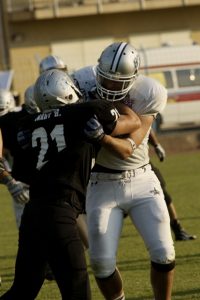
According to The Chicago Tribune, the teen suffered blunt force trauma to his head during a game and died the following day at a local hospital. The teen’s mother, as administrator of his estate, alleges there was an air bladder inside a helmet, and that this was intended to increase protection and reduce the risk of a head injury. However, this inflation device didn’t work properly, the complaint alleges. Not only is the manufacturer responsible for making a defective product, but the school district is responsible for allowing players to use a defective helmet, according to the filing.
The 17-year-old was reportedly blocked from making a tackle during one of the last plays of the high school football game in October 2015, and the block was delivered to the left side of his helmet. This amounted to incidental contact, and caused the teen’s head and helmet to slam to the ground with great force. Immediately after, the teen reported he was dizzy. He had a headache. Then he fell to the ground and suffered a series of seizures. He remained unconscious as he was rushed to the hospital. A CT scan revealed swelling and bleeding near his brain. He never regained consciousness and died the following day.
The helmet was later inspected and, according to the lawsuit, the air bladder on the crown of the helmet lost 50 percent of its pressure after five minutes, while the rear air bladder lost 10 percent of its pressure after just 10 minutes. Plaintiff alleges school district workers were aware the helmets had to be properly inflated in order to make sure there was a low risk of head injury for players, and yet failed in the duty to make sure each helmet had proper inflation. There is also an allegation that the district was negligent in not providing timely medical care to the teen immediately after his brain injury.
The product liability portion of the lawsuit alleges defendant manufacturer knew or should have known the helmets were unreasonably dangerous if the bladders weren’t inflated and the firm failed to warn about the potential hazard.
It should be noted that there is no federal product liability law, which means most of these cases are going to be based on state-law theories of negligence, strict liability or breach of warranty. There are also some commercial statutes in each state that could provide guidance on certain warranties that companies are required to offer and whether those were breached.
There are three basic types of product defects:
- Design defect. This is when there is some aspect of the design of a product that is fundamentally unsafe.
- Manufacturing defect. This is when a mistake happens in the course of a product’s manufacture or assembly.
- Marketing defect. This is when there are errors in the way a product is marketed or if there are insufficient instructions, inadequate warnings about safety or improper labeling.
Football is one – if not the most – dangerous sports for youth athletes and there has been a large push in recent years to make it safer. However, these efforts have failed to fully prevent concussions, head injuries, spinal cord injuries and others in this contact sport.
Product liability lawsuits can be complicated, but it basically comes down to the reasonable expectations of the consumer and whether the product lived up to those. If not, the plaintiff could be successful. Likely, the defense will assert the assumption of risk doctrine. That is, players assume some level of risk when they play a contact sport like this. However, that doesn’t mean every injury suffered on the field was inevitable. Some are the product of negligence.
If you have been a victim of a school-related injury in Miami, call Chalik & Chalik at (954) 476-1000 or 1 (800) 873-9040.
Additional Resources:
Mother sues helmet manufacturer after son dies from injury in football game, Oct. 20, 2016, By Nick Swedberg, Chicago Tribune
More Blog Entries:
Snapchat Video Shows Florida Driver Going 115MPH Just Before Crash Killed 5, Nov. 5, 2016, Miami Wrongful Death Lawyer Blog
The post Product Liability Lawsuit Against Helmet Manufacturer After Son’s Brain Injury Death first appeared on SEONewsWire.net.]]>
This sudden emergency doctrine includes medical events. The 1955 Florida Supreme Court case of Bridges v. Spear established the “sudden and unexpected loss of capacity” defense for when the operator of an automobile loses consciousness or becomes incapacitated. Those individuals aren’t typically negligent. However, they do need to show (per the 2010 state appellate court case of Abreu v. F.E. Dev. Recycling, Inc.,) that the loss of consciousness occurred before the negligent conduct, that it was sudden and that it was not foreseen/ foreseeable.
In a recent case out of Maryland, officials are trying to determine whether a bus driver who reportedly caused a bus accident that killed six people (including himself) and injured a dozen more may have suffered a medical emergency shortly before the collision. If that is the case, the question of foreseeability would almost certainly be raised as The Baltimore Sun reports the man told police following a crash two years ago that he was taking seizure medication.
Federal investigators have launched an investigation, as have local police. Preliminary analysis is that the school bus driver, with an aide aboard, was en route to pick up the first students that morning at around 6:30. For reasons unclear, the bus driver struck a passenger vehicle and then continued on another block before slamming into a metro bus. Both bus drivers and four metro bus passengers were killed.
There was no indication the bus driver applied the brakes prior to the crash, and it is believed he was speeding. The bus itself has passed mechanical inspections.
The school district ended the six-year contract it held with the busing contractor for whom the driver worked after it was revealed the driver had actually lost his commercial license because he had failed to produce records proving his physical fitness.
An analysis into his prior driving record showed a troubling history. Two years ago, he was reportedly involved in a collision while driving his personal vehicle. In that instance, with his wife as a passenger, he crossed the median into oncoming traffic, struck a guardrail, barreled over another median and then struck a cluster of trees. His wife disclosed to the investigating officer that he was taking medication for seizures. The accident report cited the driver’s “medical condition.”
Before that, he was sued in 2007 for $300,000 when another driver accused him of making a left turn in front of him. That case was later settled out-of-court. He lost another civil case for hitting a parked car in 2008. He also pleaded guilty in 2014 to failure to show a registration card and the following year for driving with a suspended registration. He also had $150 in unpaid traffic tickets from last year.
As personal injury lawyers, based on the facts we know so far, it seems there may be ample grounds to assert negligence claims against multiple entities, including:
- The school district;
- The bus company contractor;
- The estate of the driver.
Although school buses tend to be a relatively safe mode of travel, this kind of lack of oversight can lead to a serious risk of injury and, as we saw here, even death.
If you have been a victim of a traffic accident, call Chalik & Chalik at (954) 476-1000 or 1 (800) 873-9040.
Additional Resources:
School bus driver involved in crash took seizure medication; investigators rule out mechanical failure, Nov. 4, 2016, By Tim Prudente, The Baltimore Sun
More Blog Entries:
$35M Wrongful Death Verdict in Trucking Accident Lawsuit, Oct. 3, 2016, Miami Wrongful Death Attorney Blog
The post Report: MD Bus Driver in Fatal Crash Took Seizure Medication first appeared on SEONewsWire.net.]]>
We should start by explaining first of all that in the vast majority of personal injury cases, civil attorneys accept their payment on a contingency fee basis. That means they don’t require any money to be paid upfront by the client. Instead, the attorney is only paid if the client wins. In those cases, they have an arrangement to accept a portion of the damages awarded (usually about 30 percent, though it can vary depending on the complexity of the case). That said, there are some instances in which your attorney fees can be paid by the other party (you get to keep the entire damages awarded while the defendant pays your attorney). This is allowed per the aforementioned statute when a plaintiff extends an offer of settlement that is not accepted within 30 days and then goes on to win at trial for an amount that is in excess of that offer by 25 percent or more.
So that brings us to the Anderson case. He offered to settle for a collective $1.7 million and ultimately won $1.7 million at trial. However, the state supreme court ruled that he still qualified to have his attorney’s fees covered. To understand why, we have to delve a bit deeper into the facts of the case.
According to court records, plaintiff was attacked in a hotel parking lot by a man who robbed him, stole his car and shot him. He suffered severe injuries. He later sued the aforementioned defendants for negligence. Specifically, he alleged premises liability. The defendants had not ensured adequate security on site when there was a foreseeable risk of harm. His wife also filed claims for loss of consortium.
Plaintiff issued an offer for settlement to each of the defendants. Those offers were:
- $650,000 for the hotel;
- $650,000 for the hotel management;
- $100,000 for the hotel investor;
- $300,000 for the hotel security firm.
These offers were rejected. His wife also offered to settle and that offer too was rejected, though wife later agreed to voluntarily dismiss her claims.
The matter went to trial (twice, in fact, as the first trial ended in mistrial).
In the second trial, the hotel, management company and investment firm were collectively referred to as one entity: Embassy Suites. This was despite the fact that no such defendant was named in the complaint. Plaintiff never objected to this singular use and jurors in determining liability apportioned this singular entity with 72 percent liability, without spelling out how much each of those separate entities should pay. Embassy Suites was ordered to pay $1.25 million, while the security firm was ordered to pay $450,000.
Plaintiff then sought compensation for attorney fees. This request was turned down by both the trial court and the 5th District Court of Appeals. The reasoning was that plaintiff’s settlement offer didn’t meet the statutory criteria because damages awarded didn’t exceed 25 percent of his offer.
The Florida Supreme Court, however, disagreed. The court held that the entitlement to attorney’s fees hinges on the “judgment obtained,” as opposed to the verdict form read by the jury. The statute does not indicate that a plaintiff has to obtain a judgment from a designated party in order to be entitled to attorneys’ fees. The entitlement depends only on a sufficient offer and a judgment obtained. In this case, the court ruled, plaintiff made a sufficient offer. Further, the court agreed with legal reasoning from the 2nd DCA that held it improper to combine separate offers of settlement and then compare them to the judgment when determining a party’s right to attorneys’ fees.
Personal injury victims in Miami may call Chalik & Chalik at (954) 476-1000 or 1 (800) 873-9040.
Additional Resources:
Anderson v. Hilton Hotels Corp. , Nov. 3, 2016, Florida Supreme Court
More Blog Entries:
Police: Florida Drunk Driver Kills Tow Truck Driver, Oct. 18, 2016, Miami Personal Injury Attorney Blog
The post Anderson v. Hilton Hotels Corp. – Premises Liability Plaintiff Wins Attorney Fees on Top of $1.7M Damage Award first appeared on SEONewsWire.net.]]>
However, there is one big exception to the collateral source rule in Florida, and that is with regard to payments made by governmental agencies, such as Medicare or Medicaid. The general thinking is that while health or private insurance benefits are earned by a plaintiff with money from their own pockets – and shouldn’t be penalized for taking such initiative – those who obtain federal benefits as a matter of entitlement without actually earning it may not be entitled to the same protection.
In the recent case of Patchett v. Lee, the Indiana Supreme Court reached a similar conclusion. According to court records, the appeals court in this matter previously ruled that government reimbursement rates aren’t accurate reflections of the actual value of a health care service. However, the state supreme court reversed.
Plaintiff was injured in a crash for which the other driver admitted her negligent driving was the cause. However, the two parties disagreed on damages or, specifically, what was the reasonable value of plaintiff’s medical care.
Both parties agreed that Indiana laws permitted plaintiff to enter into evidence accident-related bills that totaled $88,000, and that was evidence those amounts were reasonable. However, they could not come to an agreement regarding whether defendant could introduce the reduced amount that was actually paid by the government-sponsored health care program – which amounted to a total of $12,000, which fully satisfied the outstanding balance at an 86 percent discount.
Plaintiff moved to prevent jurors from hearing this evidence, arguing that payments made by government insurers weren’t permitted under the state’s collateral sources rule. The court agreed, and also concluded that evidence of this would only serve to confuse the jurors. Although the court granted plaintiff’s motion, it certified an interlocutory appeal for review to the appellate court. The trial court stated that resolution of this issue was critical to the importance in this case – and others – concerning a jury’s determination of damages.
The appellate court affirmed the trial court’s grant of plaintiff’s motion, saying the reimbursed amount was indicative only of market negotiation, but wasn’t probative or reflective of the actual value of services.
Defendant appealed to the state supreme court, which reversed.
The court noted firstly that what is a “reasonable” amount for a health care service for personal injuries can be proved in a number of ways. One of those ways is to present medical bills that reflect charges for certain services. However, if one of the parties contests the reasonable amount of those charges, then there is going to be more to the story.
Common injury law precedent in Indiana held that the collateral source statute wouldn’t prohibit evidence of discounted amounts to determine what is a reasonable amount, so long as insurance isn’t mentioned. Where the trial court went wrong in this case was to assume this only meant that those amounts negotiated between a health insurance company and medical provider applied. For the first time, the court held, amounts paid by government-backed insurance may also be presented to the jury.
If you have been a victim of a traffic accident, call Chalik & Chalik at (954) 476-1000 or 1 (800) 873-9040.
Additional Resources:
Patchett v. Lee, Oct. 21, 2016, Indiana Supreme Court
More Blog Entries:
Schaefer v. Universal Scaffolding – Spoliation of Evidence in Construction Accident Lawsuit, Oct. 24, 2016, Car Accident Miami Lawyer
The post Patchett v. Lee – Collateral Source Rule Weighed first appeared on SEONewsWire.net.]]>
One of the notable exceptions, as outlined in F.S. 440.092(2), is the Coming and Going Rule. This rule stipulates that an injury that occurs while the worker is coming from or going to work is not an injury that “arises out of employment or in the course of employment.” The statute indicates this is true even when employer provides the transportation, so long as such transportation was available for the exclusive personal use by employee – unless the employee was engaged in some special mission or error for the employer. This doesn’t apply to law enforcement officers traveling in marked cruisers, unless they have made some distinct deviation for a non-essential, personal errand (unless the collective bargaining agreement allows for such deviations, in which case such an injury would be covered by workers’ compensation).
This coming-and-going rule is pretty well established across jurisdictions. Still, these matters continue to arise in courts across the country. Recently, Florida’s 1st District Court of Appeal weighed one such case, Quinn v. CP Franchising, in which a worker was injured in a parking lot fall at work.
According to court records, plaintiff tripped and fell in a parking lot that was next to her work. Photos later reviewed by the Judge of Compensation Claims showed that there was a separation between the asphalt of the parking lot and the concrete curb. These images reveal show this groove is present throughout the lot wherever the asphalt and concrete meet.
Based on this observation, the judge concluded there was no special danger that led to the accident. The question then was whether employer had a certain degree of control of the area in order for the parking lot to be considered part of the employer’s premises or whether it was an area was used by the employer for work-related purposes. Evidence revealed the parking lot wasn’t leased by the employer. The employer never assigned workers their own parking spaces in the lot. However, pursuant to its lease agreement, the company did receive three dozen unassigned parking spaces that workers could use, but they were not granted exclusive access. The company paid a fee to the landlord for maintenance of the common areas of the property and plaintiff didn’t present any evidence the employer had any control over the parking lot maintenance or even how the maintenance fee was applied.
Because the parking lot was open to the public and was not used by employees in a really different way and the employer didn’t use the lot for special purpose or have control over it, there was no exception to the general coming-and-going rule, and thus the worker was not entitled to collect workers’ compensation benefits for her injuries.
Although this was a disappointing outcome for this plaintiff, it’s important to consult with an experienced injury lawyer in Miami if you have suffered a work-related injury because the facts of each case vary and could result in a different result.
If you have been injured in a work accident in Miami, call Chalik & Chalik at (954) 476-1000 or 1 (800) 873-9040.
Additional Resources:
Quinn v. CP Franchising, Oct. 13, 2016, Florida’s 1st District Court of Appeal
More Blog Entries:
Police: Florida Drunk Driver Kills Tow Truck Driver, Oct. 18, 2016, Miami Injury Attorney Blog
The post Quinn v. CP Franchising – Coming and Going Rule in Workers’ Compensation Claims first appeared on SEONewsWire.net.]]>
According to the Union Leader, the student is looking to hold liable the school district and two of his former coaches. The school district had filed a motion to dismiss, and the judge denied this request. This ruling was reaffirmed upon a motion for reconsideration.
Plaintiff suffered a spinal cord injury during a preseason football practice in 2010 that rendered him quadriplegic. He was just 15-years-old at the time, and was a member of the school’s junior varsity team.
Today, he’s 21 and his entire life has been significantly altered.
Legal counsel for the school district continues to assert that recreational use statutes should allow the district to claim immunity. New Hampshire, just like Florida, has a recreational use statute. Governmental agencies as a rule have sovereign immunity from injury lawsuits, except where they have provided a waiver of liability in certain instances. In New Hampshire, those rules are spelled out in RSA 507-B:5. In Florida, the sovereign immunity waiver is spelled out in F.S. 768.28.
Florida’s recreational use statute, as codified in F.S. 375.251, states that owners or lessees of land who open it to the public for free and recreational use enjoy immunity for injuries suffered on that site. However, this statute primarily deals with premises liability. In this case, the school is accused of liability for failure to ensure the coaches gave instruction to players pertaining to the risk of serious injury if tackling was attempted without players keeping their heads up.
This practice marked the team’s first contact practice, wherein the team was wearing pads in their uniform. Plaintiff alleges that at no point was there any evaluation of whether plaintiff or others:
- Understood how to properly and safely conduct a tackle;
- Knew the critical importance of keeping one’s head up during a tackle;
- Was physically able to tackle.
Court records show the personal injury occurred the very first time plaintiff attempted a tackle in a drill against a running back. He put his head down and charged, colliding, head-on with the knee of the oncoming call barrier. As a result of the impact, plaintiff suffered a broken neck.
Plaintiff accuses the coaches and the school for negligent training and negligent supervision.
Although playing sports for a team is a key part of the school experience for many youth. However, there are some inherent risks of personal injury involved in certain sports. Generally speaking, coaches are not strictly liable for injuries, which means plaintiffs need to show negligence and – with regard to school districts – overcome assertions of sovereign immunity. Whether an injury is compensable will depend on a number of factors, including:
- Whether the athlete signed a waiver of liability;
- What level of involvement the school district had in organizing/ overseeing the sport;
- What degree of training the coaches had;
- What degree of training coaches gave to students.
We may also look to see whether the school district or property owner had an insurance policy that would cover student athlete injuries incurred in the accident.
If you have been a victim of a traffic accident, call Chalik & Chalik at (954) 476-1000 or 1 (800) 873-9040.
Additional Resources:
Judge reaffirms ruling not to dismiss paralyzed football player’s lawsuit against Nashua School District, coaches, Oct. 18, 2016, By Kimberly Houghton, Union Leader
More Blog Entries:
No Child Injuries in Miami School Bus, Man Hospitalized, Sept. 29, 2016, Miami Child Injury Lawyer Blog
The post Student Paralyzed at Football Practice Can Continue Lawsuit first appeared on SEONewsWire.net.]]>
To be clear: Employees generally cannot sue their employers for work-related injuries. The exclusivity provision of Florida’s workers’ compensation law stipulates that workers’ compensation is the sole remedy for injured and ailing workers harmed on-the-job. However, some courts have ruled this exclusivity provision doesn’t apply to claims of spoliation of evidence, which are separate from workers’ compensation claims. Neither do exclusivity provisions apply to third parties. This is important because third party claims, while typically more challenging than workers’ compensation cases, can be far more lucrative. That’s because workers’ compensation does not allow a plaintiff to collect for damages such as pain and suffering, mental/ emotional anguish or loss of consortium. Third-party claims do.
Spoliation of evidence occurs when one party intentionally destroys, loses, withholds, alters, hides or fabricates evidence that is relevant to the legal proceeding at hand.
Some examples of spoliation of evidence on a job site:
- Erasing work time logs or general ledgers.
- Destroying work orders.
- Destructive testing of equipment/ machines involved in the accident.
- Scraping accident equipment.
- Losing work orders that showed costs, production, quotes and pricing.
- Confiscating and then losing equipment alleged to have failed.
In the recent case of Schaefer v. Universal Scaffolding & Equipment, plaintiff was injured when a metal beam fell on his head as he was helping to erect scaffolding sought compensation from a third party. According to documents from the U.S. Court of Appeals for the Seventh Circuit, worker was employed by a contractor hired to erect scaffolding on site at an energy plant. However, the components of the scaffolding, supplied by a third party, were proving a serious problem. Several of the pieces were too small and they didn’t lock properly into place. A supervisor ordered the defective pieces set aside and the work continued.
Then one day in November 2008, while plaintiff was helping on the scaffolding job when a three-foot bar popped out of one of its cups and fell onto decedent’s head, seriously injuring him. He successfully filed for a workers’ compensation claim. He later filed a claim against the product manufacturer/ supplier, but then it was revealed the actual beam that struck him was missing. It had been lost by power plant employees. Plaintiff filed a separate injury lawsuit for spoliation of evidence.
District court granted summary judgment to defense on the grounds that without that lost piece of equipment, plaintiff couldn’t prove he would have won his case and therefore, he couldn’t show he’d suffered any loss by defendant’s failure to preserve it.
The 7th Circuit reversed on the spoliation issue. Although the court disagreed with plaintiff that he had sufficient evidence to prove the bar was defective (the mere fact an accident occurred doesn’t establish causation), the court did find plaintiff had sufficient evidence of negligent spoliation. That is, a reasonable jury could find there was:
- A duty to preserve that evidence;
- A breach of that duty by loss of evidence;
- The loss proximately causing plaintiff’s inability to prove his claim;
- Actual damages resulting.
If you have been injured in a construction accident, our experienced Miami injury lawyers can help.
If you have been a victim of a traffic accident, call Chalik & Chalik at (954) 476-1000 or 1 (800) 873-9040.
Additional Resources:
Schaefer v. Universal Scaffolding & Equipment, Oct. 7, 2016, U.S. Court of Appeals for the Seventh Circuit
More Blog Entries:
Product Liability Lawsuit Alleges Apple Had Tech to Prevent Distracted Driving, Oct. 1, 2016, Miami Injury Lawyer Blog
The post Schaefer v. Universal Scaffolding – Spoliation of Evidence in Construction Accident Lawsuit first appeared on SEONewsWire.net.]]>
In some situations, punitive damages may be appropriate. Punitive damages are paid to the patient, but they are intended to punish the defendant for egregious wrongdoing. Punitive damages typically won’t be awarded unless a patient can show the doctor engaged in behavior that was especially reckless or intentional. That can be very difficult to prove in these cases, but it’s not impossible. An example might be a physician with a struggling practice who treats a patient in a way that will require extensive follow-up treatment/ procedures that otherwise would be unnecessary. In that instance, it’s not simply a mistake – it’s intentional harm. Punitive damages send a clear message to other health care providers: They will pay a steep price for being reckless or putting profits before the well-being of patients.
In the recent case of McColl v. Lang, plaintiff sought to hold a health care provider accountable for causing an infected, third-degree burn on her nose after she underwent a treatment that involved use of a black salve to treat a blemish.
According to court records from the Montana Supreme Court, defendant is a licensed naturopathic doctor. Plaintiff visited defendant for a thyroid problem and also to talk about a blemish on her nose and her desire to have it removed. The physician applied a “black salve,” which was an escharotic agent. He sent her back home with instructions for care and to return for a follow-up. At the follow-up visit, defendant applied more of the salve to plaintiff’s nose.
A few days later, she rushed to a local urgent care center for pain, swelling and burning of her nose. She was treated for an infected, third-degree burn on her nose. Because it ultimately left a large, unsightly scar on her nose, she underwent plastic surgery. In order to remain scar-free, plaintiff has to undergo surgical injections every six months.
Plaintiff sued her doctor for medical malpractice, alleging the salve was not an approved drug and its marketing violated federal law and that the U.S. Food & Drug Administration (FDA) had four years earlier identified it as a phony cancer cure. Consumers were warned not to use it. Defendant argued the FDA’s warnings were prejudicial because the allegation in the complaint centered on the practice of medical care – not the marketing, manufacturing or sale of the medical product. What’s more, defendant never claimed he was curing cancer. The court agreed to exclude evidence of the FDA warning.
However, the court did not exclude plaintiff’s expert witness.
At trial, jurors found the doctor had deviated from the applicable standard of care. Jurors awarded $140,000 in damages, plus costs, for a total of $145,000.
Plaintiff appealed on grounds the court improperly denied the FDA evidence, which resulted in a rejection of her punitive damage award request. She asked for a new trial based on the punitive damage award issue.
The Montana Supreme Court affirmed, finding trial court did not abuse its discretion in excluding the FDA evidence and the denial of punitive damages was proper.
If you have been a victim of a traffic accident, call Chalik & Chalik at (954) 476-1000 or 1 (800) 873-9040.
Additional Resources:
McColl v. Lang, Oct. 11, 2016, Montana Supreme Court
More Blog Entries:
In re Estate of Woody v. Big Horn County – State Supreme Court Reverses Rejection of Wrongful Death Lawsuit, Aug. 19, 2016, Miami Medical Malpractice Lawyer Blog
The post McColl v. Lang – Punitive Damages in Medical Malpractice Lawsuits first appeared on SEONewsWire.net.]]>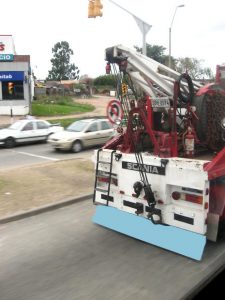
According to The Tampa Bay Times, the driver was preparing to load up the last of the three cars when a brand new Honda Ridgeline truck came barreling toward him. The truck slammed into the shoulder, struck the worker and his truck. Investigators say the 44-year-old driver of that Ridgeline was intoxicated, and admitted to driving drunk. Victim died at the scene. Authorities arrested the suspected drunk driver on charges of DUI manslaughter. Decedent was survived by a wife and 11-year-old daughter.
Tow truck drivers have a notoriously dangerous job. Earlier this year, also in the Tampa area, a 36-year-old woman was arrested for allegedly hitting a tow truck driver on the Howard Franklin Bridge in February, leaving him there to die alone. The tow truck driver had been out that night and stopped around 2:20 a.m. to assist two stranded motorists. He was a married, 43-year-old father. The suspect was arrested days later, telling authorities she knew she’d hit someone, but was too afraid to stop and help. Investigators say she has a long history of DUI arrests and convictions.
Our experienced Miami drunk driving accident lawyers know that impaired drivers are one of the main threats to road workers and emergency responders on the highway. That and speeding motorists – particularly in construction zone – are a major hazard. That’s one of the reasons the state passed a “Move Over Law,” codified in F.S. 316.126 that requires any motorist approaching an authorized emergency vehicle (including tow trucks, and in addition to utility service vehicles, sanitation vehicles and wreckers) to vacate the lane closest to that vehicle.
Since 2010, all 50 states (but not the District of Columbia) have some type of move-over law, and 44 of those have approved new measures or improved existing laws since that time.
Yet these type of accidents still occur far too frequently.
The Emergency Responder Safety Institute reports an average of six-to-eight fire rescue and EMS workers are killed in or near moving traffic annually. The same goes for 10 to 12 police officers, as well as 50 tow truck operators. It’s not clear how many of those are struck due to move-over violations or how many are related to other offenses.
Others who work on or along the highway are extremely vulnerable too. Vehicles are typically driving past at high speeds and there is often no barrier between the workers and the roadway. The U.S. Department of Transportation (DOT) reports in 2013, there were almost 68,000 crashes that occurred in work zones. Although most of those don’t result in a fatality, 15 percent resulted in a possible injury, 9 percent in a non-incapacitating injury, 2.5 percent in an incapacitating injury and 0.4 percent in a fatal injury.
In many cases, an experienced injury attorney can help grieving families obtain the compensation they deserve, both through workers’ compensation claims and third-party litigation of others who may be responsible.
If you have been a victim of a traffic accident, call Chalik & Chalik at (954) 476-1000 or 1 (800) 873-9040.
Additional Resources:
Troopers: Tow truck driver hit, killed by drunk driver on I-75, Oct. 9, 2016, Fox 13 News
More Blog Entries:
Restaurant Forfeits Liquor License After Over-Serving Driver, Aug. 2, 2016, Miami Drunk Driving Accident Lawyer Blog
The post Police: Florida Drunk Driver Kills Tow Truck Driver first appeared on SEONewsWire.net.]]>
Plaintiff, then 71-years-old, was hit by the cart and tossed about four feet. She landed against a display shelf, striking her head and causing her to suffer head and neck injuries.
In a personal injury lawsuit she filed two years later, plaintiff accused the store of not giving customers an adequate amount of instruction on how to use these motorized carts, which are offered to mobility-impaired customers free-of-charge. The lawsuit alleges the company displayed a long history of corporate negligence specifically with regard to these motorized carts. In other words, this was not a one-time, freak accident that the company couldn’t have anticipated. In fact, plaintiffs alleged, this hazard was reasonably foreseeable based in large part on the fact there were nearly 120 similar accidents involving motorized carts at the chain’s stores throughout the Northeast.
The complaint asserted the company knew, either because of actual knowledge or through knowledge that was implied from the circumstances and facts, that by allowing customers to be entrusted with the operation of these motorized vehicles without any experience, training or instruction, it was foreseeable that innocent, third-party bystanders were going to be placed at unreasonable risk of injury.
The company denied all allegations and refused to settle the case, which is why the case went on to trial. Jurors not only determined the grocery store chain was negligent, they awarded $120,000 in compensatory damages and $1.2 million in punitive damages. Compensatory damages are intended to make the company whole again, while punitive damage are intended to penalize defendant/ deter such action in the future.
The Plain Dealer did not indicate whether the company had any plans to appeal the verdict, though our injury lawyers would speculate that it’s likely.
Shopping cart injuries in general are surprisingly common, though the vast majority of these incidents involve young children. The New York Times reported in 2014 on a study published in the journal Clinical Pediatrics that detailed how 66 children every single day were treated in hospital emergency rooms for shopping cart injuries. That was between 1990 and 2011. The vast majority of those children were under the age of 4 who fell out of the cart. Nine out of 10 of these injuries were wounds to the head. Other incidents included:
- Carts tipping over;
- Being run over by a cart;
- Falling over a cart;
- Becoming entrapped in a cart.
Over the course of two decades, nearly 17,000 children suffered shopping cart injuries that were serious enough to warrant their admission to a hospital.
In 2004, the shopping cart manufacturing industry introduced voluntary safety standards. However, The New York Times reported the number of injuries hasn’t gone down since then.
Again, these figures only refer to children injured by non-motorized carts. Although it doesn’t seem there are any long-term studies on motorized shopping cart injuries, this certainly isn’t the first time it’s happened. Wal-Mart was sued last year by a woman who alleges a motorized shopping cart machine near the entrance of the store pushed a line of carts into her, causing her to be injured. She’s seeking more than $50,000 in damage.
In these cases, showing that the company was aware of a potential safety issue or should have anticipated it will be key to success.
If you have been a victim of a traffic accident, call Chalik & Chalik at (954) 476-1000 or 1 (800) 873-9040.
Additional Resources:
Cleveland woman wins $1.3 million lawsuit against Giant Eagle for motorized shopping cart injury, Oct. 7, 2016, By John Harper, Cleveland.com
More Blog Entries:
Concert Injury Lawsuit Filed Against Snoop Dogg, Wiz Khalifa, Venue, Aug. 28, 2016, Miami Premises Liability Lawyer Blog
The post $1.3 Million Awarded for Shopping Cart Injury first appeared on SEONewsWire.net.]]>
Vicarious liability – holding accountable one entity for the actions of another – can be asserted when there is an employer-employee relationship under the legal doctrine of respondeat superior, Latin for, “Let the Master Answer.” If the employee is acting in the course and scope of employment at the time of the alleged malpractice, the employer can be held accountable. However, where the doctor is an independent contractor, the hospital/ facility can’t be liable for malpractice (usually). However it’s important to point out there could be two key exceptions:
- The doctor was misclassified as an independent contractor and is actually an employee. This can be proven in a number of ways, including an examination of the kind of oversight the facility had over the doctor’s schedule, work, pay, etc.
- The doctor/ hospital/ facility held the doctor out to patients to be an employee/ agent of the facility. In these cases, it doesn’t matter what the actual relationship was. Instead, it matters what the patient reasonably believed. This could be determined by whether the doctor wore the hospital logo, if the doctor had business cards with the hospital’s logo, whether the hospital specifically informed the patient of the doctor’s independent contractor status.
Our Miami medical malpractice attorneys know that while there is no bright-line rule for this, plaintiffs bear the burden of proof and such assertions can be challenging – though certainly not impossible.
In the recent case of Markow v. Rosner, an appeals court in California was asked to consider whether a plaintiff’s presumption of hospital employment of a negligent doctor was reasonable, and thus allowed the hospital to be held vicariously liable.
According to court records, plaintiff sought treatment from a renowned doctor in the region because he was suffering serious and chronic pain following a major car accident. The doctor was in fact employed at a local pain clinic, but was an independent contractor for a local hospital. The doctor’s business cards had the hospital logo and his website didn’t mention his private practice. However, when patient was slated to undergo surgery, he was given a form to sign indicating he understood the doctor was an independent contractor. This provision was in bold letters.
Patient underwent risky spinal surgery and awoke in tremendous pain on his face that ultimately spread throughout his body over the course of the next week. His condition deteriorated, ultimately rendering him quadriplegic and hospitalized for two years.
Plaintiff sued the doctor for negligence and the hospital for vicarious liability. Jurors ultimately found both the doctor negligent and the hospital vicariously liable because patient reasonably believed the doctor to be an employee of the hospital. He was awarded $5.2 million. The appellate court reversed in part and affirmed in part. The doctor was negligent, the court ruled, but the hospital was not vicariously liable because the doctor was not an employee of the hospital and plaintiff did not have reasonable grounds to believe that, given the consent form he signed that clearly informed him of the contrary. As such, his damages will be reduced by 40 percent, or the amount of the hospital’s liability.
If you have been a victim of Miami medical malpractice, call Chalik & Chalik at (954) 476-1000 or 1 (800) 873-9040.
Additional Resources:
Markow v. Rosner, Oct. 4, 2016, California Court of Appeals, Second Appellate District, Division One
More Blog Entries:
No Child Injuries in Miami School Bus, Man Hospitalized, Sept. 29, 2016, Miami Medical Malpractice Lawyer Blog
The post Markow v. Rosner – Vicarious Liability in Medical Malpractice Lawsuits first appeared on SEONewsWire.net.]]>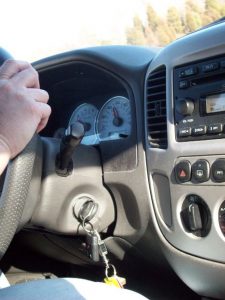
Like with any civil litigation, product liability lawsuits require careful examination not just of the injuries sustained and the cause, but whether the vehicle was in fact defective. People are injured and killed all the time on our roads, and it doesn’t necessarily mean there was a problem with the car itself. Proving vehicle defects – even when there has been a recall of that vehicle or a certain part – often requires the testimony of an expert witness, such as an accident reconstructionist, engineer or mechanic.
For years in Florida, we vetted the testimony of these witnesses under a set of guidelines known as the “Frye Standard.” This standard asked simply whether the expert opinion was based on a scientific technique that was generally accepted as reliable in the relevant scientific community. However, a law that became effective in 2013 (to the delight of civil lawsuit defendants) required instead that the state begin using the Daubert standard. The revision of F.S. 90.702 means that expert witnesses now must endure a significant amount of pre-trial scrutiny, which in turn has made it tougher for plaintiffs to succeed in getting their case to trial. However, the Florida Supreme Court is currently weighing whether to revert back to the Frye Standard (a power it has, despite the legislative action, because it involves court procedure).
Texas, too, uses the Daubert standard, and as we saw in the recent case of Sims v. Kia Motors Corp., before the U.S. Court of Appeals for the Fifth Circuit, it can result in significant hurdles for plaintiffs in car accident lawsuits.
According to court records, decedent (a father and grandfather) was seated in the back seat of a 2010 Kia Soul when the driver collided with another vehicle. The force of that impact caused the vehicle to be tossed like a pinball across the intersection, slamming into various objects in its path. One of those objects was a Yield sign. Part of that sign got stuck underneath the vehicle and pierced the gas tank. When the vehicle came to a stop, the driver and front seat passenger got out safely. But decedent two other passengers in the back were trapped because the doors wouldn’t open. With the gas tank ruptured, it exploded and the vehicle burst into flames. The three passengers died in the fire.
Plaintiff, one of decedent’s sons, sued the car manufacturer, alleging defective design. He asserted the manufacture should have made a gas tank that wasn’t prone to explosion and further that if a fire in the gas tank does occur, the vehicle doesn’t immediately explode so the people inside have a chance to get out.
Plaintiff presented the testimony of two expert witnesses to back his claim, both engineers. One was to testify about the way in which the sign pierced the underside of the vehicle and the other who would assert there was a doable, safer alternative design that would have prevented this kind of deadly fuel tank rupture. Defense moved to exclude these testimony under the Daubert standard, arguing it was not reliable.
The trial court granted that motion and plaintiff appealed. The 5th DCA affirmed. In keeping in line with the Daubert standard, the court ruled, the expert witness testimony was inadequate. Without that expert witness testimony, plaintiff did not have enough evidence to take the case to trial.
If you have been a victim of a traffic accident, call Chalik & Chalik at (954) 476-1000 or 1 (800) 873-9040.
Additional Resources:
Sims v. Kia Motors Corp., Oct. 5, 2016, Miami Car Accident Lawyer Blog
More Blog Entries:
$35M Wrongful Death Verdict in Trucking Accident Lawsuit, Oct. 3, 2016, Miami Car Accident Lawyer Blog
The post Sims v. Kia Motors – Expert Witness Testimony Scrutinized in Fatal Crash Case first appeared on SEONewsWire.net.]]>

This phenomenon of course has become extremely popular in nursing home injury lawsuits across the country. What’s been happening is nursing homes, as a condition of admission, require residents or their family members to sign arbitration agreements in which they forfeit the right to have any future disputes heard in court. There are many advantages to this for the nursing home. Arbitration is not public, for starters, so nursing homes aren’t risk damaging their reputation. Arbitrators are often on contract with certain companies, and they tend to issue decisions favoring the business that’s driving their income. Even when they do issue damage awards, arbitration damage awards tend to be a lot lower than what is issued by juries. On top of that, arbitrators don’t even technically have to follow the law. There are very few benefits to arbitration for nursing home plaintiffs, which is why so many are battling it out in court, trying to find ways to have their case heard by a judge rather than an arbitrator.
Now comes the case of Mendez v. Hampton Court Nursing Center, LLC, which was an appeal from a decision handed down by justices with the Third District Court of Appeal.
According to court records, the Miami-Dade case involved a contract that was signed back in 2009 by plaintiff when his father was admitted to the nursing home. Part of that contract indicated that if there were legal disputes regarding nursing home abuse or negligence, they would be handled by an arbitrator, rather than going to court and possibly being weighed by a jury.
Two years after the father was admitted to the nursing home, he suffered an infection that required the removal of one of his eyes. Later, his son filed a nursing home injury lawsuit against the facility on his father’s behalf. However, the nursing home fired back with a motion to compel arbitration. Plaintiff’s father died in 2013, but the case continued.
A circuit judge and later the 3rd DCA sided with the nursing home, finding the case should go to an arbitrator. However, in a 5-2 decision handed down by the Florida Supreme Court, justices decided the arbitration agreement wasn’t valid because it was signed without the father’s agreement. The court reasoned that it does not enforce contracts when one party only agrees out of duress or threat. By that same logic, it should not enforce a contract that lacks the party’s agreement altogether.
Dissenting opinions from two justices, however, sharply disagreed with this, saying the opinion by the majority “obliterates longstanding Florida contract law.” They indicated that even though the father lacked the capacity to give informed consent and the son did not have power of attorney, he signed the admission agreement as his father’s representative. However, the majority reasoned the father’s mental capacity doesn’t matter in this case. Had the nursing home wanted to do so, it could have petitioned the court for an adjudication to find the father incapacitated and then have the court appoint a representative who then could have signed.
If you have been a victim of a traffic accident, call Chalik & Chalik at (954) 476-1000 or 1 (800) 873-9040.
Additional Resources:
Mendez v. Hampton Court Nursing Center, LLC, Sept. 22, 2016, Florida Supreme Court
More Blog Entries:
Suing Employer for Driving Negligence of Employee, Sept. 22, 2016, Miami Nursing Home Abuse Lawyer Blog
The post Florida Supreme Court: No Arbitration in Nursing Home Injury Lawsuit first appeared on SEONewsWire.net.]]>
The jury in Dallas County determined the trucking company was 90 percent liable for the family’s damages, while the truck driver was 10 percent responsible. The head-on collision happened in February 2015. The 42-year-old registered nurse was on her way to visit a hospice patient when an 18-wheeler traveling the opposite directions slid across the highway and slammed into her vehicle. She died instantly.
It was later revealed that the large truck had no snow chains on it tires. Now, those of us here in Miami might not be familiar with snow chains, but long-distance truckers who travel cross-country should have a good idea. These devices are chains that can be affixed to one’s tires in order to improve traction and control in icy, snowy road conditions. Testimony and evidence presented at trial showed the company did have snow chains at the terminal, but the truck driver did not seek them out or use them the morning of the accident.
According to The News Journal, the crash occurred around 9:30 a.m. one February morning in 2015.The truck driver was assigned to pick up office supplies from a terminal in Dallas and drive them to a suburb about an hour or so away. He knew the conditions of the road were bad that morning because he had driven himself to the terminal. It’s not clear whether he knew there were snow chains available or whether he’d been trained to use them.
Truck drivers need to know that in inclement weather – snow, ice, fog, rain or high winds – these are scenarios for which they must be prepared. That means their vehicles have to be properly loaded and have the right equipment. Drivers need to be adequately trained and not pushed to operate the vehicle in unsafe conditions or at unsafe speeds. It’s not lost on our Miami truck accident lawyers that snow chains on tires reduce the maximum speed a vehicle can go, which most likely has something to do with why drivers weren’t encouraged to use them. The faster each haul can be delivered the more deliveries can be made and the more money these trucking companies can make.
The fact is, bad weather is simply not an excuse for a tractor-trailer accident. That’s because section 392.14 of the Federal Motor Carrier Safety Regulations (FMCSRs) clearly states that, “extreme caution in the operation of a commercial motor vehicle shall be exercised when hazardous conditions exist.” The rule makes it very clear that weather it’s foggy, misty, rainy, dusty, smokey, snowy, icy or otherwise slippery, commercial drivers “shall use” extreme caution. That means either significantly reducing the speed of the rig or even stopping if necessary. It also means taking appropriate precautions to ensure the rig is in good shape before even heading out into bad weather. In some cases, it could even mean not driving at all until the storm/ poor conditions pass. In fact, the FMCSR specifically states that if the conditions become sufficiently dangerous while the trucker is driving, the operation of the truck “shall be discontinued” and shouldn’t resume until safe operation is possible.
If you have been a victim of a traffic accident, call Chalik & Chalik at (954) 476-1000 or 1 (800) 873-9040.
Additional Resources:
Jury awards $35M to family of hospice nurse killed in icy crash with 18-wheeler, Sept. 7, 2016, By Caleb Downs, The Dallas Morning News
More Blog Entries:
No Child Injuries in Miami School Bus, Man Hospitalized, Sept. 29, 2016, Miami Truck Accident Lawyer Blog
The post $35M Wrongful Death Verdict in Trucking Accident Lawsuit first appeared on SEONewsWire.net.]]>
Now, a federal lawsuit against Apple asserts the company filed a patent back in 2008 for a technology feature that would lock out a driver’s phone with certain sensors to determine when the phone was moving and in use by a motor vehicle driver. The theory goes that Apple is liable because it could have prevented certain functions, like texting, and yet chose not to do so. In that patent filing, Apple indicates that the technology was needed because texting behind the wheel had become so widespread and law enforcement had been ineffective at curbing it. The application even went so far as to say that teens especially were vulnerable to risk, and evidence had shown that while teens know it’s dangerous, it doesn’t stop them from doing it.
So the big question then becomes: Then why wasn’t Apple using this technology?
Car accident deaths have risen to levels we haven’t seen since the 1960’s. The distraction of drivers is a huge part of this problem. So now this lawsuit asks whether Apple had a responsibility to install this technology because it clearly knew drivers would be using their phones for texting and yet failed to stop them – specifically, this woman – from using this feature, resulting in harm to the victims.
Legal analysts have largely concurred that plaintiffs are unlikely to prevail in this action. In order for that to happen, they’d have to show the use of the iPhone specifically caused this fatal accident. Defendant driver was arrested and later convicted of negligent homicide, sentenced to five years of probation. Her criminal defense lawyer says she now drives with her phone in the back seat of her vehicle. But must it really take causing a double fatal accident and paralyzing a young child for life to get drivers to put down their phones? And if so, why don’t phone companies like Apple use the technology they have to prevent these tragic accidents that are known to be happening each and every day in this country?
Apple, AT&T, Verizon and other communication firms have come out with warnings, cautioning people against using their phones while driving. They also concede the laws intended to stop this practice are not working. What legal experts say this shows is an acknowledgement that their products pose foreseeable danger and are routinely being used for illegal and and sometimes fatal activity.
As a spokeswoman for the National Safety Council has said, while the technology is easily available, it’s not used because phone companies, “Don’t have the stomach” to do so. They fear losing their customer base. Meanwhile, families are continuing to lose their loved ones.
If you have been a victim of a traffic accident, call Chalik & Chalik at (954) 476-1000 or 1 (800) 873-9040.
Additional Resources:
Phone Makers Could Cut Off Drivers. So Why Don’t They? Sept. 24, 2016, By Matt Richtel, The New York Times
More Blog Entries:
Court: Companies Can’t Dictate Own Rules for Worker Injuries, Sept. 26, 2016, Miami Car Accident Lawyer Blog
The post Product Liability Lawsuit Alleges Apple Had Tech to Prevent Distracted Driving first appeared on SEONewsWire.net.]]>
NBC-6 reported the incident occurred underneath Florida’s Turnpike, on SW Coral Reef Drive near SW 152nd Street. The bus apparently flipped on its side, yet miraculously, none of the nine children aboard, ages 6 and 7, were injured. They were each wearing seat belts. It’s not clear if this was a newer bus or if the bus had been retrofitted with seat belts, as this is not a standard feature.Authorities say a pickup truck driver was at-fault for the incident, in which he turned in front of the bus, which had the right-of-way and t-boned the truck. The bus subsequently flipped over. The collision is under investigation.
Although school buses tend to be touted as safe, there have been a fair share of bus accidents in Miami over the last year.
Among those:
- One person critically injured earlier this month in a school bus accident near Northwest 199th Street and 39th Court where the bus collided with a small passenger car. No students were on board at the time;
- Five people hospitalized in a bus crash in April on Northwest 17th Ave. and Northwest 46th Street when a bus, carrying six people, struck an 18-year-old driver of a sport utility vehicle who allegedly made an improper left turn;
- A bus driver died and a car occupant was injured in April when the driver, transporting a college baseball team from Virginia, lost consciousness due to a medical emergency, crashed into a car and then slammed into a tree near U.S. 1.
The National Highway Traffic Safety Administration (NHTSA) has decided against seat belts on school buses, even though seat belts have been required in passenger vehicles since 1968. However, small school buses that weigh 10,000 pounds or less do have to be equipped with either a lap or lap/shoulder belts at all designated seating positions. The agency has stood firm in its position that compartmentalization on school school bus is effective at protecting children and the presence of seat belts on larger buses had no impact. However, schools and states are not forbidden from purchasing buses equipped with seat belts, and they don’t seem to hurt.
A May 2016 report by the NHTSA on school bus crashes revealed that between 2005 and 2014, there were 1,332 people of all ages killed in school-transportation-related crashes. That’s an average of 133 annually – and that includes people who were not on the bus, meaning pedestrians as well as people in other vehicles. The total number killed included 304 school-age children, of whom 53 were school bus occupants. Most were occupants of other vehicles or pedestrians or bicyclists.
In most school bus accidents involving school-aged pedestrians, the most common time was between 7 a.m. and 8 a.m. and 3 p.m. and 4 p.m.
Although school buses are reported to be seven times safer than passenger vehicles or light trucks, there is still the risk of an injury. These cases can be more complicated than other types of injury lawsuits because they typically involve a school district – a governmental entity – as a defendant. That means plaintiffs have to overcome assertions of sovereign immunity and other challenges. Our Miami bus accident attorneys can help.
If you have been a victim of a traffic accident, call Chalik & Chalik at (954) 476-1000 or 1 (800) 873-9040.
Additional Resources:
Kids Walk Away From Bus Crash In Miami-Dade, Sept. 15, 2016, By Gary Nelson, Miami NBC Local
More Blog Entries:
Carter v. Reese – Good Samaritan Act Can Limit Liability, Sept. 6, 2016, Miami Bus Accident Lawyer Blog
The post No Child Injuries in Miami School Bus, Man Hospitalized first appeared on SEONewsWire.net.]]>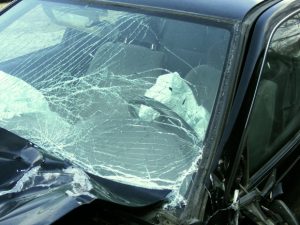
That’s because Florida recognizes several scenarios in which an employer can be held responsible for the negligent actions of an employee. Those would include:
- Vicarious liability, based on respondeat superior doctrine (regardless of whether the company was actually negligent);
- Vicarious liability based on ownership of the vehicle and the dangerous instrumentality doctrine (again, regardless of whether the company was actually negligent)
- Direct liability based on theories such as negligent hiring, negligent retention, negligent training, etc.
It’s worth noting that the employee need not necessarily be a driver for a living. If the individual is carrying out a task that at least in part benefits the company – or is driving a company vehicle – the company could be liable.
There may be exceptions, however, and the courts will consider a number of factors to determine whether the at-fault driver was in fact acting in the “course and scope of employment” (which is the same test used to determine whether an injury qualifies for workers’ compensation).
Recently, the California Court of Appeals, First Appellate District, Division Two, weighed the case of Jorge v. Culinary Inst. of Am. to determine whether a culinary school could be held liable for the negligent driving of one of its chef instructors, who failed to yield to two teenage pedestrians, striking them and causing serious personal injuries. There was little doubt the driver was at-fault – but was he acting in the course and scope of employment? The employer argued there was no evidence of this and sought summary judgment before the case went to trial. The trial court denied it, and the case went before a jury.
Those jurors were told about how the day of the accident, defendant driver drove his personal vehicle to his job as a culinary instructor. He parked his vehicle and worked his shift, never accessing his vehicle during his work day. As he drove home, he did have two of his dirty chef jackets in the vehicle, as well as a set of knives. However, there was no indication he was transporting those items for any specific work purpose or that the school had instructed him to do so.
After defendant driver hit the two pedestrians, a legal representative for the 14-year-old boy, who sustained severe and permanent personal injuries, filed a lawsuit against not just the driver, but also his employer, alleging vicarious liability based on the respondeat superior doctrine. The phrase “respondeat superior” is Latin for, “Let the Master Answer.” However, the school argued there was no grounds on which to assert such a claim, as the instructor hadn’t been working or acting in the scope of employment.
Jurors disagreed. The trial was bifurcated, with liability issues tried first. Jurors found both the driver and the school at-fault. Driver settled his portion for $30,000. The issue of damages against the school proceeded to a second trial, where jurors awarded nearly $900,000.
The appellate court reversed. The issue wasn’t whether the boy was seriously injured, but rather whether the school could be vicariously liable for the negligence of their employer. In this case, the court ruled, the answer to that is no because the instructor was not doing anything at the time of the pedestrian accident to further the interests of the school. He was simply commuting home. The coming-and-going rule in most instances holds that workers traveling to and from their job are not acting in the course and scope of employment.
If you have been a victim of a traffic accident, call Chalik & Chalik at (954) 476-1000 or 1 (800) 873-9040.
Additional Resources:
Jorge v. Culinary Inst. of Am. , Sept. 16, 2016, California Court of Appeal, First Appellate District, Division Two
More Blog Entries:
Burger King Corp. v. Lastre-Torres – Third-Party Liability for Florida Work Injury, Sept. 18, 2016, California Court of Appeals, First Appellate District, Division Two
The post Suing Employer for Driving Negligence of Employee first appeared on SEONewsWire.net.]]>
Consumers were advised to immediately stop using the phones and power them down. These pertain to all Galaxy Note 7 phones purchased prior to September 2016. The manufacturer is reportedly offering free of charge a new Galaxy Note 7 with a different battery, or alternatively a full refund or a different replacement device.
As CNNMoney reported, this has left a lot of users in an odd place. That’s because many stores don’t have enough replacement devices yet. On the one hand, customers like their phones and certain features – like the stylus that allows them to copy-and-paste. The store offered them a “loaner” phone until it could get a replacement Note 7, but that loaner lacked many of the same features as the newer model. Some customers opined on Twitter that it would great if they could get a new phone that “doesn’t double as a hand grenade.” Another user stated that leaving his Note 7 on the charger each night, “Makes me appreciate each day like it might be my last.”
Joking aside, these devices reportedly have the potential to cause some real damage and serious personal injury.
The defective battery issue was reportedly acknowledged by the firm just a few weeks prior to the issuance of the formal recall. The devices were first unveiled in mid-August, though it became clear not long after there were major problems, despite mostly positive reviews on its design, battery life, speed and features. Soon after, social media began trending with reports, images and videos of the phones exploding or catching fire.
A recall like this is especially troubling because smart phones have become such an integral part of our everyday lives. They are with us almost everywhere we go – and even by our bedside tables at night. The Pew Research Center reported in 2015 that nearly 70 percent of U.S. adults have a smartphone, which is double the 35 percent who said they had a smartphone in 2011. In certain groups, it’s even higher. For example, among those 18- to 29-years-old, 86 percent have a smartphone. The same is true of 83 percent of those between the ages of 30 and 49. Among those earning $75,000 or more annually, 87 percent have a smartphone. These groups are also the most likely to have the newest, latest model of smart phone and are probably more at-risk for dangers like this.
These statics are only expected to grow.
Samsung phones are manufactured in China, South Korea and New Jersey and have been sold at stores nationwide and online for between $850 and $890.
As our Miami defective product attorneys know, there have been a few reported cases of cell phones causing injury to consumers, including phones connected to this recall. There was a report just a few weeks ago that included an injury to a 6-year-old boy in Brooklyn, NY who was playing with a phone given to him by his grandfather. Although it was not a Note 7, it was reportedly still a Samsung phone. The phone reportedly suddenly burst into flames.
In St. Petersburg, FL, a social media user reported his Jeep was engulfed in flames in his driveway when a Note 7 exploded.
And in Palm Beach, the Palm Beach Post reports, a man was reportedly hospitalized when the Samsung Note 7 phone he was carrying in his pocket exploded.
If you have been injured by a defective product, call Chalik & Chalik at (954) 476-1000 or 1 (800) 873-9040.
Additional Resources:
Government Recall Issued for Samsung Note7 Over Battery Fire Hazard, Sept. 15, 2016, By Paul Blake, ABC News
More Blog Entries:
Safeco Ins. Co. v. Fridman – Proving Wage Loss Damages After Car Accident, Aug. 22, 2016, Miami Defective Product Lawyer Blog
The post U.S. Consumer Agency Recalls 1 Million Samsung Galaxy 7 Phones first appeared on SEONewsWire.net.]]>
Still, this “exclusive remedy” does not mean injured workers are unable to collect from negligent third parties. Those entities are not protected under the exclusive remedy provision. While workers do not have to prove their employer was negligent in order to collect workers’ compensation coverage, they do need to prove any third party defendants were negligent in causing the injury, just as they would any other personal injury lawsuit.
The recent case of Burger King Corp. v. Lastre-Torres is a third-party liability lawsuit stemming from a workplace injury. It was considered by Florida’s 3rd District Court of Appeal.
According to court records, the fast-food restaurant chain was appealing a final judgment entered in favor of claimant, who alleged he was injured while working for a cleaning company hired to clean the restaurant chain’s equipment. The court affirmed in part the judgment, but reversed the damage award of past and future medical expenses, deeming them excessive, and remanding the matter for further consideration by the lower courts.
Plaintiff was employed by a cleaning service that contracted with the restaurant and was injured while a degreaser used to clean the hood of the fryer dripped into his eye. Plaintiff testified he had requested a mask on numerous occasions prior to his injury, but that none was ever provided. Numerous witnesses testified on behalf of defendant company, indicating there were weekly inspections made of all the equipment – including a mask that was reportedly present at that location. However, jurors reportedly concluded otherwise, and as the appellate court noted, “we are not free to substitute our opinion on such factual matters.”
An expert witness testified plaintiff would need a prosthetic eye due to the extent of his injuries.
Jurors ultimately sided with plaintiff and awarded him $931,000 in damages. That included $29,000 for previous medical expenses, $52,000 for future medical expenses, $50,000 for previous pain and suffering and $800,000 for future pain and suffering. Jurors also apportioned 90 percent of the blame onto the restaurant, meaning a final judgment was entered in the amount of $838,000 against the fast-food chain.
Defendant moved for a remittitur (or a new trial), both of which were denied. Plaintiff was also awarded $92,000 in attorney’s fees and $7,000 in costs, based on the fact plaintiff had offered to settle for a much lower amount than was ultimately awarded by the jury, but defense had rejected that offer.
Upon appeal, justices granted defense motion for remittitur, reducing the jury’s award of $29,000 down to $4,000, saying the former was “clearly excessive” and also “unsupported by evidence.” A similar reduction – from $52,000 to $24,000 – was made for future medical expenses.
Although this represents a substantial reduction, it will not affect the bulk of plaintiff’s damage award.
If you have been a victim of a workplace accident, call Chalik & Chalik at (954) 476-1000 or 1 (800) 873-9040.
Additional Resources:
Burger King Corp. v. Lastre-Torres , Sept. 7, 2016, Florida’s 3rd District Court of Appeal
More Blog Entries:
Benda v. Catholic Diocese of Salt Lake City – Filial Loss of Consortium Claim Allowed, Sept. 1, 2016, Miami Work Injury Attorney Blog
The post Burger King Corp. v. Lastre-Torres – Third-Party Liability for Florida Work Injury first appeared on SEONewsWire.net.]]>

The practice has been widely derided, and there have been some calls for the federal government to intervene and make the practice illegal. So far, that hasn’t happened. And while courts generally do uphold arbitration agreements, many judges – including those in Florida – have been taking issue with certain elements of such agreements that are inherently unfair or that render them not legally enforceable. For example, some family members will sign away a resident’s legal rights when in fact they did not have the authority to do so. In other cases, judges are finding these agreements are strictly against public policy.
The recent case of Olson v. Florida Living Options, Inc., before Florida’s 2nd District Court of Appeal, yet again involved one of these arbitration agreements.
According to court records, the personal representative of the estate of decedent appealed a non-final order that granted the motion to compel arbitration with the nursing home at which decedent died. Plaintiff alleges the skilled nursing facility breached its duty of care and was negligent in its treatment of decedent, causing his death. Defendants sought to compel arbitration, which is generally deemed by defendant corporations to be a more friendly process. Records aren’t made public, arbitrators don’t have to follow the law and decisions are often skewed in favor of the company, which keeps arbitration firms on retainer.
The 2nd DCA, in ruling the nursing home negligence claims raised by the estate weren’t within the scope of the arbitration agreement, reversed and remanded the case back to the trial court.
Plaintiff had alleged the elderly decedent sustained numerous personal injuries during his stay at defendant nursing home. Defendant filed a motion to compel arbitration. It was noted that in the agreement, there was a provision indicating the agreement covered the full course of residency, even if patient was re-admitted following a discharge and that the agreement would cover all future admissions.
But the issue here was that the agreement was signed by decedent with regard to his care at the assisted living facility. Yet it was being utilized by the skilled nursing facility at which he later became a resident, which was owned by the same company as the assisted living facility. It was plaintiff’s contention that the agreement with the assisted living facility couldn’t be utilized by the skilled nursing facility to compel arbitration. These were two separate companies, even though they were owned by the same firm. The 2nd DCA agreed with plaintiff. However, even if they assumed for a moment that defendant could prevail on this point, the court took its analysis a step further in analyzing the scope of the arbitration agreement. The arbitration agreement signed by decedent specifically references the assisted living facility – not the skilled nursing facility – and it is not disputed that that the negligence reportedly occurred while decedent was a patient at the skilled nursing facility. A “contract” signed by patient upon admission to the skilled nursing facility makes not reference to arbitration. Thus, the allegations as they pertain to the skilled nursing facility don’t have anything to do with the agreement signed with the assisted living facility.
If you or a loved one have been a victim of nursing home abuse in Florida, call Chalik & Chalik at (954) 476-1000 or 1 (800) 873-9040.
Additional Resources:
Olson v. Florida Living Options, Inc., Sept. 9, 2016, Florida’s Second District Court of Appeal
More Blog Entries:
NHTSA: Non-Traffic Accidents are a Serious Problem, Sept. 14, 2016, Miami Nursing Home Abuse Lawyer Blog
The post Olson v. Florida Living Options Inc. – Nursing Home Arbitration Agreement Challenged first appeared on SEONewsWire.net.]]>
Horrific as the crash was, the National Highway Traffic Safety Administration (NHTSA) estimates about 50 kids a week are struck in the U.S. in so-called “backover accidents.”
These are just one in a sub-category of crashes that are referred to as “non-traffic accidents.” That is, while they involve motor vehicles, they do not occur in a typical traffic setting, such as on a public road. They happen in driveways or parking lots or when a vehicle rolls away because it’s unattended. Interestingly, prior to 2012, the NHTSA did not keep track of these type of incidents as a group. Then in 2007, Congress ordered the agency to start collecting and maintaining information pertinent to these non-traffic accidents. It is only now that we have a report on the findings.
According to the August 2016 NHTSA report on “Fatality and Injury Statistics in Non-Traffic Crashes, 2012-2014,” an average of 1,900 people are killed each year in non-traffic motor vehicle crashes over the course of the three-year analysis. Of those, about one-third (34 percent) were non-occupants, such as bicyclists or pedestrians. Additionally, an average of 92,000 people were injured in these types of crashes and, again, about one-third were non-occupants.
Over the full course of the analysis period, there were 5,695 people killed in these types of accidents. Of the non-occupants in these cases, 42 percent were hit when the vehicle was moving forward, while 35 percent lost their lives when the vehicle was backing up. Roll-away vehicles accounted for 360 deaths during this three-year time frame.
Also during this time, a total of 277,000 people were injured in these accidents. Of those who were injured, 40 percent involved back-overs. Roll-away vehicle incidents resulted in about 2,000 injuries to non-occupants annually. The majority of occupants who were injured were involved in single-vehicle crashes, though about 37 percent involved multiple vehicles.
The NHTSA had originally announced a rule years ago that would have required rear backup cameras to be installed in all vehicles by model year 2014. Unfortunately, auto industry lobbyists pushed hard to have this rule delayed, complaining of logistics and costs. The good news is that the agency introduced the rule again in 2016, and all new vehicles made in model year 2018 or later should be equipped with them. That hopefully will cut down on a significant number of these car accident injuries in parking lots and private driveways.
Most back-over accidents involve larger vehicles, such as pickup trucks and sport utility vehicles, and smaller humans – most commonly children between the ages of 2 and 4. Often, the driver is a family member or close friend.
Even in such situations, it’s important to discuss the case with an experienced accident lawyer. In cases where a child suffers injury, costs for medical expenses and long-term treatment may be extensive. Where the accident results in a fatality, parents or siblings may need intensive counseling and other services.
We can help.
If you have been a victim of a traffic accident, call Chalik & Chalik at (954) 476-1000 or 1 (800) 873-9040.
Additional Resources:
Fatality and Injury Statistics in Non-Traffic Crashes, 2012-2014, August 2016, NHTSA
More Blog Entries:
Great West Cas. Co. v. Robbins – Truck Accident Insurance Dispute Weighed by 7th Circuit, Aug. 17, 2016, Miami Car Accident Lawyer Blog
The post NHTSA: Non-Traffic Accidents are a Serious Problem first appeared on SEONewsWire.net.]]>
In Florida, F.S. 768.13 is the Good Samaritan Act, which spells out immunity from civil liability under certain circumstances. The law says that any person – including those who practice medicine for a living – who gratuitously (not for charge) and in good faith render emergency treatment or care to someone either directly in response to an emergency or in a situation that arises out of a public health emergency without the objection of the victim or victims won’t be held liable. This statute generally applies when individuals are at the site of an emergency, outside of a hospital, doctor’s office or some other location that has the necessary medical equipment.
There are some very specific circumstances that have to be in place for a medical professional not to be liable for negligent care they render, but this could be used as one possible defense.
In the recent personal injury lawsuit of Carter v. Reese, the Ohio Supreme Court was tasked with determining a person could be liable for injury caused while attempting to help someone.
According to court records, plaintiff was a truck driver for a company called S&S. He pulled his tractor-trailer into a loading dock owned by another firm. The purpose was to deliver one empty trailer and pick up another. After he affixed the second trailer to the truck, he pulled the truck about six inches away from the loading dock and locked the brake of the trailer so the wheels couldn’t move. As he pulled himself onto the dock to close the door of the trailer, he slipped. His leg got stuck between the loading dock and the trailer. At that point, he didn’t feel any physical pain, but he couldn’t get himself free. He started to yell for help and bang on the loading dock door, trying to get someone to come and help him.
Approximately 10 minutes later, defendant heard plaintiff and drove to the lot. Plaintiff told him to get into plaintiff’s truck and move it about a foot forward but, “Whatever you do, don’t put it in reverse.”
Defendant’s response: “No problem.”
But it was a problem because as soon as defendant got behind the wheel and put it in neutral, he realized he didn’t know how to operate the rig. The truck revved three times. The air brake released. The tractor rolled backwards and broke plaintiff’s leg. So severe were his injuries, his right leg had to be amputated above the knee.
Plaintiff and his wife sued for personal injury alleging negligence. However, they did not assert defendant had engaged in willful or wanton misconduct – which would have been the only way to overcome the Good Samaritan statute that defendant countered with.
Trial court granted summary judgment to defendant and the court of appeals affirmed, explaining that in this type of emergency situation where a man’s leg was pinned between the truck and the loading dock, defendant’s actions in trying to move the truck did constitute as emergency care because he was trying to resolve the emergency created by plaintiff. Further, defendant’s misconduct was not wanton or willful.
Ohio Supreme Court affirmed. Plaintiff had argued the state statute was applicable only to those who render emergency medical treatment, but the court rejected that interpretation, finding that if the legislature had wanted to restrict it to those circumstances, it could have done so.
If you have been a victim of a traffic accident, call Chalik & Chalik at (954) 476-1000 or 1 (800) 873-9040.
Additional Resources:
Carter v. Reese, Aug. 30, 2016, Ohio Supreme Court
More Blog Entries:
Tundidor v. Miami-Dade County – Canal Doesn’t Fall Under Maritime Law in Negligence Case, Aug. 15, 2016, Miami Personal Injury Attorney Blog
The post Carter v. Reese – Good Samaritan Act Can Limit Liability first appeared on SEONewsWire.net.]]>
Our Miami personal injury lawyers admit upfront: It sounds like a dry, technical issue only lawyers would care anything about. But here is why it matters: Any one of us could wind up in court for one reason or another – accused of a crime or victimized by one, suffering a personal injury or accused of the negligence that caused it. That means virtually everyone has a stake in which standard to apply to expert witnesses in state court.
The issue is widely seen as a battle that pits businesses versus plaintiffs. Businesses tend to favor the Daubert standard because they argue that it does away with so-called “junk science.” However, plaintiffs tend to favor Frye because applying this higher standard of evidence results in higher legal costs, extensive delays and, ultimately, restriction of court access to personal injury clients. There are certainly arguments to the pros and cons of both sides, and the Florida Supreme Court is weighing them after recent hearings.
The Daubert standard, which federal courts use, is a strict standard for scientific expert testimony that typically requires something of a mini-trial before a judge reaches a decision about whether that expert – and his or her findings and conclusions – can be heard by a juror. Historically, Florida used the Frye standard, which simply asks whether the expert testimony is generally accepted among a given scientific community.
Both of these standards got their names from the respective court cases of which they were born.
Usually, it’s easier for plaintiffs to get helpful expert witness testimony in front of a jury under the Frye standard.
But recent evidence before the Florida Supreme Court added another layer of complexity to this issue: Criminal cases.
There is now an argument that under the Daubert standard, criminal attorneys might be able to hold police crime labs to greater accountability – particularly in cases that involve drug-sniffing dogs or roadside drug sample tests. In arguing for the Daubert system, defense lawyers say that it is in the best interest of justice to keep the standards of expert testimony strict in order to protect the rights of the accused.
However, the argument against the Daubert standard in both criminal and civil cases is that judges do not have the time and resources to evaluate any and all expert witness testimony in every case and that this is the job of jurors. Plus, it’s being noted that Daubert hearings are causing an extreme burden on federal judges, and adding to client attorney bills.
One Florida Supreme Court Justice asked whether the Daubert standard was being misused to keep out, say, ordinary medical testimony in personal injury lawsuits. That question was answered in the affirmative by plaintiffs’ counsel, who say it’s being used as a type of tactical tool that allows defendants to challenge causation even in the most typically straightforward cases.
There is no timeline on when the state high court will rule on this important issue, but you can bet lawyers across the country will be eagerly awaiting a decision.
If you have been a victim of a traffic accident, call Chalik & Chalik at (954) 476-1000 or 1 (800) 873-9040.
Additional Resources:
Expert witness standard takes center stage at Florida Supreme Court, Sept. 1, 2016, By Jim Rosica, SaintPetersBlog.com
More Blog Entries:
Safeco Ins. Co. v. Fridman – Proving Wage Loss Damages After Car Accident, Aug. 22, 2016, Miami Injury Lawyer Blog
The post Florida Supreme Court Weighing Expert Witness Standards first appeared on SEONewsWire.net.]]>
Florida statute and common law recognizes valid loss of consortium claims that may be brought by:
- A spouse for loss of spousal companionship (per F.S. 768.21(2))
- A parent for the loss of a child’s companionship (per the 2001 Florida Supreme Court case of Cruz v. Broward County School Board; F.S. 768.21(4))
- A child for loss of parental companionship (per F.S. 768.0415; F.S. 768.21(3))
This ability to sue for loss of society and companionship of a loved one has been around in many forms for almost as long as common law has existed. But the extent of loss of consortium claims vary wildly by state. Some only allow spousal relationship loss of consortium claims. Others, like Florida, allow a broad range of claims by various loved ones.
What our Miami injury lawyers can say for certain is that the legal landscape is always evolving, and it’s important for your lawyer to be up-to-date on the kinds of claims on which you can prevail in your state, and the best way to do so.
Recently in Utah, the Utah Supreme Court opened the doors for loss of consortium claims brought by a parent for the filial loss of consortium of a son following a tragic and debilitating school injury. The case is Benda v. Roman Catholic Diocese of Salt Lake City.
According to court records, a high school freshman, age 14, was injured in October 2012 while working as part of a student crew with the school’s drama production. The drama teacher instructed the student to climb up to a lift to replace several light bulbs in the auditorium. This lift was 30 feet in the air, and the student was not tethered to the lift in any way. Now anyone who has ever worked in construction or at any height knows this is extremely dangerous to conduct without any type of fall arrest system – especially when we’re talking about a 14-year-old kid with zero experience working from heights.
The student changed the light bulb and then the teacher instructed other students to push the left from one light to the next while the young teen remained on top. This was a horrible idea. The lift toppled over and the student suffered serious and life-threatening injuries.
Two years later, the student’s parents – individually and as his guardians – filed a lawsuit against the diocese and the high school alleging negligence that caused the student to suffer severe and life-threatening injuries, which included a traumatic brain injury. Among the damages they sought were for loss of filial consortium, seeking damages for the loss of consortium, companionship, services, comfort, society and attention of their son.
The high school conceded fault and accepted responsibility – but still sought to have the loss of consortium claim dismissed on the grounds the state doesn’t recognize such a claim. The trial court agreed, but the Utah Supreme Court vacated. The state high court ruled that in cases where a minor child’s injury meets the definition set forth in the state’s spousal loss of consortium statute (Utah Code section 30-1-11), there was nothing in the statute that precluded the parents from prevailing in their claim.
If you have been a victim of a traffic accident, call Chalik & Chalik at (954) 476-1000 or 1 (800) 873-9040.
Additional Resources:
Benda v. Roman Catholic Diocese of Salt Lake City., Aug. 25, 2016, Utah Supreme Court
More Blog Entries:
Concert Injury Lawsuit Filed Against Snoop Dogg, Wiz Khalifa, Venue, Aug. 28, 2016, Miami Injury Lawyer Blog
The post Benda v. Catholic Diocese of Salt Lake City – Filial Loss of Consortium Claim Allowed first appeared on SEONewsWire.net.]]>
According to the complaint filed by the plaintiff, the girls’ mother suffered from preeclampsia that was not caught in time. She suffered a seizure, which in turn resulted in the placenta of the identical twins becoming detached from the womb. The twins died shortly thereafter. They were stillborn at just shy of 34 weeks.
That was back in March 2009. The girls’ mother filed a lawsuit in 2011 against the hospital, two doctors and the employer of one of the doctors in connection with the death.
After years of discovery and various proceedings, plaintiff’s attorneys managed to broker the $4.25 million settlement for wrongful death of the girls and pain and suffering on her behalf. The girls’ father was not party to the proceeding, though the mother did ultimately agree to pay him 35 percent of her share, which was 60 percent after attorneys’ fees.
The two doctors didn’t consent to the settlement, and therefore they didn’t contribute to it either. It’s unclear based on the Times-Tribune report whether the claims against the physicians have been fully resolved. The doctors’ refusal to consent and contribute may have played some part in the judge’s decision to reject a request from the defense to keep the settlement agreement a secret. This is a common provision in many medical malpractice settlement agreements. It’s important to defendants in these situations to maintain their reputation. When they can keep details of discovery – and how much they paid for the claim – a secret from the public, they prevent that information from being used against them by future claimants. They also get to preserve their reputation, in many cases by paying more so they don’t have to admit wrongdoing.
However, the judge in this case declined to grant the defendants that request, citing the public’s right to know and saying this outweighed the concerns of defense attorneys, who argued that the release of this information would make it less likely that hospitals and doctors would agree to settle medical malpractice lawsuits in the future.
The judge in his ruling stated that court records are supposed to remain open, except in exceptional circumstances. Plus, this case had already been detailed extensively by the local newspaper, which meant much of the information that might otherwise have been confidential had already been publicized.
For those who may be unfamiliar, preeclampsia is a condition of pregnancy that is characterized by high blood pressure, as well as damage to some other system of organs – often the kidneys. Even the slightest elevation in blood pressure could be an indication of preeclampsia, which is why doctors have to monitor pregnant women closely. If the condition goes untreated, it could result in serious and even fatal complications for both mother and baby.
If you have been a victim of a traffic accident, call Chalik & Chalik at (954) 476-1000 or 1 (800) 873-9040.
Additional Resources:
Judge refuses to seal $4.25 million settlement in baby death case, Aug. 23, 2016, By Terrie Morgan-Besecker, The Times-Tribune
More Blog Entries:
Jury Awards $53 Million to Plaintiffs in Birth Injury Lawsuit, July 15, 2016, Miami Birth Injury Lawyer Blog
The post $4.25 Million Settlement Over Medical Malpractice Baby Deaths Won’t Be Sealed first appeared on SEONewsWire.net.]]>
Among the injuries some allege they sustained: Broken bones, loss of consciousness, torn ligaments, torn tendons and emotional trauma. One even suffered a fractured spine, according to court records.
The Associated Press reports the plaintiffs include 14 concertgoers as well as three employees. The employees would be unable, per workers’ compensation laws, to sue their own employer, but they could potentially hold third parties accountable if those individuals or entities contributed to their injuries. Attorneys for the plaintiffs insist the defendants – including the performers – didn’t take appropriate precautions to protect the crowd.
As one plaintiff attorney explained, this was a concert set up on a lawn. There were no chairs and there were no aisles. Further, there was a reported lack of security. The performers were then motioning for the crowd to get closer, and as one lawyer explained, that combination of facts created a serious problem.
The entity that operates the venue announced after the incident that it had “secured” the railing section that had fallen. A representative stated the company was working with authorities as well as its own structural engineers to piece together the cause of the railing collapse, and in the meantime, a safety zone has been established to block a section of space between the crowd (at future concerts) and the railing. Plaintiff’s lawyers said the reconfiguration is a “post accident admission” that the new set-up was the way it should have been structured all along.
Following the accident, the artists were called off stage and the concert had been canceled.
Incidents like this aren’t necessarily common, but there have certainly been enough of them over the years for our Miami personal injury lawyers to know the basic precedent for prevailing. Basically, it comes down to foreseeability. At the core, these types of cases are premises liability, and what the court will want to review evidence that indicates the defendants, as individuals of ordinary intelligence, should have anticipated the dangers that these acts created for others.
Some elements injured parties may want to consider:
- How serious were the injuries incurred? Plaintiffs usually need to be able to show they suffered some degree of damage that affected their daily lives, at least temporarily. Broken bones, a fractured spine and emotional injuries – these are all things that could have short- and long-term consequences.
- What caused the injury? Plaintiffs have to be able to show the defendant was liable. Here, individuals were crushed by the crowd. But what caused the crowd to press forward the way it did? Should the defendants have anticipated this? Where there reasonable actions they might have taken to mitigate that danger?
Miami is a major hot spot for concerts and other live entertainment events. If you are injured at these venues, contact an experienced injury attorney to help you determine whether you have a case.
If you have been injured at a Miami concert, call Chalik & Chalik at (954) 476-1000 or 1 (800) 873-9040.
Additional Resources:
Lawsuit filed over railing collapse at Snoop Dogg concert, Aug. 24, 2016, By Megan Trimble, Associated Press
More Blog Entries:
Safeco Ins. Co. v. Fridman – Proving Wage Loss Damages After Car Accident, Aug. 22, 2016, Miami Personal Injury Attorney Blog
The post Concert Injury Lawsuit Filed Against Snoop Dogg, Wiz Khalifa, Venue first appeared on SEONewsWire.net.]]>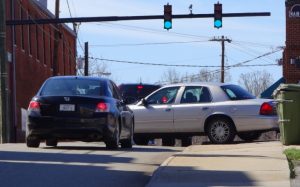
Whatever claim – or potential claim – a personal injury victim has to collect compensation becomes part of the bankruptcy estate, which normally would mean that those damages would be collected and then distributed to creditors. However, personal injury claims are usually exempt from the bankruptcy estate, assuming the debtor discloses it to the bankruptcy court and asks for a waiver. These are details that a bankruptcy attorney should advise you on if this is the situation you’re in.
For plaintiff in Morton v. Schlotzhauer, it’s not clear whether she had legal counsel during the Chapter 7 bankruptcy she filed between the time she was involved in a car accident and the time she filed her personal injury lawsuit against the other driver and his employer. However, a recent review of her situation by the Maryland Court of Appeals (the highest court in that state), indicated there was no dispute that her failure to disclose the then-potential legal action was due to ignorance, rather than intentional concealment.
Plaintiff had been involved in a crash with defendant, who at the time was on-the-job. She filed her personal injury lawsuit shortly before the three-year statute of limitations on the action expired.
However, then defendant became aware of that bankruptcy action – and the fact that plaintiff hadn’t actually listed it with the court or asked for an exemption. At that point, the Maryland high court described it as, “a race for relief” between the state court and the federal bankruptcy court. The plaintiff sought to ask the bankruptcy court to re-open the action so that she could file the claim and ask for the exemption so she could be re-vested as the rightful claimant in the injury lawsuit.
Meanwhile, defendant sought to have the car accident lawsuit dismissed because plaintiff did not have the standing to pursue the case.
Ultimately, that “race” ended in a “dead heat,” as both courts issued their decisions at the same time. The state court dismissed plaintiff’s action for lack of standing, and it did so with prejudice (meaning she could not refile the case) because by that time, the statute of limitations had run out. However at almost the exact same time, the bankruptcy court issued its ruling, re-opening the case, granting the exemption and re-vesting plaintiff with the right to pursue the case. It further made that ruling retroactive to the date she filed her bankruptcy petition.
Plaintiff then returned to the trial court, bankruptcy order in hand, seeking reconsideration. But the court refused.
Plaintiff appealed, and the Court of Special Appeals reversed. The court held that because the cause of action revested back to the debtor and that revesting related in law back to the date of filing of the bankruptcy petition – which was before the expiration of the statute of limitations – plaintiff did in fact have lawful standing in her personal injury lawsuit. The state high court affirmed.
If you have been a victim of a traffic accident, call Chalik & Chalik at (954) 476-1000 or 1 (800) 873-9040.
Additional Resources:
Morton v. Schlotzhauer, Aug. 19, 2016, Maryland Court of Appeals
More Blog Entries:
In re Estate of Woody v. Big Horn County – State Supreme Court Reverses Rejection of Wrongful Death Lawsuit, Aug. 19, 2016, Miami Car Accident Lawyer Blog
The post Personal Injury Lawsuit and Bankruptcy Weighed in Morton v. Schlotzhauer first appeared on SEONewsWire.net.]]>- How much plaintiff earned before the crash;
- How much plaintiff earned after the crash;
- Whether crash-related injuries and treatment resulted in time away from work;
- Whether crash-related injuries and treatment will result in future time away from work or an inability complete certain tasks.

Of course, lost wages is just one element of overall damages, but it is often a significant one in a claim, and injury lawyers need to spend a fair amount of time ensuring it is fully explored and aptly presented.
In the recent case of Safeco Ins. Co. v. Fridman, Florida’s Fifth District Court of Appeal was reviewing the case for the second time, in this instance on remand from the Florida Supreme Court. The state high court had held that in this uninsured/ underinsured motorist action, plaintiff insured is entitled to a jury determination of liability and the full extent of damages – which might be in excess of the policy limits – prior to litigating a first-party bad faith cause of action. That meant a prior ruling from the 5th DCA was quashed. The case was remanded to the appellate court to determine whether trial court erred in denying the insurer’s motion for a mistrial and a new trial and secondly, whether trial court erred in denial of the insurer’s motion for remittitur (reduction of damages).
As to the first issue, the insurer had argued certain statements made by plaintiff’s attorney were improper and warranted a new trial. The court disagreed with this. However, the appellate panel did rule the lower court was wrong to deny a motion for remittitur on the $1 million damage award when plaintiff’s only proof of lost wages was speculation on how, had he not been injured, he might have succeeded in the short-lived wholesale tile and marble business he started shortly after the crash.
The car accident in question happened in January 2007. He was struck by an uninsured motorist. At the time, plaintiff was 41-years-old and unemployed. Prior tot he incident, he worked as an electronics salesman for several years, earning somewhere between $800-a-week and $1,000-a-week. He also for a time operated a retail tile and marble store, but could not indicate his exact earnings, saying that it was a growing business, but “I don’t remember making a paycheck even.”
Then, soon after the crash, plaintiff opened up a wholesale tile and marble company, which was open just 20 days. The business lost money. Plaintiff insisted he had to close the company because he couldn’t lift the materials as a result of the injury. He then went to work for an electronics store, at which he earned between $400 and $600 weekly. Then he went to a photo company, earning between $500 and $600 weekly. After that, he found a new job at a cash-for-gold firm, at which he earned about $1,200 every week. He still worked there at the time of the trial.
Plaintiff presented evidence to show he couldn’t work for about two weeks after the crash when he needed to have surgery related to the crash. He also provided evidence he would probably need a spinal fusion in the future because of the crash, and that surgery could have him out-of-work for up to four months.
At trial, plaintiff testified he believed he could have in a good year with the wholesale marble and tile company have made up to $200,000. He based this on the assertion that tiles are purchased for 25 cents-a-square-foot and resold for $2-a-square-foot. No other evidence was presented to support this $200,000 annual figure.
Jurors awarded him $1 million, which included $45,000 for previous lost wages and $225,000 for lost future earning capacity. Insurer sought a remittitur, arguing there was not enough evidence to support that level of wage losses.
The appeals court agreed. The court noted that when, as in this case, a plaintiff is earning more after the car accident injury than before, it is not impossible to recover damages for loss of income or future lost earning capacity – but it’s tougher to prove an actual economic loss.
If you have been a victim of a traffic accident, call Chalik & Chalik at (954) 476-1000 or 1 (800) 873-9040.
Additional Resources:
Safeco Ins. Co. v. Fridman, Aug. 12, 2016, Florida’s Fifth District Court of Appeal
More Blog Entries:
State Farm Mut. Auto. Ins. Co. v. Jakubowicz – Auto Insurance Policy Ambiguous, Aug. 2, 2016, Miami Car Accident Lawyer Blog
The post Safeco Ins. Co. v. Fridman – Proving Wage Loss Damages After Car Accident first appeared on SEONewsWire.net.]]>
The case of In re Estate of Woody v. Big Horn County, stems from the December 2011 death of 21-year-old Kenneth “Kenny” Woody IV. He was a passenger in a vehicle driven by a 23-year-old friend of Woody’s. That man, Dustin Wegner, was already on probation for an earlier DUI in which four people had been injured. A sheriff’s deputy reportedly spotted the vehicle and attempted to initiate a traffic stop. But Wegner didn’t pull over. Instead, he fled and a chase ensued, with both vehicles reaching speeds in excess of 100 mph, according to The Billings Gazette.
Wegner eventually lost control of the truck, and it flipped several times, tossing both men from the vehicle. Woody was transported to a nearby hospital and died the next day. It was later revealed Wegner’s blood-alcohol level that night was 0.28 – 3.5 times the legal limit of 0.08. He was arrested and later convicted of vehicular homicide and sentenced to five years in prison. He has since been released on probation.
Now, Woody’s family is seeking accountability from the sheriff’s office for wrongful death and survivorship damages, alleging the high speed chase should never have been initiated in the first place. Decedent’s parents as representatives of his estate, filed a claim for $750,000 in damages back in September 2014. That claim letter indicated the county had 120 days from the date of the letter to resolve the claim without necessity of litigation. The county commissioners later acknowledged they had received the letter, but they never actually responded.
In March 2015, the estate formally filed their lawsuit against the county in which they alleged negligence, negligent infliction of emotional distress, survivorship and wrongful death. A couple weeks later, the county responded with a motion to dismiss for failure to state a claim, asserting the estate didn’t meet the three-year statute of limitations for such actions. Estate objected to the motion, arguing the claim letter it had submitted tolled the statute of limitations.
The district court granted the county’s motion to dismiss, but the Montana Supreme Court reversed.
Neither side disputes that the action first accrued on the date of the crash in December 2011. And neither state disputes that all civil actions have to be commenced within the periods prescribed, except when another law specifically provides a different limitation.
In Montana, as in many other states, claims against the state and/or political subdivisions of it first have to be presented to the county as a claim before a lawsuit can be formally filed. There is no tolling provision in that requirement, but the law does say actions against the county for claims that have been rejected have to be initiated within six months of that first rejection. But the county never rejected the claim in this instances. It never acknowledged it at all, really, except to say it had been received.
The state supreme court sided with the state, based on prior case law precedent that essentially held that so long as the initial claim was filed within the three-year statute of limitations, plaintiff had six months from that date – or the date of the first rejection – to file their claim. Because no rejection came, they had the full six months, which meant the claim was timely filed.
If you have been a victim of a traffic accident, call Chalik & Chalik at (954) 476-1000 or 1 (800) 873-9040.
Additional Resources:
In re Estate of Woody v. Big Horn County, July 26, 2016, Montana Supreme Court
More Blog Entries:
State Farm Mut. Auto. Ins. Co. v. Jakubowicz – Auto Insurance Policy Ambiguous, Aug. 2, 2016, Miami Wrongful Death Lawyer Blog
The post In re Estate of Woody v. Big Horn County – State Supreme Court Reverses Rejection of Wrongful Death Lawsuit first appeared on SEONewsWire.net.]]>
Sifting through which policies are applicable involves first identifying them all and then carefully combing through the contracts to ascertain how liability payments were structured. We may also need to know research out-of-state laws if the companies involved were based elsewhere, as is often the case. Most commercial truck insurance policies will be much higher than what you will see for passenger-style vehicles. That’s because typically, when these trucks are involved in crashes, the damage is often severe. Although large trucks aren’t involved in as many crashes as passenger vehicles, when they are involved in a crash, losses can be devastating.
In the recent case of Great West Cas. Co. v. Robbins, the question before the U.S. Court of Appeals for the Seventh Circuit was whether the commercial liability policy that covered the lessor and lessee of the trailer part of the truck – a $5 million policy – was available to cover an allegedly negligent driver and her employer, who owned the trailer. The driver and her employer were insured by a separate policy that carried a $1 million bodily injury liability limit.
This was a truck accident wrongful death lawsuit stemming from a horrific crash that killed a 44-year-old man in Indiana in January 2011. The trucker, who according to court records worked for a company called Hoker Trucking, LLC, was cited for failure to yield. Hoker is an Iowa company, and it owned the tractor being driven. The driver, the company and the tractor were insured with a $1 million policy provided by Northland Insurance Company. However, the trailer was being loaned by a Minnesota-based firm called Lakeville Motor Express, Inc., which didn’t actually own the trailer, but had been leasing it from a company called Wren Equipment, also a Minnesota company. Per the agreement between Lakeville and Wren, Lakeville secured a $5 million liability policy from a company called Great West Casualty Co. that covered itself and Wren and the trailer.
Neither the truck driver nor her employer were named insureds under the Great West policy.
Plaintiff, the widow of the man killed in the truck accident, filed a lawsuit alleging negligence on the part of the driver, the driver’s employer and Lakeville, the lessee of the trailer. Lakeville was later dismissed from the lawsuit. The question became whether Great West should have to indemnify – and ultimately be responsible for the negligence of – the driver and her employer. The 7th Circuit, applying Minnesota law, decided: No.
The court found no ambiguity in the policy that might construe it against the insurer. The policy expressly excludes “anyone who has leased, rented or borrowed your auto when it is used in a business other than yours.” Because the truck was not being used to further Lakeville’s business at the time, no coverage was provided.
If you have been a victim of a traffic accident, call Chalik & Chalik at (954) 476-1000 or 1 (800) 873-9040.
Additional Resources:
Great West Cas. Co. v. Robbins, Aug. 16, 2016, U.S. Court of Appeals for the Seventh Circuit
More Blog Entries:
Tundidor v. Miami-Dade County – Canal Doesn’t Fall Under Maritime Law in Negligence Case, Aug. 15, 2016, Miami Truck Accident Attorney Blog
The post Great West Cas. Co. v. Robbins – Truck Accident Insurance Dispute Weighed by 7th Circuit first appeared on SEONewsWire.net.]]>
This could have an impact on future injury lawsuits filed by individuals harmed in South Florida boating accidents.
In this case, Tundidor v. Miami-Dade County, plaintiff was injured in 2013 and later filed a federal lawsuit after his face struck a pipe while he was riding a pleasure motorboat while it passed under a low bridge about 7 miles inland in Coral Park Canal. Justices ruled in favor of the county, finding plaintiff did not prove the baseline requirement to invoke federal admiralty law, which is the foundation of any case brought against an entity for wrongs taking place on navigable waters. The U.S. Supreme Court laid out the foundation for this in an 1870 case holding that waters may fall under federal law when, in their ordinary condition, they are navigable for interstate commerce.
Plaintiff had suffered serious injuries in the Miami boating accident, in which he was a passenger on a pleasure boat. When the boat approached the Coral Park Canal Bridge, plaintiff and three other passengers lowered their heads while the boat was passing underneath the bridge. As the boat was coming out of the south side of the bridge, plaintiff raised his head. It was then that he struck a water pipe. The force of that caused plaintiff to be tossed off the boat and into the water.
In addition to a number of low-lying bridges like this, the canal is obstructed by water pipes and even rail-road tracks. None of the narrow bridges that cross over the waterway allow for vessels to pass underneath unless they are very small.
Plaintiff had argued the waterway usually is navigable through the Tamiami Canal, which flows down to the Miami River and then later out to the Atlantic Ocean. However, there had been a flood-control spillway between the canal and the river. He argued the canal had the potential for commercial use and trade both historically and in the present condition, proposing that fishing or logging businesses could potentially use the water to transport products before reaching the river, at which point they could use a crane to move the items over to another larger vessel, which could then be used to take goods to broader markets, such as Georgia or the Bahamas.
However, the panel expressed skepticism of this assertion, and ultimately rejected it. In this case, there were artificial obstructions that would block interstate travel for commerce purposes on this waterway, which means it doesn’t meet the legal requirement for federal jurisdiction. This was also despite the plaintiff providing evidence that the U.S. Environmental Protection Agency (EPA) as well as the Miami-Dade Expressway Authority had previously classified the canal as a “transportation corridor” and a navigable water. But this alone doesn’t mean there was enough evidence to support invocation of admiralty law.
If you have been a victim of a traffic accident, call Chalik & Chalik at (954) 476-1000 or 1 (800) 873-9040.
Additional Resources:
Tundidor v. Miami-Dade County, Aug. 3, 2016, U.S. Court of Appeals for the Eleventh Circuit
More Blog Entries:
Florida Boating Accidents Up, FWC Urges Caution This Summer, June 4, 2016, Miami Boating Accident Lawyer Blog
The post Tundidor v. Miami-Dade County – Canal Doesn’t Fall Under Maritime Law in Negligence Case first appeared on SEONewsWire.net.]]>

Perhaps this shouldn’t be too surprising considering that nearly 80 million American households have pets and, at the end of the day, dogs are animals. Even those that are well-trained and relatively predictable can have moments of behaving in a way that is unexpected or aggressive. Here in Florida, F.S. 767.04 says that victims of dog bites or other dog-related injuries don’t have to prove the dog was previously vicious or that the owner knew of this viciousness in order to collect damages. It is true that any negligence on the part of the person bitten could be used as a means to reduce the dog owner liability, but it won’t preclude the claim entirely.
Given how many homeowner insurance claims stem from incidents involving dogs, many home insurance companies are trying to find ways to reduce their losses. They are fighting back hard on these claims.
One such case recent case is that of Am. Family Mut. Ins. v. Williams, weighed not long ago by the U.S. Court of Appeals for the Seventh Circuit.
According to court records, plaintiff was staying with a college friend and his wife in October 2012. The couple lived in an Indiana suburb and, like many people, they had a dog. One day, while the homeowner couple had to go to work, they left their guest at home with the dog. They told their guest that the dog would be fine inside while they were away. However, if she wanted to go outside, she would ring a bell by the front door and he could simply let her out. They made no mention of walking her.
A few hours later, shortly before 11 a.m., plaintiff was watching television when he heard the dog scratch on the bedroom door. We went downstairs, put a leash on her collar and walked outside with her. There was no incident and both returned inside. About an hour later, he heard the doggie bell ring by the front door. He went downstairs again and found the dog whining by the front door. Once again, he grabbed the leash and took the dog outside.
All of the sudden, another dog barked. When his host’s dog heard this bark, she lunged toward it. Because plaintiff was still holding onto the leash, he was pulled to the ground, resulting in a serious personal injury to his shoulder that required surgery.
He later sued the homeowners. Now, something to point out here: Some people are hesitant to file lawsuits against their friends or family members or even acquaintances. But what they usually come to realize is that it’s not that individual from whom they are trying to collect. Rather, it is the insurance company. But it is only after the insured is found liable can the injured person collect and receive reimbursement for his or her medical bills.
In this case, the insurer attempted to argue that the plaintiff guest was an “insured” under the terms of the policy because he was deemed “responsible” for the dog in this case.
However, the district court rejected this assertion and insisted the insurer had a duty to indemnify the homeowners – meaning provide a defense and pay the claim if they were deemed liable. The Seventh Circuit affirmed, finding it would “make no sense” to treat the plaintiff in this case as if he were legally responsible for his own injuries resulting from the actions of the dog.
If you have been a victim of a traffic accident, call Chalik & Chalik at (954) 476-1000 or 1 (800) 873-9040.
Additional Resources:
Am. Family Mut. Ins. v. Williams, Aug. 8, 2016, U.S. Court of Appeals for the Seventh Circuit
More Blog Entries:
Lik v. L.A. Fitness – Gym Injury Lawsuit to Proceed, June 9, 2016, Miami Dog Injury Lawyer Blog
The post Am. Family Mut. Ins. v. Williams – Insurer is Required to Indemnify Homeowners for Dog Injury first appeared on SEONewsWire.net.]]>
However, the landlords in a cross-motion sought to hold accountable their tenant – that dentist – who had been renting the suite from them. Had the dentist not hired the cleaning crew to clean the carpets in his unit, they’d never have been in the building in the first place and therefore, it was the tenant dentist who should pay, not the landlords.
In Morlin Asset Mgt. v. Murachanian, the question for the California Court of Appeal for the Second Appellate District, Division Eight, was whether the terms of the lease between landlord and tenant extended to claims or liabilities arising in this accident, which occurred in a common area of the building over which the tenant didn’t actually have any control. The answer was no, and therefore the trial court’s order granting summary judgment to the tenant dentist in this case was proper. That means injured plaintiff may proceed with his complaint against the property owners without having to worry the non-party tenant may be assigned liability that he might not have to pay, considering he wasn’t named a defendant in the original complaint.
According to court records, plaintiff was walking up a flight of stairs when he slipped, fell forward and suffered severe injuries. He sued the two landlords who owned the property, arguing they failed to address a dangerous condition on the site caused by treads and risers that failed to conform to the industry standards or building codes in a number of respects.
During the course of discovery, a medical doctor ascertained that the surface of the floor was especially slippery because the water that had fallen onto it was soapy, making falls even more likely. The heavy bucket had caught the stair, water spilled and it was on plaintiff’s very next step that he fell.
Defendants filed a motion to require the tenant dentist to provide indemnification. The dentist argued that because the incident occurred in a common area of the building – not on the unit he leased – he shouldn’t be liable.
During discovery, an engineer for the property testified that he instructed to notify him each and every time the cleaning crew was coming to the property because on several occasions, they had wrongly hooked up the hose. The tenant also stated that any time he was having any work done – whether air conditioning service or carpet cleaning – he was required to inform the property owners so they would have ample notice and could have someone on site overseeing the work.
Tenant filed a motion for summary judgment, which was opposed by the defense but granted by the court.
On appeal, defendants argued there were triable issues of material fact. Specifically, there were questions regarding the extent to which the agency was negligent for creating a condition that caused or contributed to plaintiff’s fall and injuries.
But the state appellate court affirmed, finding that the lease terms limited tenant liability to the suite he controlled – not to defects or dangerous conditions leading to a slip-and-fall in the common areas he did not control.
If you have been a victim of a traffic accident, call Chalik & Chalik at (954) 476-1000 or 1 (800) 873-9040.
Additional Resources:
Morlin Asset Mgt. v. Murachanian, Aug. 8, 2016, California Court of Appeal for the Second Appellate District, Division Eight
More Blog Entries:
Miami Golf Cart Accident Results in 5 Children Injured, July 27, 2016, Miami Personal Injury Attorney Blog
The post Morlin Asset Mgt v. Murachanian – Is Commercial Tenant or Landlord Liable for Slip-and-Fall? first appeared on SEONewsWire.net.]]>
The state alcohol board was slated to hold a hearing on the matter August 4th, but the hearing was canceled when the business chose to give up their license willingly. It’s likely the owners realize they are in for a long and arduous legal battle as it is, given the potential for dram shop liability by the officer’s family.
Although there has been no word yet on any civil filing by the 25-year-old officer’s surviving relatives, that type of civil action may be one avenue of accountability and compensation his family could pursue.
According to The Bethesda Magazine, the incident in question occurred in December 2015, when Officer Noah Leotta volunteered to work an extra shift to help catch drunk drivers. That same night, a man in that very district was drinking heavily – whiskey and beer – for at least four hours at the same restaurant before his departure in his car.
The 47-year-old driver, who pleaded guilty to vehicular manslaughter in May, reportedly struck Leotta as he was in the middle of a traffic stop. He died weeks later of his injuries. The driver faces up to 10 years in prison. At the time of the crash, his blood-alcohol level was measured to be more than three times the limit of 0.08.
Leotta’s loved ones are pushing for changes in a state law that will require more drivers who fail breath-alcohol tests to install and use ignition interlock systems. These systems require drivers to blow into a device to prove they aren’t drunk before the vehicle will even start. In many states, including Florida, ignition interlocks are not mandatory following a first-time offense, though judges do have the discretion to order it if they choose, per F.S. 316.193. (The exception here is if the driver has a blood-alcohol level of 0.15 or higher or had a minor in the vehicle).
A statement released by an attorney for the national chain restaurant said that given the circumstances, license forfeiture was the right thing to do.
Surviving family members in this case have a few different legal options. Those include:
- Workers’ compensation. The police officer was on-duty at the time of the drunk driving accident. That means that his injuries and subsequent death occurred in the course and scope of employment, which means any dependent family members would be eligible for workers’ compensation benefits.
- Bodily injury liability. This claim would be made directly against the drunk driver, and could be payable by his insurer. If the driver lacked adequate insurance, decedent’s family might be able to pursue underinsured motorist coverage from his own personal policy, or from that which covered his employer.
- Dram shop liability. This is an action taken against the establishment that served the drunk driver alcohol. Dram shop laws vary from state-to-state. In Florida, F.S. 768.125 holds that a person who sells or furnishes alcoholic beverages to a person who is either underage or known to be habitually addicted to alcohol can be held liable for damages.
If you have been injured in a Miami drunk driving accident, we can help.
If you have been a victim of a traffic accident, call Chalik & Chalik at (954) 476-1000 or 1 (800) 873-9040.
Additional Resources:
Hooters To Close Rockville Pike Location in Wake of Officer’s Death, July 25, 2016, By Andrew Metcalf, Bethesda Magazine
More Blog Entries:
Texting and Driving Causes Fatal Miami Car Accident, July 24, 2016, Miami Drunk Driving Accident Lawyer
The post Restaurant Forfeits Liquor License After Over-Serving Driver first appeared on SEONewsWire.net.]]>
Take the recent case of State Farm Mut. Auto. Ins. Co. v. Jakubowicz. This was an Indiana Supreme Court case in which the insurer’s underinsured motorist policy contained conflicting requirements. On one hand, insureds were required to file their UIM claim within three years. On the other hand, insureds could not first file a UIM claim unless and until they had exhausted the insurance coverage of the at-fault underinsured motorist. There was no mention of how to proceed if the insurance coverage of the at-fault motorist hadn’t been exhausted by the time that three-year time clock was up.
When the terms of an auto insurance policy are ambiguous, claims can sometimes be negotiated fairly out-of-court with the help of an experienced attorney. However, there are many situations in which the insurer is not going to be satisfied to do that. Your car accident lawyer has to be prepared to take the case to court and fight, if need be.
In the Jakubowiczs case, plaintiff and her two sons were seriously injured in a car accident with an underinsured driver.
For those not familiar, an underinsured driver is one who does have insurance coverage, but it is not enough to cover the full extent of damages suffered by the person injured. This is common, as some of the most serious auto collisions can result in hundreds of thousands or even millions of dollars in damages for medical expenses, pain and suffering, property damage and lost wages and loss of future earnings.
The statute of limitations on personal injury claims in Indiana is three years (it’s four in Florida). Plaintiff filed her claim against the at-fault driver one year after the car accident, seeking damages for medical expenses and property damage on behalf of herself and her sons.
Just shy of three years, she notified the insurance company she planned to file an underinsured motorist claim. However, it wasn’t until after that three-year mark that she formally filed a motion for leave to amend her complaint to include her own insurer and a claim for underinsured motorist coverage.
Trial court granted her leave, but the insurer soon thereafter moved for summary judgment, arguing the three-year time limit – per the language of the policy – was up and she had waited to long to file her UIM claim.
Plaintiff opposed that motion, arguing she didn’t have a choice but to wait because she hadn’t yet exhausted the UIM driver’s auto insurance coverage.
Trial court denied the insurer’s motion for summary judgment. The appellate court reversed. The case went to the state supreme court, which reinstated the ruling of the trial court.
In its finding, the state supreme court ruled that while insurers are free to limit the coverage in their policies, those limitations have to be clearly expressed in order to be enforceable, and they can’t be in conflict with other provisions of the contract. Where provisions that limit coverage aren’t plainly and clearly expressed, the policy is going to be construed most favorably to the insured – and that’s what happened here.
If you have been a victim of a traffic accident, call Chalik & Chalik at (954) 476-1000 or 1 (800) 873-9040.
Additional Resources:
State Farm Mut. Auto. Ins. Co. v. Jakubowicz, July 26, 2016, Miami Car Accident Lawyer Blog
More Blog Entries:
Florida Jury Awards $42 Million to Quadriplegic Man in DUI Case, July 30, 2016, Miami Car Accident Attorney Blog
The post State Farm Mut. Auto. Ins. Co. v. Jakubowicz – Auto Insurance Policy Ambiguous first appeared on SEONewsWire.net.]]>
According to the Tampa Bay Times, plaintiff alleged the restaurant chain served alcohol to him and his friends, even though they were all under the age of 21. He is now 24 and paralyzed from the neck down.
The injured man’s attorney hopes the case will encourage more bars to comply with statutes that prohibit underage drinking.
Authorities report that after a night of throwing back drinks at the local Applebee’s, plaintiff was riding in the bed of a pickup truck when the driver slammed into a tree and he was ejected, suffering severe and permanent injuries.
Despite the eye-popping size of the damage award, he will only receive a fraction of that. Jurors ascertained the restaurant chain is only liable for 20 percent of the damages, or about $8 million. Following the jury verdict, plaintiff reached a confidential settlement with the chain in exchange for its agreement not to appeal that damage award, so presumably he took home less.
Jurors opined plaintiff was 40 percent responsible for his own injuries and the driver of the vehicle is also responsible for 40 percent of the damages. The driver also settled with victim for an undisclosed amount prior to the jury verdict.
At the time of the crash in 2012, plaintiff was just 20-years-old. In fact, no one at the table was 21, yet they were served a pitcher of beer. A bartender insisted he checked one of the men’s driver’s licenses. After the group finished their drinks, they all got into a pickup truck.The driver reportedly blew through a red light before losing control of the vehicle and striking a tree.
Victim has limited movement of his arms, but no movement at all in his lower extremities.
Although $8 million might seem like a lot of money, one must consider what this young man lost that night. At just 20-years-old, he lost out on his dream of becoming a member of the military. He lost the opportunity to live a normal life. He does want to attend college. This money will allow him to do that and to purchase a home and vehicle that will accommodate his wheelchair. In other words, it will allow him to live independently.
Generally, Florida does not hold businesses accountable for the negligence of their patrons. However, F.S. 768.125 carves out an exception in cases where businesses that serve alcoholic beverages either to minors or those who are known to be habitually addicted to alcohol.
It’s often difficult to prove someone is habitually addicted to alcohol or that this information was known to bartenders. However, it’s much easier to prove a patron was underage at the time of service. Those same patrons, even though they too are breaking the law by consuming alcohol while underage, can still pursue legal action if they are hurt as a result. Legal action may also be taken by anyone injured by that underage patron.
If you are injured in a Miami drunk driving accident, our attorneys can help.
If you have been a victim of a traffic accident, call Chalik & Chalik at (954) 476-1000 or 1 (800) 873-9040.
Additional Resources:
Hernando County jury awards quadriplegic man $42 million verdict, April 22, 2016, By Josh Solomon, Tampa Bay Times
More Blog Entries:
Ochoa v. Koppel – Florida Car Accident Settlement Offer Rules Challenged, July 7, 2016, Florida DUI Injury Lawyer Blog
The post Florida Jury Awards $42 Million to Quadriplegic Man in DUI Case first appeared on SEONewsWire.net.]]>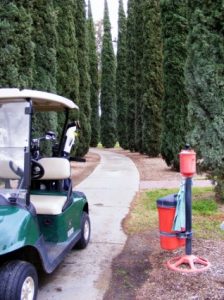
Authorities reported to WSVN 7 News that the golf cart reportedly ran a stop sign and was struck by a Dodge Caliber and then overturned. Victims were between the ages of 3 and 16. The toddler was reportedly injured, but continued to say over and over, “I’m Ok, I’m Ok,” according to a witness.
Two of the other passengers, ages 12 and 16, were taken to the hospital via helicopter as trauma alerts, which indicates critical injury. The 12-year-old, a boy, was most critically injured and reportedly suffered swelling and bleeding of the brain. The other children were treated and released.
In a situation like this, our Miami-Dade child injury lawyers know that liability in this case could depend on a few different factors. One will be who was operating the golf cart. A person need only be 14 to operate a golf cart, according to F.S. 316.212, but operation on public roads is restricted except as outlined in specific scenarios in the statute. For example, it can only be operated on county roads in situations where the county has conducted an analysis to determine operation of golf carts is safe there.
But of course, the presence of many gated communities and proximity to golf courses make it a popular mode of transportation. It’s imperative that owners and operators of golf carts take into consideration where they are allowed to travel with the vehicle and the roads and byways they must avoid.
Part of the problem is that other drivers of larger, faster motor vehicles aren’t anticipating golf cart traffic, so they may not react as quickly as they otherwise might.
The other issue is that the law does not require seat belts to be worn while the vehicle is in motion, and in fact, many if not most golf carts aren’t even equipped with seat belts.
Although Florida tends to have a reputation as a laid-back vacation destination, it’s precisely this lassaiz faire attitude toward safety that results in so many Florida golf cart injuries and deaths every year.
Researchers with the National Electronic Injury Surveillance System report there were 150,000 injuries between 1990 and 2006 that involved golf cart accidents. More recent incidents indicate there are 15,000 new injury cases every single year.
The point is that these are not freak accidents. The causes are known and the risks are preventable.
While this case out of Miami-Dade made headlines for the fact that it involved five children, even this isn’t all that unusual. In fact, one-third of all golf cart injuries are children under the age of 13. Even at low speeds, injuries to young children can be quite serious, especially when there is a rollover – which is 10 percent of all golf cart accidents.
And of course, this is exactly what happened in the most recent case. The children’s grandmother, who heard the accident not realizing it was her own grandchildren, said her grandchildren and others in the community routinely traveled around in golf carts.
If you or a loved one has suffered injury in a golf cart accident, our Miami injury lawyers can help answer your questions.
If you have been a victim of a traffic accident, call Chalik & Chalik at (954) 476-1000 or 1 (800) 873-9040.
Additional Resources:
5 children hospitalized after golf cart collides with car, July 4, 2016, Staff Report, WSVN 7-News
More Blog Entries:
New Federal Law Improves Safety of Rental Cars, July 9, 2016, Miami Personal Injury Lawyer Blog
The post Miami Golf Cart Accident Results in 5 Children Injured first appeared on SEONewsWire.net.]]>

Authorities report the incident happened shortly after 1 a.m. on a Thursday morning. At that time, a 25-year-old operating a sport utility vehicle southbound on U.S. 1 reportedly blew through a red light at Douglas Road. He was allegedly texting at the time of the crash.
The vehicle went out-of-control, striking two palm trees. He was also allegedly struck by a car that was traveling in the opposite direction. The SUV then turned over. Nearby witnesses described the sound as, “like a bomb.”
The 25-year-old driver was pronounced dead at the scene.
The driver of the vehicle that had been traveling northbound thankfully was not injured. However, U.S. 1 had to be shut down for hours, re-opening only just after 5:30 a.m. the following morning.
Investigators said cocaine was found in the vehicle, but it is too early to tell whether decedent was under the influence of that drug or if it may have played any kind of a role in the crash.
Driver distraction is a serious issue in Florida and beyond. It’s an extremely risky behavior, and it places drivers, passengers, pedestrians and bicyclists in danger of injury and death. Drivers who are focused on the road are overall safer.
The Florida Department of Highway Safety and Motor Vehicles (FDHSMV) reports there are three basic kinds of driver distraction:
- Visual – taking your eyes off the road;
- Manual – taking your hands off the wheel;
- Cognitive – thinking about something other than the road.
Texting checks all three of those boxes, which is what makes it one of the most perilous kinds of driver distraction. What’s worse, because virtually everyone has a cell phone, the problem is extremely widespread. These drivers are not just a threat to themselves and their passengers, but as our Miami car accident lawyers know: They are a threat to everyone else with whom they share the road.
The FDHSMV reports that there were a total of 45,740 distracted driving crashes statewide in 2015. Of those, 25,560 crashes resulted in injury for a total of 40,000 injuries.
Just in Miami-Dade County, there were a total of 4,445 distracted driving crashes last year with 1,996 of those causing a total of 3,227 injuries. Sixteen of those cases were fatal. Authorities in the county issued 689 texting-and-driving citations last year, which per F.S. 316.305 is a secondary offense punishable by a minor monetary fine.
In Broward, there were 3,762 distracted driving crashes in 2015 resulting in 1,944 injury crashes that resulted in nearly 3,000 injuries. A total of 8 deaths were attributable to distracted driving. Officials in the county issued 402 distracted driving citations that year as well.
Most recently, the Pokemon Go game craze that has swept many communities in the U.S. has sparked concerns of yet another form of driver distraction.
State authorities and even the AAA have released statements urging drivers to avoid playing the game while driving.
Some signs indicated that “Pokemon Go is a No-Go When Driving.”
Statewide, there were approximately 3,500 texting-while-driving citations issued by law enforcement. A number of legislative proposals are on the table that would strengthen the state’s texting-and-driving law to a primary offense with a stiffer fine.
If you have been a victim of a traffic accident, call Chalik & Chalik at (954) 476-1000 or 1 (800) 873-9040.
Additional Resources:
Early Morning Car Crash Caused by Texting in Miami Kills One on U.S. 1, July 14, 2016, Staff Report, NBC-6 Miami
More Blog Entries:
Allen v. Montalvan – Florida Car Accident Settlement Reversed, July 16, 2016, Miami Car Accident Lawyer Blog
The post Texting and Driving Causes Fatal Miami Car Accident first appeared on SEONewsWire.net.]]>
Although many stairway falls are caused by loss of balance, often due to neglecting to use the handrails, poor construction of stairways can cause a person to fall as well. While building codes for stairways are rigorous, that wasn’t always the case. In a lot of older buildings, stairways may not have been built according to court. Additionally, stairways require regular and adequate maintenance to ensure they are safe.
When a stairway does not meet an applicable building code, a personal injury lawyer may be able to assert negligence pro se, or a breach of duty just based on the violation of law. But even in cases where building codes are technically met, property owners have a duty to make sure that the property is reasonably safe for lawful guests.
In the case of Estate of Smith v. Salvesen, recently before the Maine Supreme Judicial Court, the issue of causal connection between the building code violations and the cause of plaintiff’s fall.
The big issue here was what the court saw as a lack of adequate expert testimony to lay the foundation for an assertion of proximate cause.
Plaintiff and his wife were planning to attend an event for a small college preparatory boarding school, for which they had been benefactors and trustees. The couple made arrangements to stay at the Maine Farmhouse, which was a guest house owned and operated by defendant. A member of the school district provided the pass code to enter the guesthouse and told the couple they would be staying on the second floor. They received no room number or other information and they didn’t speak to the owner before the trip.
The couple arrived, let themselves in and chose a two-floor suite that was connected to one of the downstairs living rooms by a private stairway. Plaintiff said the couple was not aware of this stairway when the entered the room, even as they got settled and put their things away before preparing to go to dinner.
They left, went to dinner, returned and went to bed. The next thing plaintiff recalls was hearing a huge crash followed by his wife’s scream around 7 a.m. He ran out into the hallway and didn’t see her. He went back into the room and noticed there for the first time the staircase in the bedroom. He saw his wife lying on a landing of the staircase, bleeding from the head. She was taken to a hospital and died the following day of traumatic brain injury.
Her husband filed a complaint for damages against the property owner, asserting in his premises liability lawsuit that the property was unreasonably dangerous. The bedroom didn’t conform with applicable safety standards and the defective stairway proximately caused his wife’s injuries.
After depositions but prior to trial, defendant moved for summary judgment, arguing the evidence failed to support a claim of negligence because no one knew how or from where decedent had fallen.
Plaintiff presented evidence to show the stairway did not meet applicable building codes (the risers were uneven and the handrail was too low). Further, he argued his wife had fallen from the top of the stairs, not realizing it was even there and also noting the loud crash he heard before he found her.
The court granted summary judgment for defense, finding the testimony regarding the risers was conjecture because the witness stated, “It should be considered.” Further, it wasn’t properly disclosed, the court determined.
Plaintiff appealed, arguing the court erred in not allowing his expert witness testimony to be considered. He argued nothing in the witness’s new statement contradicted his earlier statements.
The Maine Supreme Judicial Court, however, affirmed, finding the expert witness’s statement in fact did contradict an earlier comment he made in which he said he wasn’t sure the riser defect contributed to the fall.
If you have been a victim of a traffic accident, call Chalik & Chalik at (954) 476-1000 or 1 (800) 873-9040.
Additional Resources:
Estate of Smith v. Salvesen, July 7, 2016, Maine Supreme Judicial Court
More Blog Entries:
Like v. L.A. Fitness – Gym Injury Lawsuit to Proceed, July 9, 2016, Miami Wrongful Death Lawyer Blog
The post Estate of Smith v. Salvesen – Unsafe Stairway first appeared on SEONewsWire.net.]]>
And then, they take action. Pursuing a birth injury lawsuit in Miami is a tough endeavor. These are often complex cases and the stakes are high. What parents should also know is that they need to take action as quickly as possible, or risk the chance that the claim will be time-barred. Some may think it’s wise to wait and see if the child’s condition worsens, as this might maximize the damages. However, a good attorney can help you outline the case for future damages. Plus, if a child later dies as a result of those birth injuries, that creates a completely new cause of action, separate from the personal injury claim.
This was the case recently in Maryland with the case of Spangler v. McQuitty. Plaintiffs secured a $5 million judgment against his doctors after alleging severe birth injuries caused by medical negligence. Later, when the child died of these injuries, his parents once again sued the doctors and hospital. They asserted the very same facts of the personal injury lawsuit. Defendants argued this was against the rules because the case on those facts had already been decided. But plaintiffs ultimately won out with the argument that wrongful death creates a new and separate cause of action.
Where plaintiffs have to be careful – particularly in settlement agreements – is that often defendants will demand a release of any future liability. That could undercut the plaintiff’s ability to pursue additional action, even if they otherwise would have had that right.
In this case, plaintiffs allege defendants failed to obtain the child’s mother’s informed consent for treatment when she was pregnant. As a result, she suffered complete placental abruption, which resulted in severe injuries to their son when he was born in 1995. He was diagnosed with severe cerebral palsy.
Plaintiffs sued the doctor and hospital and obtained a judgment for $13 million – which included $8 million for future medical expenses – but a remittitur was granted and that damage award was ultimately reduced to $5 million.
Then in May 2012, plaintiffs filed a wrongful death action against the same defendants under the state’s wrongful death statute. Defendants filed a motion to dismiss, arguing the boy no longer had a right to bring a claim against the defendants at the time of his death.
Plaintiffs appealed. While that case was pending, the state’s highest court issued an opinion in Mummert v. Alizadeh, in which a widow and her children sued her husband’s doctors, alleging failure to timely diagnosis his colorectal cancer. The doctor filed a motion to dismiss, arguing the three-year statute of limitations for wrongful death had expired relative to the patient’s personal injury action. That motion was granted by the lower court, but the state high court reversed. In reversing, the court wrote that the legislature did not intend to define “wrongful act” so as to make it so a wrongful death claim was contingent on decedent’s ability to file a claim in a timely manner before his or her death. Therefore, the statute of limitations for tort claims against health care providers in cases of alleged medical malpractice doesn’t apply to a claim of wrongful death. That is, a new and independent claim is created.
If you have been a victim of a traffic accident, call Chalik & Chalik at (954) 476-1000 or 1 (800) 873-9040.
Additional Resources:
Spangler v. McQuitty, July 12, 2016, Maryland Court of Appeals
More Blog Entries:
Coffey-Garcia v. South Miami Hospital – Florida Birth Injury Lawsuit, July 4, 2016, Miami Birth Injury Lawyer Blog
The post Spangler v. McQuitty – Wrongful Death Creates a New Cause of Action first appeared on SEONewsWire.net.]]>
The verdict, which is just shy of the record medical malpractice damage award in that region and the highest for any birth injury case, followed a month-long trial in which the boy’s guardian sued the University of Chicago Medical Center and several doctors, asserting the mother’s physicians didn’t timely recognize or act on the signs of distress that should have prompted an emergency cesarean section during her labor and delivery.
According to news reports and court records of the case, plaintiff was full term, at 40 weeks into her pregnancy, when she came to the hospital around 2 a.m. She reported the baby’s movement had slowed significantly, which is a sign of fetal distress. Unfortunately, as her lawyers would later outline at trial, the hospital at that hour is run by student residents. Evidence was presented that showed the students were either occupied, asleep or unable to handle this level of an emergency. Tests conducted as soon as she was admitted immediately showed the unborn child was in fetal distress. Yet for 12 hours, she essentially went unattended by doctors when what was needed was an emergency C-section.
Lawyers presented evidence showing the child basically was suffocating inside the womb during that time. When he was finally delivered, the boy was not breathing. He was rushed to the neonatal intensive care unit (NICU). He was ultimately revived, but he was on life support. It was touch-and-go for weeks, as he remained in critical condition.
The lack of oxygen to his brain during that time resulted in a condition known as cerebral palsy. He requires around-the-clock care. He is unable to to perform basic tasks, such as bathing, eating and dressing.
Doctors at the hospital reportedly told the mother his condition was due to hypoxia, which is a lack of oxygen. However, they did not reveal who might have been responsible for this. Later, they told her his brain injury was from a totally different condition.
The hospital contended the mother was treated for an infection, which could also be a potential cause of cerebral palsy, and insisted the boy had normal blood-oxygen levels when he was born.
Plaintiff’s attorneys dismissed that notion outright, saying every doctor who has treated him over the course of his life has diagnosed him with the same thing: Asphyxia, birth injury, birth asphyxia. Meanwhile, he said the hospital presented three doctors who testified that “suddenly there was a secret infection” that the mother was never told about.
The amount awarded to the family might have been less had the hospital agreed to negotiate. However, defendant hospital reportedly refused to engage in settlement talks. A hospital spokeswoman disputed that claim, saying they did engage in negotiations both before and during the trial.
Although the amount of $53 million may sound like a lot, it’s by no means a windfall when you consider the amount of care this boy is going to need for the rest of his life. The majority of the money was awarded for past and future medical expenses, based on what it has already cost and will cost to care for him 24 hours a day for the next 65 years.
If your child has been the victim of a birth injury in Miami, call Chalik & Chalik at (954) 476-1000 or 1 (800) 873-9040.
Additional Resources:
$53M verdict for birth injury, June 30, 2016, By Lauraann Wood, Chicago Daily Law Bulletin
More Blog Entries:
Maree v. Neuwirth – Nursing Home Neglect Lawsuit to Proceed With Additional Defendants, June 20, 2016, Miami Birth Injury Lawyer Blog
The post Jury Awards $53 Million to Plaintiffs in Birth Injury Lawsuit first appeared on SEONewsWire.net.]]> ome.
ome.
But the risk of escalators in particular seems to be on the rise, and it’s worth exploring why, particularly given that it is young children and the elderly who are most vulnerable.
As reported by the American Association for Justice, there were approximately 4,900 total reported escalator-related injuries and deaths back in 1990. But there has been a steady increase – of about 10 percent every year. By 2000, there were more than 10,000 reported escalator injuries and fatalities. By 2013, that figure had spiked to nearly 12,300. Children under 14 and seniors over the age of 65 comprised 60 percent of the injuries involved.
You may recall the high-profile incident just last year, in which both a child’s feet became stuck at the bottom of an escalator at Universal Orlando. Power was shut off and special equipment had to be brought in to free the child. At the time, the Orlando fire chief told WESH.com that, “This isn’t too uncommon. We don’t go to them every day, but we have had several escalator entrapments.”
So what’s happening?
Although entanglements are certainly a serious problem, our Miami escalator injury attorneys understand that most of these incidents are due to falls. In fact, the Consumer Product Safety Commission (CPSC) reports that the majority of fatalities involving escalators are the result of falls. Out of 27 deaths reported in a 15-year time span ending in 1999, a total of 21 were the result of falls. But we don’t hear as much about these escalator fall cases – either falls on or falls from – which tells us they are generally underrepresented in litigation.
Like so many other types of personal injury cases, industry has done a very good job of convincing the public that these sort of incidents are the fault of the person injured. There is a common narrative that is asserted in so many of these cases, and it involves accusations of horseplay, intoxication or some other type of gross misuse by the person injured. We saw the same kind of tactic play out with the McDonald’s hot coffee case. There, an elderly woman suffered horrific third-degree burns from a cup of coffee she was served at a fast-food drive-thru. She sued after finding out the company had repeatedly received warnings that the temperature of its brew was far too hot, and others had been injured before. Yet when she won $1 million (later significantly reduced) at trial, she was widely mocked because, after all, the reasoning went, she had been the clumsy one who dropped her coffee.
Back to the escalators, what often first must be overcome in escalator injury cases is the presumption of comparative fault. There is strong evidence in the form of internal manufacturer documents that suggest that the industry understands that many of these injuries are foreseeable and result from hazards that are well-known to manufacturers and property owners. What’s more, the industry has been successful in pushing back against any kind of meaningful legislation. The CPSC, for example, has proposed several times to add escalators to the list of items it regulates. However, it always bows to industry pressure, which means the only standards are set forth by the American Society of Mechanical Engineers (ASME), with updates made every three years.
If you have been a victim of an escalator, call Chalik & Chalik at (954) 476-1000 or 1 (800) 873-9040.Additional Resources:
Escalator Injuries and Deaths on the Rise, and Why Lawyers May be Overlooking Many of the Cases, Winter 2015, Products Liability Newsletter, American Association for Justice
More Blog Entries:
Fort Lauderdale Bus Accident Kills Two Car Occupants, June 30, 2016, Miami Injury Lawyer Blog
The post Escalator Injury Risk on the Rise first appeared on SEONewsWire.net.]]>
The legislative action was named for and championed by the family of Raechel and Jacqueline Houck, sisters, 20 and 24, killed in a fiery crash in 2004 when their rental car burst into flames after a striking a semi-truck following an apparent steering hose leak. The vehicle had been recalled for this very same reason prior to the crash, but the rental car company nonetheless continued to rent out the car. In fact, the company rented out the car four times since the recall, the Houck sisters being the fourth.
At the wrongful death lawsuit trial brought by their parents, a manager for the shop in California that rented the car testified that the corporate philosophy of the rental car company was always to “keep booking,” because there was never any assurance of when the vehicle might be returned. But then the company would run short on vehicles. If all that were left in the lot were recalled vehicles, managers were instructed to rent those out too.
“It was a given,” he testified, even when the rental car company was aware of a recall via a “priority alert” that appeared on screen at rental officers.
Now, it is no longer a given with this amendment to the Fixing America’s Surface Transportation (FAST) Act of 2015.
The new law, as explained by officials with the U.S. Department of Transportation’s National Highway Traffic Safety Administration (NHTSA), will ensure that when a family picks up a car for rental on vacation, they have every right to expect it is free from any known safety defect. The law also extends the NHTSA’s recall powers to cover rental car companies, something it did not have in the past. That gives the agency the authority to investigate reported violations of the statute and to punish those who break the rules.
First introduced in 2011, Congress took many passes before finally making it law last year. President Obama signed it into law in December and it’s now formally in effect.
It’s imperative that every vehicle that is recalled – new, used, rented or leased – gets repaired quickly. Rental car companies often operate enormous fleets. Our Miami car accident lawyers know the actions of these large companies affect not only the safety and well-being of their customers, but also of everyone else who shares the road with them.
To give you an example of the scope of the problem, just in 2014 alone, there were almost 900 automotive recalls that affected more than 50 million vehicles in the U.S.
As for the Houck’s wrongful death lawsuit, it was an arduous legal battle, but the company ultimately conceded it had been negligent and agreed to pay a $15 million settlement.
When their mother started advocating for the passage of the FAST Act provision, she initiated a Change.org petition that pressed Enterprise (the defendant in the Houck lawsuit) to forego its opposition to the rental car act. That petition collected more than 100,000 signatures. Ultimately, Enterprise, Hertz, Avis, Dollar, Thrifty and National all agreed not to rent out any recall cars. Now, they don’t have a choice.
If you have been a victim of a traffic accident, call Chalik & Chalik at (954) 476-1000 or 1 (800) 873-9040.
Additional Resources:
Years after tragedy, mother claims victory in new rental car protections, June 1, 2016, By Randy Kreider, ABC News
More Blog Entries:
Coffey-Garcia v. South Miami Hospital – Florida Birth Injury Lawsuit, July 4, 2016, Miami Injury Lawyer Blog
The post New Federal Law Improves Safety of Rental Cars first appeared on SEONewsWire.net.]]>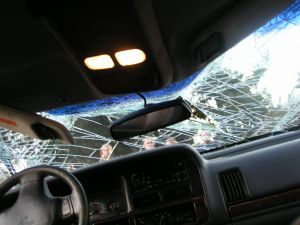
The recent case of Allen v. Montalvan, before Florida’s Fourth District Court of Appeal, shows what can happen when both sides – even when acting in good faith – fail to take this crucial step to ensure that a car accident settlement agreement is legally binding.
According to court records, plaintiffs – three minor children – were among six total people in a vehicle struck by defendant motorist (driving a vehicle owned by his wife, also a defendant). The person driving the vehicle was their grandmother. Their mother was also in the vehicle, as was an uncle. Tragically, the grandmother was killed in the crash. They, their mother and their uncle suffered varying degrees of injury.
Several days after the crash, the mother of the children sought legal advice and filed a claim for damages from the defendant driver’s insurer. The insurance company, rather than turn this into a long, protracted legal battle (as so often happens), agreed to tender the full policy limits.
The policy allowed for $25,000 per person and up to $50,000 per car accident. The mother, as representative of the grandmother’s estate, agreed to settle that claim for the per-person limit of $25,000. The remaining $25,000, as far as the insurance company understood, would go to settle all remaining claims for the other five people involved – including the three children. The insurer did not ask – and plaintiff attorney did not immediately stipulate – how much of that $25,000 was to go to the children. Neither did either side ensure the children’s interests were represented by a guardian ad litem, as required per F.S. 744.
Later, the attorney submitted notice to the insurer that the amount allocated to the children was $0, while the amount allocated to the mother and uncle was $25,000 total.
Mother later retained a different attorney who sought compensation for the children as a result of the crash.
Defendant’s auto insurance company intervened and argued the claims were barred as a result of the settlement, which was intended to resolve all pending claims. Plaintiff’s former attorney said his understanding was not that the settlement had settled all pending claims, but rather that it was a tendering of the full policy limits.
Mother argued this was a matter for a jury to decide. However, trial court determined the parties had a binding agreement and that the $50,000 settlement agreement resolved all claims.
Mother appealed and the 4th DCA reversed. In reaching this conclusion, the court pointed to F.S. 744.3025(1)(b), in which it is required that the court “shall appoint” a guardian ad litem to represent a minor’s interest before approval of a settlement of a minor’s claim in any case where the gross settlement amount meets or exceeds $50,000. Defendant insurer argued that the $25,000 allocated to the grandmother’s estate should not be included this $50,000 figure. That would mean the $25,000 earmarked for the remaining passengers wouldn’t meet the criteria necessary to ensure the interests of the children were furthered by an appointed guardian ad litem.
The appeals court disagreed.
Florida rules of evidence and prior case law supported the notion that in this instance, the gross settlement amount met the $50,000 threshold criteria.
The case has been remanded to the lower court for further proceeding.
If you have been a victim of a traffic accident, call Chalik & Chalik at (954) 476-1000 or 1 (800) 873-9040.
Additional Resources:
Allen v. Montalvan, June 22, 2016, FL 4th DCA
More Blog Entries:
Tire Tread Blamed in Florida Car Accident That Killed Four Sisters, June 14, 2016, Miami Car Accident Lawyer Blog
The post Allen v. Montalvan – Florida Car Accident Settlement Reversed first appeared on SEONewsWire.net.]]>
The statute and rule set a hard, 30-day deadline for the other party to accept or reject the proposed settlement, and the settlement may be deemed rejected if the party does not respond to it. Assuming the proposal was made in good faith, the party who extended it may seek recovery of attorney fees if they later prevail in court (for defendants, if plaintiff receives at least 25 percent less than the proposed offer and for plaintiff, if judgment is at least 25 percent more than the amount of the offer). The whole purpose is to avoid or reduce backlog in the courts and encourage parties to save time and money by settling.
In the recent case of Ochoa v. Koppel, Florida’s Second District Court of Appeal issued a decision pertaining to the length of time one has to accept or reject a settlement after requesting more time. The court decided that the 30-day limit is a strict one, and can’t be tolled while awaiting a decision from the trial court after requesting an extension. This decision directly contrasts with the ruling issued by Florida’s 5th District Court of Appeal in Goldy v. Corbett Cranes Services, Inc. in 1997. The conflict was certified to the Florida Supreme Court.
According to court records in Ochoa, this was a car accident lawsuit stemming from a crash that occurred in 2011. Less than two years later, In April 2013, plaintiff filed a lawsuit against the alleged at-fault driver.
Then in September 2013, plaintiff served defendant with a proposal for settlement, pursuant to the aforementioned statute and rule. The proposal offered to dismiss the action with prejudice if defendant agreed to a lump sum payment of $100,000 to compensation plaintiff for her injuries. That proposal indicated that it would be deemed rejected if it was not accepted within 30 days after service. The proposal also indicated it would be withdrawn if not accepted within that time frame. Plaintiff also sent notice to the court that same day that the case was ready for trial.
One day before that 30-day time limit was up, defendant filed a motion seeking to enlarge the time in which to respond. She said she had just received through discovery results of a new MRI and plaintiff’s deposition hadn’t even been taken yet. The matter was set for a hearing on Dec. 2, 2013.
At that hearing, the court did not make a decision, but asked for more information to be received within 3 days. One day after the hearing, however, defendant responded to plaintiff with a notice of acceptance of the proposed settlement.
However at a subsequent hearing, the court denied defendant’s request to enlarge settlement. Plaintiff then filed a motion to strike the notice of acceptance of settlement as untimely. Defendant opposed the motion, citing Goldy. She argued the period of time she had to respond was tolled while awaiting the court’s decision on her request for enlargement. Trial court agreed and dismissed plaintiff’s lawsuit under the terms of the proposed settlement.
The 2nd DCA reversed. The court ruled that to offer automatic tolling when one files a motion for enlargement would be to give the party filing additional time than what is prescribed in the rule, and this is done without an exercise of judicial supervision or discretion until the motion is decided. Further, to hold that a motion to enlarge that 30-day period automatically tolls the time period would be to insert text into a judicial rule, and that is not the role of the court.
If you have been a victim of a traffic accident, call Chalik & Chalik at (954) 476-1000 or 1 (800) 873-9040.
Additional Resources:
Ochoa v. Koppel, May 20, 2016, Florida’s Second District Court of Appeal
More Blog Entries:
Moreno v. City of Gering – Government Liability in Bus Accident, April 27, 2016, Miami Car Accident Lawyer Blog
The post Ochoa v. Koppel – Florida Car Accident Settlement Offer Rules Challenged first appeared on SEONewsWire.net.]]>
F.S. 95.11(4)(b) holds that an action for medical malpractice must be initiated from either 2 years from the time of the incident giving rise to the action or within 2 years of the time the incident is discovered or should have been discovered with the exercise of due diligence. However, there is a 4 year statute of repose, which means no action can be initiated after that four-year deadline. But, there is one exception: Actions brought on behalf of a minor on or before the child’s 8th birthday.
In the recent case of Coffey-Garcia v. South Miami Hospital, recently before Florida’s Third District Court of Appeal, the question was whether in weighing this discovery deadline in an alleged birth injury case, plaintiff could be compelled to give information about when she met with various attorneys and what was discussed. Plaintiff argued such information was protected by attorney-client privilege, while defendant argued it was not and the information was pertinent to when plaintiff knew or reasonably should have known the purported cause of her daughter’s cerebral palsy.
The facts of the case begin in July 2005, when plaintiff gave birth to her daughter.
Then in early 2007, a neurologist diagnosed the girl with cerebral palsy. Cerebral palsy occurs when the brain injury or brain malformation that occurs while the brain is developing – either before, during or after birth. The result is brain damage that affects the child’s muscle control, coordination, tone, reflex, posture and balance. It can also sometimes impact the child’s gross motor skills, fine motor skills and oral motor functioning.
Although it can occur organically, it is a red flag of perinatal brain cell death, which means that events during the birth process led to rupture of the blood vessels that start oxygen to the brain. This type of birth injury is often the result of medical malpractice.
In April 2013, prior to the girl’s 8th birthday, the parents filed a notice to extend by 90 days the statute of limitations for filing a medical malpractice lawsuit against the doctors and hospitals involved in their daughter’s birth. They filed a notice of intent to initiate the lawsuit, which was ultimately filed in November 2013.
The question was whether the statute of limitations will be a bar to this claim, and ultimately, that decision will rest on when plaintiff knew not only of the injury, but also had knowledge there was a reasonable possibility the injury was caused by medical malpractice.
Attorneys for the defense sought information to discover what attorneys plaintiff consulted with about her daughter’s condition, when she consulted with them and why she consulted with them. She did testify in deposition that her current attorney was not the first lawyer with whom she consulted, but then declined to comment further on the basis of attorney-client privilege. Defense moved to compel her to answer all questions related to when she first sought legal counsel, the names of attorneys with whom she consulted and the reasons she first sought out an attorney and any others subsequent.
The trial court granted the motion to compel and plaintiff appealed to the 3rd DCA. The appeals court noted that although a client can’t be compelled to answer questions like, “What did you say or write to the attorney?” he or she can’t refuse to disclose a relevant fact just because it was incorporated into a statement of fact communicated to his or her attorney.
Appeals court noted that the questions the defense sought – the names of attorneys and dates of consultations relevant to plaintiff’s claim regarding her daughter’s condition – are not protected information because that only requires her to disclose the occurrence of a consultation. However, plaintiff can’t be forced to answer “all questions” (as the lower court had ordered), such the specifics of what was discussed.
If your child has been a victim of a Miami birth injury, call Chalik & Chalik at (954) 476-1000 or 1 (800) 873-9040.
Additional Resources:
Coffey-Garcia v. South Miami Hospital, June 22, 2015, Florida’s 3rd District Court of Appeal
More Blog Entries:
Westphal v. City of St. Petersburg: Florida Supreme Court Rules Limit of Workers’ Comp. Unconstitutional, June 22, 2016, Miami Birth Injury Lawyer Blog
The post Coffey-Garcia v. South Miami Hospital – Florida Birth Injury Lawsuit first appeared on SEONewsWire.net.]]>Why would anyone agree to such a system? The truth of the matter is, most people don’t realize they are. The agreement is often stuffed in a mountain of admissions paperwork right when they are first signing in – an overwhelming experience as it is.
Although courts do recognize the validity of such agreements as binding contracts, there have been an increasing number of cases in which courts have decided these agreements violate public policy or for other reasons are not valid. The recent case of Tarvin v. CLC of Jackson is one of those. This was a case recently weighed by the Mississippi Supreme Court, but the legal principles are still relevant to those of us here in Florida.
According to court records, plaintiff’s father, decedent, was admitted to defendant nursing home in August 2007. Plaintiff, his daughter, signed the admission agreement on his behalf as his “responsible party.” Two other family members also signed the agreement as “family members,” but the patient himself did not sign the document. Among the many terms and conditions of his admission was an arbitration agreement.
He lived at the facility for more than three years. Then in January 2011, he was rushed to the hospital when staff discovered numerous life-threatening sores all over his body. Despite receiving treatment at the hospital, patient died in May 2011.
Pressure sores are one of those kinds of nursing home injuries that should just never happen. They are caused by a person sitting or laying in one position too long without being cleaned or turned.
Plaintiff as representative of decedent’s estate filed a wrongful death lawsuit against the nursing home alleging her father had suffered serious nursing home abuse and neglect that resulted in weight loss, malnutrition, dehydration, skin tears and of course, the sores.
Defense in its response moved to compel arbitration. Attached in its motion were documents indicated that decedent’s doctor, prior to his admission, wrote in medical records that he was “obviously demented at this time.”
Plaintiff responded that first of all, the company waived its right to compel arbitration because it participated in litigation. But beyond that, she had no legal authority to bind her father to that arbitration agreement. She was not his listed power of attorney or conservator.
Trial judge upheld the motion to compel, citing the patient’s doctor’s report indicating he did not have the legal capacity to sign on his own behalf. Plaintiff countered that the physician’s notes were based on the doctor’s observations that her father was disoriented, but there was never a diagnosis made with regard to his mental state.
Plaintiff appealed to the state supreme court, arguing no valid arbitration agreement exists. The state supreme court agreed. The court ruled the Uniform Health Care Decisions Act requires a finding by a primary physician that a person lacks capacity before a surrogate can be assigned to make health care decisions for that person. The record here didn’t support that finding. The court remanded this case back to the lower court for trial.
If you have been a victim of a traffic accident, call Chalik & Chalik at (954) 476-1000 or 1 (800) 873-9040.
Additional Resources:
Tarvin v. CLC of Jackson , June 23, 2016, Mississippi Supreme Court
More Blog Entries:
Enrique v. State Farm – Bad Faith Insurance Lawsuit, June 24, 2016, Miami Nursing Home Abuse Lawyer Blog
The post Tarvin v. CLC of Jackson – Nursing Home Arbitration Agreement Nixed first appeared on SEONewsWire.net.]]>
Witnesses described the bus accident as “fiery” and “chaotic.”
None of the children were hurt. A heartbreaking scene unfolded a couple hours after the crash, with crews still on site, when the father of one decedent arrived on scene, begging for information on his son and his condition. More relatives continued to arrive shortly thereafter. Both men were fathers – one had a 6-year-old daughter and another a 21-year-old daughter.
The preliminary investigation by officials reveals at the time of the crash, the bus was making a left turn from northbound on 27th Avenue to go westbound on 11th Court. Meanwhile, the car was driving south on 27th Avenue. It’s not clear at this point which vehicle had the right-of-way. Moments after the collision, the vehicle burst into flames.
Witnesses began trying to help students out of the bus, as they weren’t sure whether the bus or the car was on fire and students were having trouble exiting through the door at the front. They were throwing their belongings out of the bus and then jumping out. All children got off the bus safely.
Even moments after the flames were first extinguished, they fired up a second time.
One of the witnesses ran to his home, grabbed a hammer and ran back to the car to bust out the glass of the car. They dragged the lifeless driver out of the car. Then they tried getting the passenger out, but his pants were caught on a wheel component, and witnesses feared the car would burst into flames again.
Authorities say the 41-year-old driver died on impact. His 37-year-old passenger was still alive when rescue crews arrived and was transported to Broward Health Medical Center, where he later died.
The bus was reportedly owned by a Miami-based company called Academy Bus, and the company declined comment on the bus accident when asked by a Sun Sentinel reporter.
It was the second time in as many days that there was a deadly bus accident in Broward. The earlier crash happened in Pembroke Pines. A man from Tamarac was killed and his passenger seriously injured when the motor vehicle they were in slammed into the back of a school bus belonging to the Broward county School District.
National statistics on bus accidents and bus safety vary because there are many different kinds of buses – from charter buses to motor coaches to school buses. In a study conducted in 2010 by the University of Michigan’s Transportation Research Institute, there are on average 63,000 buses of all kinds involved in traffic accidents each year. About 14,000 of those result in injury and roughly 325 result in death. About 50 of those deaths are bus passengers or drivers. The rest are those in other cars or bicyclists or pedestrians.
If you have been a victim of a traffic accident, call Chalik & Chalik at (954) 476-1000 or 1 (800) 873-9040.
Additional Resources:
Driver, passenger killed after car, charter bus crash in Fort Lauderdale, May 27, 2016, By Tonya Alanez, Sun Sentinel
More Blog Entries:
Report: Florida Motorcycle Deaths Rose 23 Percent in 2015, June 2, 2016, Fort Lauderdale Car Accident Lawyer Blog
The post Fort Lauderdale Bus Accident Kills Two Car Occupants first appeared on SEONewsWire.net.]]>We all know that barely scratches the surface of losses incurred in a serious Miami car accident. That’s why a lot of motorists and vehicle owners choose additional insurance to cover themselves (uninsured/ underinsured motorist coverage) and to cover other parties’ losses if they are sued. One form of additional liability insurance that may be available is called excess insurance. Excess policies provide specific coverage above an underlying limit of primary insurance. Excess policies don’t broaden the scope of the underlying coverage, but they do increase the amount of coverage available to compensate for a loss.
The recent case of Cincinnati Ins. Co. v. Estate of Chee, before the U.S. Seventh Circuit Court of Appeals, is a case in which the applicability of one’s $5 million excess insurance policy is at issue. This case was made even more complex by the fact that it involved a wife’s estate suing her surviving husband for negligence and doctors for medical malpractice. The doctors then filed a third-party action against the husband, seeking contribution should they be deemed liable. Then the husband sought indemnification from the excess insurance policy held by both himself and his wife.
It’s important to point out it is not all that unusual for spouses, relatives, friends and other loved ones to sue each other in court following a car accident. The goal is not actually to collect money or assets from that individual, but rather to stake claim to corresponding insurance benefits.
According to court records, the crash at issue occurred in August 2010. Decedent wife was in the passenger seat. She had just given birth three weeks earlier. Her husband was behind the wheel. He crashed into a tree.
The wife reportedly told paramedics her husband, a radiologist, had purposely removed her seat belt and crashed into a tree. While she was hospitalized, she recanted that statement. However, after she was transported to the hospital, the 39-year-old computer programmer’s condition deteriorated. She went into cardiac arrest and was on a ventilator. She ultimately died a week later when a blood clot from her left leg traveled to her lung. Police investigated, but later found no evidence of husband’s wrongdoing.
Wife’s estate filed two lawsuits in Illinois (where all this happened) – one against the husband for negligent driving and another against the hospital and attending physicians, accused of medical malpractice. Defendants filed a third-party action against husband and husband sought indemnification from excess insurer. The excess insurer sought a declaratory judgment that its policy did not apply. The district court did not agree, and ordered the insurer to indemnify the husband. The Seventh Circuit affirmed.
The excess insurer had argued it did not receive prompt notice of its potential involvement. In fact, the wife’s estate notified the insurer after 16 months via broker while the husband’s legal team notified the insurer after 26 months. The court conceded this was not “as soon as practicable” after decedent died, but the insurer did not identify any concrete prejudice that resulted. That meant the delay did not affect insurer’s duties.
The excess insurer also argued that the primary insurer in this case was already defending the insured and it was entitled to sit on the sidelines – with no involvement in the legal proceedings – until the primary insurer writes a check. However, the court found this was not what the policy promised.
Now the two cases will proceed.
If you have been a victim of a traffic accident, call Chalik & Chalik at (954) 476-1000 or 1 (800) 873-9040.
Additional Resources:
Cincinnati Ins. Co. v. Estate of Chee, June 13, 2016, U.S. Court of Appeals for the Seventh Circuit
More Blog Entries:
Tire Tread Blamed in Crash that Killed Four Sisters, June 14, 2016, U.S. Court of Appeals for the Seventh Circuit
The post Cincinnati Ins. Co. v. Estate of Chee – Seventh Circuit Requires Excess Insurer to Indemnify in Wrongful Death Lawsuit first appeared on SEONewsWire.net.]]>
Florida’s bad faith civil litigation law, F.S. 624.155(1)(b)(1), holds that an insurer commits bad faith when it fails to act fairly and honestly toward its insured and with due regard for his or her interests, even though it could have done so given the circumstances.
Of course, that definition leaves a lot to interpretation, which is why we often have to rely heavily on case law. Some examples of bad faith insurance might include:
- An insurer delaying, discounting or denying payment without reasonable basis;
- Failure to acknowledge or reply promptly once receiving notice of a covered claim;
- Failure to affirm or deny coverage in a reasonable time;
- Failure to conduct a prompt, thorough and proper investigation.
Claims of bad faith insurance following Florida car accidents should only be handled by a legal team with extensive experience. They are often complex and challenging – but the payoff can be substantial (three times the original damage award).
In the recent case of Enrique v. State Farm, it was alleged the auto insurer had engaged in bad faith by refusing to render the full $100,000 of its uninsured motorist (UM) coverage limits to its insured after she was struck and seriously injured by a driver with no insurance. At issue was whether the insurer acted reasonably in refusing to pay the claim, as it argued plaintiff’s knee injuries were actually caused by a pre-existing condition and not the crash.
According to Delaware Supreme Court records, an uninsured driver in 2005 smashed into plaintiff’s car by improperly turning into her lane. Plaintiff suffered a fractured rib, soft tissue injuries abrasions and trauma to her left knee, which rendered her a candidate for arthroscopic surgery.
Plaintiff, a cafeteria worker, could not go back to work for nine months after the accident. Even when she returned to work, she was on light duty for several months.
After exhausting her personal injury protection benefits, plaintiff sought recovery for her losses and injuries through her UM policy, the limits of which were $100,000. Due to high claims volumes, the claim had to be reassigned and the new adjuster consulted a number of other employees on the claim. The supervisor ultimately authorized the adjuster to settle for between $17,500 to $22,500. The adjuster had the claim valued at between $25,000 and $30,000. He offered her $17,500, which she rejected.
The adjuster reportedly had reservations about the value because plaintiff apparently had pre-existing knee problems. Adjuster made another offer to settle for $19,000, which plaintiff again rejected.
Throughout these negotiation processes, there were numerous concerned raised by defendant of plaintiff’s pre-existing knee injury and questions of causation. Adjuster at one point noted it wasn’t clear to what extent the accident was the cause, but after receiving an updated medical history, adjuster put the claim at between $35,000 and $50,000.
There were then significant lapses in the time during settlement negotiations. Plaintiff asked for $165,000. An attorney for defendant told adjuster at that point the claim could be worth as much as $50,000 if the accident caused her knee injuries. The insurer then offered her $25,000. She rejected that offer and continued to demand the original amount, $65,000 in excess of the policy limit.
Insurer’s final offer was $45,000, while plaintiff was willing to settle for $90,000. They still could not agree. The case went to trial and plaintiff was awarded $260,000. Once the state supreme court affirmed, defendant paid the full $100,000 policy limit. But then plaintiff pursued her bad faith claim, seeking recovery of the additional $160,000 on that judgment, plus interest and punitive damages.
However, the trial court granted summary judgment to defendant, a decision later affirmed by the supreme court on the basis plaintiff had not proven the insurer displayed reckless indifference in handling the claim because of the questions of causation that arose due to her preexisting knee condition.
If you have been a victim of a traffic accident, call Chalik & Chalik at (954) 476-1000 or 1 (800) 873-9040.
Additional Resources:
Enrique v. State Farm, June 14, 2016, Delaware Supreme Court
More Blog Entries:
Lik v. L.A. Fitness – Gym Injury Lawsuit to Proceed, June 9, 2016, Miami Car Accident Lawyer Blog
The post Enrique v. State Farm – Bad Faith Insurance Lawsuit first appeared on SEONewsWire.net.]]>
So concludes a five-year legal battle in a closely-watched workers’ compensation claim filed when a 53-year-old city firefighter suffered a serious back injury while moving furniture as he battled a blaze. Plaintiff was totally disabled and unable to work. But state legislators overhauled the state’s workers’ compensation system back in 2003 amid pressure from business and insurance lobbyists, ultimately cutting off temporary total disability benefits after just two years.
As plaintiff’s attorney later told the Orlando Sentinel, “For anyone that had continued disability, this is an important thing. You can’t arbitrarily say people aren’t going to get benefits after a magical time limit like this.”
This is significant for those who have suffered a work-related personal injury because as a recent in-depth investigation by ProPublica revealed, worker benefits within the entire workers’ compensation system – the “grand bargain” between workers and their employers – has been eroded across the country in the last decade. The trade-off was always that workers were to be granted access to a no-fault system of benefits for work-related injuries, while forfeiting the right to sue the employer for negligence. Those benefits have been slowly chipped away by legislators in state after state, and yet, workers still don’t have the right to sue their employer.
The Westphal decision made it clear that when workers’ compensation is the exclusive remedy to litigation, it must function as a reasonable alternative. Here, it did not. The state high court ruled that under article I, section 21 of the Florida Constitution, which prohibits denial of access to the courts, is trampled with this arbitrary cut-off date because it deprives the injured worker of disability benefits under these circumstances for an indefinite amount of time. Further, the court called Florida’s 1st District Court of Appeals’ effort to spare the statute from being deemed unconstitutional “valiant,” but ruled the judiciary does not have the authority to rewrite a statute that is plainly written – even the point is to avoid that law being found unconstitutional.
Specifically, the statute says that once a worker reaches a maximum of 104 weeks or maximum medical improvement – whichever comes sooner – the worker’s temporary total disability benefits are to cease and the injured worker’s permanent impairment shall be determined (F.S. 440.15(2)(a) ). However, the statute fails to ensure the worker is at that time legally entitled to receive permanent disability benefits. Neither does it provide that the worker will be automatically deemed to be at maximum medical improvement, based on the fact that temporary total disability benefits have stopped.
The end result, the court noted, is that the law severs disability benefits from workers at a critical juncture – when the worker can’t go back to work and is totally disabled, but the employer’s chosen physicians decide the worker might still medically improve.
The court was careful to say that in finding this provision unconstitutional, it does not mean the entire workers’ compensation system in Florida has to be scrapped. Instead, the court employed a “statutory revival” of the previous limit on temporary total disability benefits, which was 260 weeks, or five years. That time frame, it had been previously established, is constitutional.
The 5-2 ruling was the second recent victory for labor groups and plaintiff’s attorneys, as the court recently ruled in April that a law establishing limits on attorney’s fees in workers’ compensation cases was unlawful.
If you have been a victim of a Miami work injury, call Chalik & Chalik at (954) 476-1000 or 1 (800) 873-9040.
Additional Resources:
Westphal v. City of St. Petersburg, June 9, 2016, Florida Supreme Court
More Blog Entries:
GEICO v. Macedo – Auto Insurer Must Pay Plaintiff Attorney Fees, May 20, 2016, Miami Work Injury Lawyer Blog
The post Westphal v. City of St. Petersburg: Florida Supreme Court Rules Limit of Workers’ Comp. Unconstitutional first appeared on SEONewsWire.net.]]>
As The New York Times reported in-depth on the issue in 2007, these facilities have worked to structure ownership in ways that separate real estate and investment from operations, in many cases resulting in several distinct sub-companies having their hand in the pot – but all denying responsibility when a patient suffers illness or injury due to nursing home neglect or abuse. As the U.S. Department of Health and Human Services put it, “Knowing the proprietary status of a nursing home provider is insufficient to discern how organizational assets are structured and the operational approach of the company managing the delivery of nursing home services.” DHHS research showed nursing home are increasingly outsourcing management companies to deliver care to residents.
An example of how this can complicate a nursing home neglect lawsuit was seen recently in the Oklahoma Supreme Court case of Maree v. Neuwirth. According to court records, decedent was a resident of defendant nursing home facility when in January 2011, she suffered a fall. Plaintiff, decedent’s daughter, alleges her mother fell because defendant nursing home failed to respond to a “call light” in a timely manner in order to provide the elderly woman with appropriate toileting help. On top of that, the nursing home reportedly failed to contact a doctor or other appropriate medical assistance in a timely manner. Seven hours passed before a physician was called. Two days after the fall, patient died.
Two years after decedent’s death, plaintiff filed a lawsuit, asserting her mother’s injury and death were the result of nursing home negligence. Plaintiff cited as defendant the nursing home, corporately and/ or by and through its servants, agents and employees, as well as the owner/operator. She alleged the nursing home breached its contract with the state by failing to comply with federal and state laws regarding long-term care, with decedent being the intended third-party beneficiary of those regulations.
Then in November 2015, almost five years after decedent’s death, plaintiff filed a motion to amend her petition to include “certain individuals and entities intertwined amongst and actually part of the named defendant.” She alleged these individuals made important decisions concerning staffing, hiring, budgeting, personnel issues, procedures and policies – including safety measures and directives regarding patient care and supervision.
Nursing home objected to motion to amend, arguing the the statute of limitations precluded claims against other entities and individuals, petitioner caused undue delay that was prejudicial to nursing home and the amendment doesn’t relate back to the original petition. Trial court denied the motion to amend based on the statute of limitations, and the fact that the conduct alleged by plaintiffs was not in connection with or directly involved with the occurrence of the action as originally filed.
Plaintiff appealed to the state supreme court.
The court ruled the trial court failed to afford petitioner the opportunity for discovery of her claims before deciding the issue on its merit. Thus, the court determined the trial court reached that conclusion in error and granted a writ of prohibition blocking the trial court from preventing that order. With regard to the writ of mandamus to allow plaintiff to amend the complaint, the trial court remanded for further consideration in light of the opinion.
If you have been a victim of nursing home negligence, call Chalik & Chalik at (954) 476-1000 or 1 (800) 873-9040.
Additional Resources:
Maree v. Neuwirth, June 7, 2016, Oklahoma Supreme Court
More Blog Entries:
Florida Day Care Injuries Give Rise to Lawsuit, May 25, 2016, Miami Nursing Home Abuse Lawyer Blog
The post Maree v. Neuwirth – Nursing Home Neglect Lawsuit to Proceed With Additional Defendants first appeared on SEONewsWire.net.]]>In the recent case of Parr v. Breeden before the Missouri Supreme Court, the question was asked whether trucking company supervisors that breach federal regulations create a separate and distinct duty to the drivers aside from the one as employers to provide a safe workplace for all employees. In other words, could the truck driver/ his surviving family members sue the company and/or supervisors individually – despite the exclusive remedy provisions of workers’ compensation law – based on their alleged violation of federal rules.
The court’s response: No.
Now, this does not mean the driver’s family had no avenue for compensation. As the underlying incident was one that occurred in the scope and course of employment, they are entitled to workers’ compensation benefits. However, they will not be successful in a separate case against the supervisors individually.
According to court records, the truck driver was killed in a single-vehicle accident while driving his commercial vehicle for his employer. He had been employed by the company from June 2006 through April 2008, which was when he died.
During that time, he was involved in three single-vehicle truck accidents, including the third and fatal one. The first accident occurred after he had been on the job just six months. Nearly one year later, a medical examiner determined he was physically fit to operate a commercial motor vehicle and he was issued a two-year certification. However, six months later, he was involved in another single-vehicle truck accident. Then, just two weeks later, he was involved in a third accident, that one being the one that killed him.
Plaintiffs – the man’s two children and his father – filed a wrongful death lawsuit against the president of the company and two supervisors. Plaintiffs alleged defendants owed a duty to provide a safe working environment to the driver, to monitor his physical condition and ensure he was fit to drive that huge rig and also to ascertain whether he was in compliance with FMCSA regulations. Specifically, plaintiffs argued the supervisors breached their duty by putting the driver back on the road in after his second accident in April 2008 without a proper medical evaluation and also failed to inquire about whether decedent had a health condition that would have contributed to his prior single-vehicle accidents. Further, they alleged the supervisors knew or should have known it wasn’t safe for decedent to drive a truck.
Defendants filed a motion for summary judgment, arguing they did not breach their duty to provide a safe working environment, but alternatively, plaintiffs had no cause of action because there was no allegation of an affirmative act outside the employer’s duty to provide a safe working environment.
In support of their position, plaintiffs presented evidence from the November 2007 health report that showed the trucker was an overweight smoker with diabetes, sleep apnea and other health conditions that made it unsafe for him to drive.
Although defendants conceded it was their duty to make sure each of the drivers were safe to operate a commercial vehicle, they nonetheless argued this was not a separate duty from their jobs, which meant any resulting injury in this case would be covered by workers’ compensation.
The trial court agreed, and both the appeals court and the state supreme court affirmed.
It’s worth noting that had this truck driver been in a truck accident that injured or killed someone else, the fact that the company overlooked these serious safety concerns would likely be grounds for victims to pursue punitive damages in addition to compensatory damages.
If you have been a victim of a traffic accident, call Chalik & Chalik at (954) 476-1000 or 1 (800) 873-9040.
Additional Resources:
Parr v. Breeden, June 7, 2016, Missouri Supreme Court
More Blog Entries:
Report: Florida Motorcycle Deaths Rose 23 Percent in 2015, June 2, 2016, Miami Auto Accident Lawyer Blog
The post Parr v. Breeden – Violation of Federal Trucking Rules Does Not Create a Separate Employer Duty first appeared on SEONewsWire.net.]]>
According to news reports of the Titusville crash, a woman, her five daughters, her boyfriend and her boyfriend’s nephews – 11 people total – were piled into a Dodge Durango. The 34-year-old mother was behind the wheel. Suddenly, tire tread separation caused her to lose control of the vehicle on I-95 around 6:30 p.m. on Memorial Day.
The sport utility vehicle began to whip violently from side-to-side before it rolled over numerous times. One witness described the vehicle as launching some 25 to 30 feet in the air, before landing on a roof and spinning. Every single person inside the vehicle was ejected, including a toddler, who incredibly survived without major injuries, despite being thrown some 30 feet over a barrier wall. However, four of the five sisters did not live.
The girls, ages 15, 14, 13 and 10, all perished. Three were pronounced dead at the scene and a fourth died later at the hospital. The 9-year-old sister survived. One had dreams of becoming a pediatrician. Another a cosmetologist. They were each remembered for their “beautiful spirits.”
The girls’ grandmother recalled receiving that awful call from her hysterical daughter, sobbing that she needed her mother because her girls were gone. The grandmother at first thought – even prayed – that it was a terrible dream.
Witnesses recall the woman and her boyfriend stumbling in the wreckage, trying desperately to locate each child. It took them time to find the toddler, given how far he’d been thrown.
Authorities say the vehicle was only designed to carry eight passengers. They later determined it was the left rear tire tread that separated.
Coincidentally, the crash occurred during National Tire Safety Week. The week is designed to raise awareness of tire tread safety ahead of long-distance summer road trips.
The National Highway Traffic Safety Administration (NHTSA) reports improperly-inflated tires play a role in nearly 40 percent of all tire-related car accidents. That’s why they recommend checking each tire’s air pressure at least once a month. Most gas stations have air stations in which to fill up your tires.
With regard to tire tread, the main purpose of it is to separate the tire from water underneath so that vehicles don’t hydroplane. It’s imperative that drivers and vehicle owners check tires regularly for excessive or uneven wear. Safety experts recommend the “coin test.” That involves putting a quarter upside in the tire groove. If you can see all of Washington’s head, then it’s time to start shopping for new tires.You can do the same test with a penny.
While you’re checking the tire tread, give the entire tire a once-over. That means looking out for any bulges, cracks or cuts on the tire. Tires should be balanced periodically. Take a look at your vehicle manual to see if there are any specific recommendations for your exact vehicle. That manual should also contain information about exactly how much your tires should be inflated.
Authorities say the girls’ mother is not expected to face any charges, though she may receive a few traffic citations.That is nothing compared to the burden of grief she will likely carry with her the rest of her days.
If you have been a victim of a traffic accident, call Chalik & Chalik at (954) 476-1000 or 1 (800) 873-9040.
Additional Resources:
Four Leesburg sisters killed in Brevard crash, May 31, 2016, By Ryan Gillespie, Orlando Sentinel
More Blog Entries:
Car Accident Lawsuit Names Snapchat As Defendant, May 3, 2016, Miami Car Accident Lawyer Blog
The post Tire Tread Blamed in Florida Car Accident That Killed Four Sisters first appeared on SEONewsWire.net.]]>
That’s the allegation lobbed by plaintiffs in tens of thousands of vaginal mesh lawsuits, and it’s now being echoed by attorneys general in California and Washington, both of whom recently filed lawsuits against one manufacturer, Johnson & Johnson, and its subsidiary Ethicon, Inc.
“For many victims, their health and quality of life were forever changed as a result of this deception,” said Washington state Attorney General Bob Ferguson.
Side effects of these mesh devices, used to treat pelvic prolapse and incontinence in women, include loss of sexual function, urinary dysfunction, severe pain and constipation. For some women, there is no position that is comfortable anymore. It’s not just the loss of intimacy with their partners, but being unable to sit upright, lie on their side or walk a few steps without incredible pain.
Speaking at a press conference announcing the lawsuits, one woman from Seattle revealed that she had vaginal mesh surgically inserted at the same time as her hysterectomy, per her doctor’s recommendation, as a way to help deal with her ongoing issues with incontinence. But three years later, not only did her incontinence not get better, it got worse. Plus, she’s had to deal with severe pain, numerous urinary tract infections and constant, agitating itch. What was previously a minor incontinence issue is now so serious, she has to either leave work or keep several changes of clothes with her so that she can cope with the constant accidents that occur as a result of the damage done by the mesh.
She is one of tends of thousands of woman who have already filed personal injury lawsuits against manufacturers of these devices. Johnson & Johnson is a major player, as is Endo International, based in Ireland, and Boston Scientific in Massachusetts.
Two years ago, Endo settled 20,000 personal injury lawsuits with $830 million. Johnson & Johnson, however, still faces 35,000 lawsuits – and more by the day.
These allegations from state attorneys general allege Johnson & Johnson violated state consumer laws with false advertising, and deceptive marketing. In Washington state, where some 12,000 Johnson & Johnson meshes were implanted, the attorney general alleges the company never told patients they risked chronic inflammation, long-term risk of infections and erosion, a condition that occurs when mesh protrudes into an organ or through the vaginal wall. And again, the states allege, these were problems about which the company was well aware.
In one case from 2009, a physician sent the company an email just before he was to begin surgery on a mesh patient. He informed the company she was likely to lose all sexual function, as her vaginal length was just 3 cm. Plus, there was mesh “extruding literally everywhere.” As the doctor put it, the patient would suffer, “a permanently destroyed vagina.”
And yet, despite emails like this, the company continued selling these devices – up until 2014, when they finally pulled them from the market. Still, they have never conceded the products aren’t safe.
If you have been a victim of a traffic accident, call Chalik & Chalik at (954) 476-1000 or 1 (800) 873-9040.
Additional Resources:
State files lawsuit against Johnson & Johnson over pelvic mesh implants, May 25, 2016, Associated Press
More Blog Entries:
Navo v. Bingham Memorial Hospital – Apparent Agency, May 7, 2016, Miami Pelvic Mesh Injury Lawyer Blog
The post States Start Suing Over Pelvic Mesh Implant Injuries first appeared on SEONewsWire.net.]]>
For example in wrestling, there is an inherent risk of a torn muscle. In rock climbing, there is an inherent risk of a fall. Some of these risks cannot be eliminated without altering the very nature of the activity.
However, that does not mean there is never liability established when injuries occur during sports or recreational activities. Sometimes, it comes down to whether the risk was inherent. Other times, it comes down to whether the facility/entity owed a duty of care to the person injured. In other cases, it’s a matter of whether the facility/ entity knew or should have known there was a danger.
A recent case out of New York illustrated these principles.
In Lik v. L.A. Fitness, plaintiff filed a personal injury lawsuit after he suffered an injury while playing a game of basketball at defendant’s gym. Plaintiff alleged he suffered a knee injury after falling on a floorboard that was defective. His lawsuit was filed with the Nassau County Supreme Court.
Defendant responded to the complaint with two legal theories. First, the defendant argued that plaintiff was participating in a sporting activity that involved inherent risks, which plaintiff assumed by engaging in that activity. One of those risks, defendant argued, was falling to the ground. Therefore, plaintiff’s injury wasn’t caused by any negligence on the part of defendant, but rather because of that inherent risk. Secondly, defendant argued plaintiff had failed to present enough evidence that a defect in the floor even existed. However, if a defect did exist, defendant argued, there was no evidence defendant had the required notice – actual or constructive – before this happened. That is, in a premises liability lawsuit like this, plaintiff has to show not only was there a dangerous condition, but that defendant knew or should have known about it. Defense argued it conducted regular premises checks, and there had been no indication the floorboard where plaintiff fell was defective.
Based on all this, defendant moved for summary judgment.
Plaintiff countered this shouldn’t be granted because defendant had not shown it was entitled to summary judgment as a matter of law based on the “assumption of risk doctrine” because he wasn’t arguing the gym was responsible for his fall. Rather, he was arguing the gym was responsible to the injury to his knee caused by the defective floorboard – which is not an inherent risk assumed when playing basketball.
Aside from that, plaintiff argued defendant hadn’t proven there was no factual dispute regarding the actual/ constructive notice element. Specifically, defendant stated the court had been inspected, but there was no documented proof as to when or how often or what aspects of the court those inspections examined.
The judge separated the arguments into two separate issues: The actual/ constructive notice issue and the assumption of risk.
With regard to the assumption of risk, the court ruled it’s a question of fact whether conditions caused by the gym’s alleged negligence are unique or whether there was a danger over and above what would normally be expected in the game. Secondly, with regard to notice, the court pointed out there was no testimony from an employee regarding the reported prior inspections, and neither was any document submitted.
Therefore, the judge declined to grant summary judgment to defendant and set the next court date for this month.
If you have been a victim of a Florida personal injury, call Chalik & Chalik at (954) 476-1000 or 1 (800) 873-9040.
Additional Resources:
Lik v. L.A. Fitness, May 5, 2016, Nassau County Supreme Court
More Blog Entries:
Reducing Brain Injuries in Children Goal of Pop Warner Nixing Kickoffs, May 17, 2016, Florida Premises Liability Lawyer Blog
The post Lik v. L.A. Fitness – Gym Injury Lawsuit to Proceed first appeared on SEONewsWire.net.]]>
The results were not good, though it should be noted that 2014 saw an exceptional decrease in the number of boating accidents. Still, our injury lawyers had hoped it would be the start of a trend. Apparently, it was not.
According to FWC’s preliminary figures:
- 2011 – 742 boating accidents
- 2012 – 704 boating accidents
- 2013 – 736 boating accidents
- 2014 – 634 boating accidents
- 2015 – 737 boating accidents
That means in a single year, Florida boating accident deaths rose by more than 16 percent. And nowhere was more dangerous than the waters off Miami-Dade.
According to the data, Miami ranked No. 1 for boating accidents in the state. We have 65,322 total vessels in this count – with nearly 63,000 of those being for recreational purposes – and there were 96 boating accidents last year. Those resulted in three deaths and 74 injuries. They also caused more than $3 million in property damage. While the statewide boating accident ratio is one accident for every 1,242 vessels, the rate in Miami-Dade is one accident for every 680 registered vessels.
Other counties across the state with high boating accident rates were:
- Monroe – 78 accidents
- Broward – 57 accidents
- Lee – 48 accidents
- Pinellas – 41 accidents
The two most dangerous months of the year for boaters were: May and July. June wasn’t too far behind. Two of the biggest boating holidays: Memorial Day and the Fourth of July, fall within those months.
These accidents primarily involved collisions with other vessels or fixed objects. Flooding/ swamping was also an issue, as were falls overboard and grounding. More than half of all boating accidents occurred while the vessel was in cruising mode.
In nearly 80 percent of the cases, the boat was privately owned. In 13 percent of cases, the FWC reported the boats were rented.
As one FWC official pointed out, “So many of these accidents could have been avoided if operators were simply paying attention.”
Indeed, 178 boating accidents were caused by no proper look-out/ inattention. Other factors cited included:
- Operator inexperience – 107 crashes
- Machinery failure – 77 crashes
- Excessive speed – 58 crashes
- Careless/ reckless – 54 crashes
- Weather – 39 crashes
- hazardous waters – 30 crashes
- Alcohol use – 28 crashes (drug use was cited in 3)
- Sharp turn – 16 crashes
Specific to Miami crashes, the top causes were:
- No proper lookout
- Careless/ reckless
- Operator inexperience
- Machinery failure
- Excessive Speed
- Weather
- Improper anchoring
- Violation of navigation rules
When it came to boating injuries, lacerations and contusions were by far the most common. Broken bones, head injuries, back injuries and burns were also cited in a significant number of cases. There were a total of 438 injuries reported in all of the 737 boating accidents.
Overall, the FWC and other law enforcement agencies doled out significantly more citations for uniform boating violations – 12,275 in 2015 versus 10,899 in 2014 – a 13 percent increase.
Given that machinery failure is an apparently growing problem (it wasn’t as prevalent in years’ past with regard to boating accidents), it’s worth noting that the U.S. Coast Guard conducts complementary vessel safety checks.
The FWC further encourages boaters to take a boater safety course, wear their life jackets (especially children) and make sure the operator stays sober and alert.
If you have been a victim of a traffic accident, call Chalik & Chalik at (954) 476-1000 or 1 (800) 873-9040.
Additional Resources:
2015 Boating Accidents Statistical Report, May 2016, FWC
More Blog Entries:
Car Accident Lawsuit Names Snapchat as Defendant, May 3, 2016, Miami Boating Accident Lawyer Blog
The post Florida Boating Accidents Up, FWC Urges Caution This Summer first appeared on SEONewsWire.net.]]>
Motorcyclists account for almost 20 percent of all auto accident deaths in Florida, even though they only account for 3 percent of all the registered vehicles in the state.
Also troubling is the fact that, according to a recent survey conducted by AAA Consumer Pulse, almost 1 in 6 motorcyclists forego motorcycle insurance. When you consider that the average economic cost of each motorcycle death, per the National Highway Traffic Safety Administration (NHTSA) is nearly $1.5 million, we’re talking serious losses not only to individual families, but to communities at-large. That $1.5 million figure factors in medical bills, legal expenses, lost productivity, emergency medical services, insurance bills, workplace losses and property damage.
Our Miami motorcycle accident lawyers know the issue of required motorcycle helmets is a sensitive one within the riding community. One-third of motorcycle riders surveyed strongly believe they should not be forced to wear a helmet when riding. It’s considered a deeply personal choice, and certainly, it is not one that is going to affect the amount of compensation the rider or surviving family members receive in the event of negligence. However, it’s worth pointing out, as the AAA public policy manager did, that motorcycle fatalities in Florida have more than doubled since the state repealed its law requiring all riders to wear approved helmets.
The NHTSA reports helmets are 37 percent effective in preventing motorcycle deaths. So in Florida, let’s take the 554 motorcycle accident deaths that happened last year. If we assumed that every single one of those riders was not wearing a helmet (which is not the case, but for the sake of argument), that would mean 205 of them would have survived.
The issue of insurance is also an important one to address because too often, motorcyclists are victims of hit-and-run accidents. In those situations, the only way to recover any sort of compensation is with uninsured motorist coverage. Alternatively, if a motorcyclist is struck by a driver who has insurance but not enough to cover the rider’s losses (and motorcyclists tend to suffer more severe injuries than those inside passenger cars), the only other way to recover is with underinsured motorist (UIM) coverage.
Our personal injury lawyers fight hard to obtain the highest level of compensation for our clients, but we can’t help you recover damages from insurance policies that don’t exist. It is so important to maintain adequate insurance, and we usually recommend keeping more than the bare minimum.
This goes not just for Florida residents but all riders planning to travel to Florida at some point this year. That AAA Consumer Pulse study asked riders across the country which motorcycle rallies/ events they plan to attend this year. Of those who responded, 70 percent answered Daytona Bike Week, which runs in March, and 57 percent answered Biketoberfest, also in Daytona.The third most popular was Leesburg Bikefest, to which 27 percent said they planned to attend.
If you have been a victim of a traffic accident, call Chalik & Chalik at (954) 476-1000 or 1 (800) 873-9040.
Additional Resources:
Florida motorcycle fatalities rise 23% last year, May 25, 2016, By Chris Parenteau, New 4 Jax
More Blog Entries:
Texting With a Driver? You Could be Liable. May 23, 2016, Miami Motorcycle Accident Lawyer Blog
The post Report: Florida Motorcycle Deaths Rose 23 Percent in 2015 first appeared on SEONewsWire.net.]]>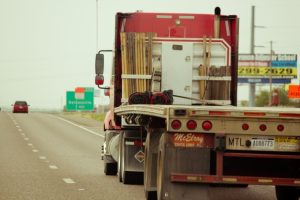
The Florida Highway Patrol is reporting one person died in the truck accident, a 38-year-old visiting from Iowa. Two others suffered critical injuries and eight others suffered moderate to minor injuries. In addition, two firefighters who responded to the scene also required medical attention.
The decedent was riding in the rear seat of a Lincoln Town Car that was rear-ended by the semi truck. That Town Car is alleged to have burst into flames upon impact. Decedent was declared dead at the scene.
Witnesses said an Iraq War veteran who was nearby sprung into action to pull several victims from the seven vehicles involved in the horrific crash. His actions may well have saved lives and lessened injuries.
Investigators have not yet filed charges in the case, though they have said that action is likely, based on what they know so far. A statement released by FHP indicated that an improper lane change may have played a central role in the crash, though it’s not clear which vehicle made that improper lane change.
Typically anytime there is a rear-end collision, there is a rebuttable presumption that the driver in the rear is at-fault. There is a general understanding that vehicles ahead may need to halt abruptly. That’s why motorists need to keep an assured clear distance.
However, there may be some instances in which the driver in the rear could be cleared of liability.
The 2007 decision by Florida’s 3rd District Court of Appeal in Department of Highway Safety & Motor Vehicles v. Saleme established that a rebuttable presumption can be refuted if:
- There was a mechanical failure involving the rear vehicle;
- There is evidence of a sudden and unexpected stop or lane change;
- There is evidence that the vehicle struck was illegally stopped on the road.
Courts have been particular about how they apply these exceptions. For example, it’s not enough to show that the driver in the lead slammed on his or her brakes. It has to be both sudden and unexpected. That usually means a scenario like a vehicle stopped arbitrarily in the middle of a highway. But if, for example, the car ahead stops suddenly at an intersection because another driver is running a red light, that is not considered an unexpected scenario.
If the other driver presents sufficient evidence of one of these exceptions, then the court may consider comparative fault by that lead driver (or others).
Truck accident lawsuits in Florida tend to be more complicated anyway, which underscores the need for an experienced lawyer. While in most car accident cases, one would simply sue the at-fault driver, a collision with a commercial truck usually involves naming numerous defendants – the driver, the carrier, the truck owner, the mechanic and more. In a situation like this where multiple vehicles were involved, there may also be a number of other at-fault too.
Injured persons will also want to keep in mind that most auto insurance policies have a per-accident damage cap. Because so many people were injured in this crash, there will likely be multiple people vying for a piece of that insurance money.
If you have been a victim of a traffic accident, call Chalik & Chalik at (954) 476-1000 or 1 (800) 873-9040.
Additional Resources:
Semi truck causes fiery 7-vehicle crash with fatality in Fort Myers, May 16, 2016, FOX 4
More Blog Entries:
Car Accident Lawsuit Names Snapchat as Defendant, May 3, 2016, Miami Car Accident Lawyer Blog
The post Semi Truck Accident in Florida Kills 1, Injures 10 first appeared on SEONewsWire.net.]]>
According to CBS Miami, the boy was just 16 and was driving with a learner’s permit. Florida’s graduated driver’s license program, which means that in order to legally operate a vehicle, he had to be seated next to a 21-year-old licensed driver. However, his two passengers were also 16-years-old and were also fellow students at Southwest Senior High School. Neighbors said the impact of the collision sounded like, “a bomb.” The teen driver’s car plowed into a BMW, driven by a mother and her 4-year-old daughter. The mother and girl suffered serious injuries. They were transported to the hospital, as were the three teens in other other car.
The case underscores how perilous and vulnerable teen drivers are, especially in the early stages of driving and most especially when they drive with passengers who are also teens. AAA Foundation for Traffic Safety found that compared to having no passengers, teen drivers 16 and 17 who had just one passenger under the age of 21 were 44 percent more likely to be killed in a crash. Having two underage passengers doubled the risk of the teen driver being killed. Three or more underage passengers quadrupled the fatality risk.
On the other hand, having at least one passenger over the age of 35 decreased the 16- and 17-year-old drivers’ risk of a fatal crash by 62 percent.
These are important statistics to consider ahead of summer, which tends to be associated with a higher instance of teen crashes.
Teens in general are more likely to be involved in a crash than other drivers. The AAA Foundation reported that just in 2013, nearly 3,000 people were killed and another 372,000 injured in crashes involving at least one teen driver.
We are fast approaching what is considered the “100 Deadliest Days” for teen drivers, which span from Memorial Day to Labor Day. During this time frame, an average of 220 teen drivers and passengers die in traffic accidents during the summer, which represents a 43 percent uptick compared to the other seasons.
The good news is that non-fatal injury collisions and fatal crashes involving teen drivers have fallen substantially over the course of two decades – both by more than 50 percent. Comparatively, injurious and fatal crashes involving adults fell too, but only by 25 percent. That means awareness matters. Parent involvement matters. Graduated driver’s license laws matter.
But this crash out of Miami shows how far we still have to go.
Recently, the Modesto Bee reported on the tragic case of an Oakdale, California student who survived a texting-and-driving teen auto accident in 2006. She wrote extensively about it for a senior project. But almost one year to the day of that collision, she died in another distracted driving accident. Police said she was reportedly arguing with a friend via text message.
Research has shown that teens are 12 times more likely to crash when they reach for a phone to check a text message and 16 times more likely when they actually respond to that text.
The NHTSA report teen drivers are the most likely to be distracted, and motor vehicle accidents are the No. 1 cause of teen deaths.
If you have been a victim of a traffic accident, call Chalik & Chalik at (954) 476-1000 or 1 (800) 873-9040.
Additional Resources:
Police: Teen Driver Runs Stop Sign, Causes Violent Crash, May 12, 2016, By Ted Scouten, CBS Miami
More Blog Entries:
Fort Lauderdale DUI Car Accident Proves Fatal for Two, May 2, 2016, Miami Car Accident Lawyer Blog
The post Police: Teen Driver Causes Miami Car Accident That Injures 5 first appeared on SEONewsWire.net.]]>
Given the fact that a huge percentage of today’s young children attend day care for at least some portion of the day while their parents work (11 million, according to Child Care Aware of America), many of these injuries occur in a day care setting. There is a troubling tendency by some child care providers to take the approach that, “accidents happen.” In truth, accidents and child injuries are much more likely at facilities where proper safety guidelines are not clear and where staffers are not adequately vetted or appropriately supervised.
Day cares in Florida have a duty to ensure children are safe from reasonably foreseeable harms. There is a lowered expectation of self protection when it comes to children. That is, we know that they are immature and undeveloped and thus do not fully appreciate certain dangers that we might consider open and obvious to an adult. Further, when a person or facility accepts the responsibility of caring for that child, a special relationship is established that requires them to exercise a heightened duty of care.
A number of recent cases of reported day care injuries across the country should alert parents to the possible dangers and of the rights they may have to compensation.
One recent case out of Birmingham, AL involves a toddler who was seriously injured after he was struck in the head by a falling television. According to AL.com, the child was asleep on the floor when another child tripped over an exposed cord. That caused a television set that was on a dresser to fall on top of the boy, resulting in severe head trauma and other injuries. His parents say he is continuing to receive speech and physical therapy, and it could be some time before the full extent of his head injuries are known.
They have since filed a lawsuit against the day care, alleging the workers failed to use reasonable care in ensuring the site was free from foreseeable harms because they did not properly secure the television or put away the exposed cords. The family is seeking both compensatory and punitive damages. The day care has reportedly responded to the complaint by alleging the child’s condition was the result of existing injury, infirmity or disease. The parents deny this, saying he was “completely healthy” prior to this incident.
There is concern about whether the facility had liability insurance at the time of the accident.
Another day care injury lawsuit was recently weighed by the Ohio Supreme Court. In World Harvest Church v. Grange Mut. Cas. Ins. Co., a day care center that was part of a megachurch was ordered to pay $2.87 million in damages to the family of a child who was struck repeatedly by a day care worker. The question before the state high court was whether that action was intentional misconduct or corporal punishment. If it was the latter, the day care’s liability insurer would be responsible to pick up the tab for $1.47 million. However, the court ruled the worker’s actions amounted to intentional misconduct, meaning the church would be responsible for the entire amount.
If your child has been injured as a result of poor care or supervision at a day care in Florida, we can help.
If you have been a victim of a traffic accident, call Chalik & Chalik at (954) 476-1000 or 1 (800) 873-9040.
Additional Resources:
World Harvest Church v. Grange Mut. Cas. Ins. Co., May 12, 2016, Ohio Supreme Court
More Blog Entries:
Florida Supreme Court Ends Attorney Fee Caps on Workers’ Compensation, May 15, 2016, Miami Injury Attorney Blog
The post Florida Day Care Injuries Give Rise to Lawsuits first appeared on SEONewsWire.net.]]>
But a new legal trend is emerging, one that involves the responsibility of those communicating on the other end. In a number of instances in different states, third parties that knowingly engage in text communication with drivers – or encourage drivers to engage in distracting activities – are being named as defendants in personal injury lawsuits. Success on this front has been varied, but it’s something our Miami car accident attorneys believe is worth exploring when there is evidence the crash was caused by distraction.
A recent article on Vocativ explored this burgeoning legal realm.
Let’s look at the recent case of Gallatin v. Gargiulo, and the decision handed down by a Pennsylvania county common pleas court judge. According to court records, decedent/ motorcyclist was slowing down to make a right turn when at the same time, a woman was operating a vehicle owned by defendant. She was behind the decedent motorcyclist at the time. It is alleged that the female driver was text messaging on her cell phone at the time of the crash, in violation of state law, and that she as inattentive and distracted, causing her to strike the motorcycle ahead of her, resulting in decedent’s fatal injuries. The complaint alleges that the female driver was texting at the time with her boyfriend/ owner of the car. Plaintiff, administrator of decedent’s estate, then sued not only the driver, but also the vehicle owner – not for vicariously liability by way of his ownership of the car, but for direct negligence for knowingly texting with someone while they were driving.
The judge noted there was no precedent in Pennsylvania that specifically spells out the duties or liability of a sender of a text message to a person who is driving. However, it took note of a ruling by the Superior Court of New Jersey in Kubert v. Best. In that case, the New Jersey court held the sender of a text message could be potentially liable if a car accident is caused by texting, but only if the sender knew or had special reason to know the recipient would view the text while driving and therefore be distracted. In Gallatin, plaintiff alleged defendant knew or should have known his girlfriend with whom he was texting was driving her vehicle and was therefore distracted. The assertion was that the actions of defendant aided or encouraged the driver to be distracted and thus provided a basis for establishing liability.
The court noted that while all plaintiff’s assertions had not yet been proven, if they were true, they could serve as the basis for establishing liability, based on the ruling in Kubert.
More recently, a Georgia man filed a lawsuit against Snapchat for “encouraging” motorists to drive distracted with creation of an app that captures one’s speed and superimposes the that recording on an image.
If you have been a victim of distracted driving, we can help.
If you have been a victim of a traffic accident, call Chalik & Chalik at (954) 476-1000 or 1 (800) 873-9040.
Additional Resources:
Texting a Person While They’re Driving Could Land You in Jail, May 3, 2016, By Jennings Brown, Vocativ
More Blog Entries:
Car Accident Lawsuit Names Snapchat as Defendant, May 3, 2016, Miami Car Accident Lawyer Blog
The post Texting With a Driver? You Could be Liable. first appeared on SEONewsWire.net.]]>
Normally, all attorney fees for auto accident lawsuits are doled out on a contingency fee basis by the plaintiff, which means they are based on a percentage of the final damage award and are only paid if the case is won. However, what F.S. 768.79(6)(b) says is that if a plaintiff serves a settlement offer to the defense which is rejected and then the plaintiff goes on to secure a judgment that is at least 25 percent higher than that settlement offer, plaintiff is to be awarded reasonable costs, including investigative expenses and attorney’s fees incurred from the date the offer was served.
That means a portion of your legal bill could be paid by the defendant if they refuse to take you up on a reasonable settlement offer. It’s intended as a means to encourage settlement to save the time and expense of trial.
In the recent case at issue, GEICO v. Macedo, plaintiff suffered injuries after a Florida car accident with a driver who was insured by defendant company. Before the case went to trial, plaintiff extended an offer to the defense for $50,000. At the time, GEICO was not a party to that case, which is common, as people can’t sue insurance companies right off the bat. They must first establish liability of the insured, and then pursue the insurer for payment.
However, even though GEICO wasn’t a party to the case, it was providing the insurer with a defense, pursuant to the terms of the auto insurance policy, as is also common. So when plaintiff extended her proposed settlement agreement, it was GEICO, by and through the legal counsel it was providing to defendant, who turned down that offer.
The case went to trial and the jury sided in favor of plaintiff. What’s more, jurors decided to award plaintiff four times as much as her proposed settlement agreement.
From there, plaintiff joined GEICO as a defendant to the action and sought collection of costs and fees, pursuant to F.S. 768.79(6)(b). The trial court granted her request.
GEICO appealed. The argument was that because it wasn’t a defendant in the initial action, it could not be liable for the decision of legal counsel not to agree to the settlement.
The appeals court disagreed. As it determined in the earlier case of New Hampshire Indemnity Company v. Gray, in which the court found the insurer’s notation in the policy that it would cover “other reasonable expenses incurred at our request” to include expenses associated with deciding to take a case to trial rather than settle it. Just like in the Gray case, the insurer in Macedo extended a policy that gave it the sole right to litigate and settle claims. It was also contractually required to pay for all legal costs it incurred in doing so. There was no definition of legal costs, nor was there any mention of exclusions.
Therefore, insurer will be required to pay those costs. However, the court did certify conflict with a sister court on the same issue.
If you have been a victim of a traffic accident, call Chalik & Chalik at (954) 476-1000 or 1 (800) 873-9040.
Additional Resources:
GEICO v. Macedo, May 6, 2016, Florida’s First District Court of Appeal
More Blog Entries:
Car Accident Lawsuit Names Snapchat as Defendant, May 3, 2016, Miami Car Accident Attorney Blog
The post GEICO v. Macedo – Auto Insurer Must Pay Plaintiff Attorney Fees first appeared on SEONewsWire.net.]]>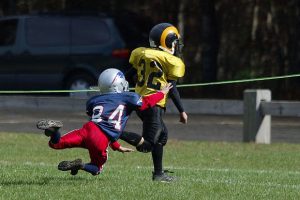
In an effort to combat a wellspring of negative press and declining enrollment, Pop Warner, the nation’s biggest youth football league, is doing away with kickoff – at least for its youngest players.
The New York Times reports the move makes Pop Warner the first sizable organization to take such initiative, though the NFL has considered it. Rather than engage in kickoff, players between the ages of 5 and 10 will start playing at the beginning of each half and after a score with the ball placed at the 35-yard-line. The organization said it will conduct a review of the results next year and may ultimately apply the changes to older groups too.
Earlier this year, Pop Warner settled its first and only concussion sports injury lawsuit filed by the mother of a former player. The complaint, filed in February 2016, sought millions in punitive damages for the untimely death of 25-year-old Joseph Chernach, who committed suicide in 2012. An autopsy revealed Chernach suffered from chronic traumatic encephalopathy, which is a brain disease that is caused by repeated blows to the head. It can be a significant contributor to depression and other mental health issues. Chernach’s mother blamed Pop Warner’s practices for her son’s injuries. The organization reportedly paid $2 million to Chernach’s family, who then agreed to dismiss their lawsuit. The organization admitted no wrongdoing.
Last year, a federal judge approved an almost-$1 billion settlement between 20,000 retired players and the NFL, which was accused of negligent practices that resulted in concussions and foot-ball related head injuries and long-term brain damage.
Pop Warner used to carry a $2 million liability policy on each of its players, though that has been reduced to $1 million. Individual chapters do have the option of purchasing an additional $1 million per-player policy.
More than 325,000 youth are involved in Pop Warner sports, which include football, cheerleading and dance. The organization did boast some 250,000 football players in 2010, but that figure fell rapidly by 10 percent from 2010 to 2012. Speculation is that a growing awareness of the risk of brain injuries and head injuries has parents rightfully concerned.
Washington state was first to pass a law requiring coaches to bench young players if they suspect a concussion. Pop Warner followed suit in 2010, requiring medical clearance from a doctor before the children could return to the game. Two years later, the team prohibited full-speed, head-on blocking and tackling drills (where players line up face-to-face three feet apart and charge).
Kickoffs are an especially treacherous part of the game because players are required to race full speed down the field and charge straight into those carrying the ball and those blocking for them – some of whom don’t have any time to brace for that forceful impact.
Still, not all are happy about this change. One advocate argued that to do so was a means of, “bastardizing the game.” Still, he said children younger than 9-years-old shouldn’t play tackle football but instead should play flag football, with tackle football starting with high school players.
If you have been a victim of a traffic accident, call Chalik & Chalik at (954) 476-1000 or 1 (800) 873-9040.
Additional Resources:
Pop Warner Bans Kickoffs in Hopes of Protecting Its Youngest Players, May 12, 2016, By Ken Belson, The New York Times
More Blog Entries:
Roberts v. T.H.E. Insurance – Hot Air Balloon Injury, April 11, 2016, Miami Brain Injury Lawyer Blog
The post Reducing Brain Injuries in Children Goal of Pop Warner Nixing Kickoffs first appeared on SEONewsWire.net.]]>
This is a victory for injured workers in Florida, many of whom found it hard to find an attorney to represent them in their workers’ compensation cases due to the statutory caps on fees.
Business and insurance groups immediately complained there would be an “avalanche” of claims filed against Florida employers as a result of the ruling. But let’s put into perspective what was really at stake here: Workers, who through no fault of their own, had been injured on the job and their employer/ insurer were refusing to pay for basic medical care and a portion of lost wages. These individuals are simply trying to secure basic compensation, but they are up against well-lawyered businesses and insurance firms. Meanwhile, the worker is restricted in how much and in how their own attorney may be paid. Under the previous cap, plaintiff’s attorney in Catellanos v. Next Door Company was paid $1.53 an hour for more than 100 hours of legal work – all of which a judge deemed reasonably necessary to winning the case.
The only way businesses or insurers are made to pay is if they lose the case. That is, the court determines the worker was rightfully owed workers’ compensation benefits in the first place and companies denied them.
Let’s also bear in mind: Almost all employees in Florida are entitled to workers’ compensation and the whole point of the system is to avoid litigation. Workers have the benefit of a no-fault system that allows them a relatively quick turnaround for compensation on work-related injuries and employers get to avoid costly litigation. But because of the evolution of the laws in recent years, the scales have become unfairly tipped toward the employers.
When an employer/ insurer knows workers do not have access to adequate legal support, they are less likely to agree to pay workers’ compensation benefits they know are rightly owed – especially when the injuries in question are severe.
So that takes us back to the Castellanos case, in which the Florida Supreme Court ruled the mandatory attorney fee schedule for workers’ compensation cases is unconstitutional under the constitutions of both Florida and the U.S. government. The state high court noted that while the legislature has expressed the intent for the workers’ compensation system to deliver benefits quickly and efficiently, the reality of the matter is that the system is increasingly complex – to the detriment of the worker – and employees depend on assistance from an experienced Florida workers’ compensation lawyer to help them navigate through the thicket.
The court noted that just a few of the changes that make workers’ compensation claims difficult if not impossible without a lawyer:
- The elimination of the provision in the law that indicated cases should be liberally construed in favor of the worker (F.S. 440.015);
- Reductions in the duration of temporary benefits;
- An extensive fraud and penalty provision;
- A heightened standard of “major contributing cause” that now applies to most cases;
- The elimination of an opt-out provision;
- The addition of an offer of settlement provision that allows only the employer – but not the worker – to make an offer to settle.
Plaintiff had been injured in the course of employment and when he was denied benefits, filed a workers’ compensation claim with the help of an attorney. The attorney successfully refuted a number of the defenses raised by the employer and the insurance carrier and ultimately prevailed. However, workers’ compensation attorney fees are contingent not only on the success of the case but the size of the award. Here, that meant the attorney was entitled to just $1.53 an hour. This was under the scheme of what the legislature had deemed “reasonable,” and there was no mechanism for refutation.
The right of a claimant to obtain reasonable attorney’s fees when they win is an essential feature of workers’ compensation law and has been since 1941. The court held the irrebuttable presumption that a certain fee is reasonable is unconstitutional.
Even if the ruling results in a higher number of workers’ compensation claims, it would only be because they were artificially low to begin with. What this ruling does is even the playing field.
If you have been a victim of a traffic accident, call Chalik & Chalik at (954) 476-1000 or 1 (800) 873-9040.
Additional Resources:
Catellanos v. Next Door Company , April 28, 2016, Florida Supreme Court
More Blog Entries:
Rish v. Simao – Low-Speed Car Accident Lawsuit, March 26, 2016, Miami Workers’ Compensation Lawyer Blog
The post Florida Supreme Court Ends Attorney Fee Caps on Workers’ Compensation first appeared on SEONewsWire.net.]]>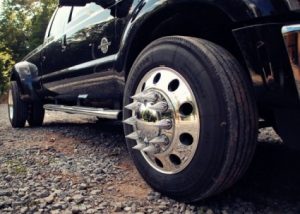
Serious truck accident, car accident and personal injury lawsuits with numerous defendants require the assistance of an experienced injury attorney. Consider the recent case of Jim Bishop Chevrolet-Buick-Pontiac-GMC, Inc. v. Burden, recently before the Alabama Supreme Court.
According to court records, the incident in question involved a vehicle fire in which plaintiff’s were injured. The truck that caught fire had been purchased from defendant’s dealership. Plaintiff filed a product liability lawsuit under the state’s extended manufacturer liability doctrine; the claim asserted negligent design and manufacturing, breach of implied warranties and failure to warn of inherent danger. Plaintiff’s wife filed a loss of consortium claim.
The vehicle manufacturer and a repair shop, also a named defendants in the case, responded and generally denied the claims. So too did the dealership. The dealership filed a cross-claim against one of the manufacturers, alleging they had wrongly refused to indemnify the dealership.
The manufacturer and repair shop asked the trial court to dismiss the allegations pertaining to negligent and wanton design and manufacture as well as the one under the Alabama Extended Manufacturer’s Liability Doctrine, arguing both of these required expert witness testimony to survive summary judgment. Plaintiff had not presented expert witness testimony. Plaintiff offered no objection to this, but instead persisted with the other claims. Those two defendants then entered into a settlement with plaintiffs, agreeing to pay them a total of $52,000. These settled the breach of warranty claims and those filed under the Magnuson-Moss Warranty Act.
Soon after, the dealership moved the court for a summary judgment on the remaining claims against it. Defendant argued:
- On the negligent failure to repair and failure to warn claims, it had never undertaken the duty to repair the vehicle;
- Expert witness testimony was required to show the cause of the fire that destroyed the truck and injured the plaintiff;
- Plaintiff had previously admitted expert witness testimony establishing the cause of the fire was unavailable.
Trial court denied that motion. Trial court also severed the claim of indemnification against the manufacturer.
Evidence was presented at trial indicating plaintiff had purchased numerous vehicles from defendant dealership before buying this one. Soon after, he began noticing a distinct smell in the truck cabin that would come and go. It occurred roughly 100 times and he would occasionally check the hood to see if he could spot the source. When he took the car into the dealership for an oil change about four months after purchase, he asked the technician to look for the source of the burning smell. The oil change technician told him he could find nothing that might be causing the issue.
Later on the same day, plaintiff was driving to visit his father when the service engine light came on and he again noted the burning smell. This time, the odor smelled like something very hot. Plaintiff decided to have the truck inspected and he stopped at a repair shop at another dealership on the way to his father’s hose and asked them to take a look. The service crew said they could find nothing that would be causing a burning odor.
Two months later, plaintiff again returned to the original dealership and complained of the burning odor. The dealership did find steering fluid was leaking, so that was fixed. However, it did not alleviate the smell. He returned three months alter, and again complained of the smell. Still, the dealership found nothing wrong. Same thing a few weeks later. At that time, the technician told him to bring it in when the smell was active.
A few months later, the burning smell started again. It was about 1 p.m., and plaintiff drove directly to the dealership. The service department told him they did not have time to look at it. He could leave it, but the dealership did not loan vehicles and plaintiff had to get to work.
He left for work and worked until about 2 a.m. the next morning. Upon returning home, the burning odor started again. The hazard lights started blinking and smoke emanated from the dashboard. The horn started blowing, he lost power steering. He then realized he lost control of the brakes. The heat was intense and he tried to open the doors. The doors wouldn’t open. Smoke began to fill the cabin, and he started to panic. he tried to smash the driver’s side window, but was unable. He was traveling approximately 35 mph. He threw the transmission into park and the truck started to slow. It was only then plaintiff’s doors would open, allowing him to jump out.
The truck became engulfed in flames. Paramedics arrived and transported plaintiff to the hospital for breathing trouble.
At the close of the trial, defendant moved for a judgment as a matter of law. Trial court denied and entered a judgment against dealership in the amount of $132,500.
Defendant appealed, arguing plaintiff failed to establish the dealership breached its duty to discover and repair a dangerous condition that proximately caused the fire. Specifically, the defendant argued the plaintiff failed to present any substantial evidence that the dealership did something or failed to do something that would violate acceptable care standards in diagnosing the burning odor. There was no evidence presented as to what procedures or techniques the dealership should have undergone.
The Alabama Supreme Court agreed with defense and reversed.
If you have been a victim of a traffic accident, call Chalik & Chalik at (954) 476-1000 or 1 (800) 873-9040.
Additional Resources:
Jim Bishop Chevrolet-Buick-Pontiac-GMC, Inc. v. Burden, May 6, 2016, Alabama Supreme Court
More Blog Entries:
Quilez-Velar v. Ox Bodies, Inc. – Underride Guards in Accidents, May 10, 2016, Miami Product Liability Lawyer Blog
The post Truck Accident Injury Lawsuit Verdict Reversed first appeared on SEONewsWire.net.]]>
But of course, it only works when properly constructed. In the case of Quilez-Velar v. Ox Bodies, Inc., the allegation was that the underride guards affixed to a tractor-trailer in San Juan, Puerto Rico failed in their main functional objective: To keep a car from riding up underneath a large truck. This resulted in the death of a young mother, who was driving with her toddler son.
A product liability lawsuit was filed against the maker of the company. While a jury decided the case in favor of the plaintiff in the amount of $6 million, jurors also apportioned 80 percent of the fault to the city of San Juan – which was a non-party in the injury lawsuit. This was bad news for plaintiff’s in their wrongful death lawsuit because it meant that the $6 million damage award would be reduced to just $1.2 million. Plaintiff, representative of decedent’s estate, appealed.
According to court records, the crash occurred Oct. 1, 2010, when a 28-year-old married woman was driving her toddler son on a highway overpass in her Jeep Liberty. The Jeep collided with a large, slowly-moving truck operated by employees of the City of San Juan. The truck had an underride guard that was affixed to its rear. That feature was manufactured by a company called ox Bodies.
The Jeep struck the truck from behind and underrode the body of the truck. The back of the truck penetrated the Jeep, causing lacerations to the victim’s head and face. She died five days after the truck accident.
Her family members filed a lawsuit in a Puerto Rico court, alleging negligence and seeking damages from the Commonwealth of Puerto Rico, the Puerto Rico Highway and Transportation Authority, Integrand Insurance Company and the City of San Juan. The city and its insurer later filed a third-party complaint for indemnification against the company that made the underride guards.
the city and its insurer deposited the $500,000 contribution for potential distribution if it was found liable. A court in Puerto Rico ordered that money distributed to plaintiffs and dismissed the city from the lawsuit. There was not a formal settlement, and therefore no release of liability.
An amended complaint by plaintiff was filed in federal court against the manufacturer of the underride guard.The company then filed a third-party action for indemnification against the city, at which point the city noted the $500,000 payment it had already made. Federal court judge then dismissed the city from the proceedings. The case continued with the product manufacturer as the sole defendant.
Plaintiffs asserted design of the underride guard was defective because it was too small – 16 inches on either side were left unprotected. Additionally, the guard wasn’t designed to adequately withstand impacts with loads that exceeded 7,000 pounds.
Following a 12-day trial, jurors returned a verdict in favor of plaintiff for $6 million, but determined the city was 80 percent liable, so defendant manufacturer was only responsible for 20 percent of the damage award, or $1.2 million
Both parties appealed, but the U.S. Court of Appeals for the First Circuit affirmed, though it certified a question on damages to the Puerto Rico court.
If you have been a victim of a traffic accident, call Chalik & Chalik at (954) 476-1000 or 1 (800) 873-9040.
Additional Resources:
Quilez-Velar v. Ox Bodies, Inc., May 9, 2016, U.S. Court of Appeals for the First Circuit
More Blog Entries:
Fort Lauderdale Car Accident Proves Fatal for Two, May 5, 2016, Miami Car Accident Lawyer Blog
The post Quilez-Velar v. Ox Bodies, Inc. – Underride Guards in Accidents first appeared on SEONewsWire.net.]]>
There may be one exception, though: Apparent agency.
Apparent agency, also sometimes referred to as apparent authority, occurs when a reasonable third-party believed or understood the agent (i.e., at-fault person) had the authority to act on behalf of that third-party.
The theory of apparent agency does not require that the agent actually be employed by that third party, only that it appeared so to a reasonable person.
Florida case law has provided guidance for establishing apparent agency. In the 1995 1st DCA case of Robbins v. Hess, the court held that apparent agency existed only when all of the three elements were present:
- Representation by the purported principle;
- Reliance on that representation by a third party;
- Change in position by the third party in reliance on that representation.
An example of how the theory of apparent agency may come into play in a medical malpractice case was seen in the recent Idaho Supreme Court case of Navo v. Bingham Memorial Hospital.
According to court records, decedent had suffered a broken ankle when he slipped while getting out of his truck. The following day, he needed to undergo surgery to install a metal rod.
Unfortunately, the site of that surgery became infected and decedent would need to undergo a second surgery. A few days before that surgery, he was provided with an admission form that indicated the anesthesia services provided at the facility were given by an independent contractor who would be separately billed. He signed that form.
The day before the surgery, he was given a anesthesia and procedure consent form. That document did not clearly state that anesthesia would be administered by an independent contractor who was not an employee of the hospital. That document was provided on hospital letterhead and logo.
Prior to surgery, anesthesia was admitted via spinal tap. Soon after, decedent’s oxygen levels dropped and his heart rate slowed. However, he was eventually stabilized enough that doctors continued with surgery. However, following the procedure, decedent could not be revived. He died several days later, having never regained consciousness.
Plaintiffs, representatives of decedent’s estate, filed a medical malpractice lawsuit against not just the anesthesiologist, but also against the hospital. The hospital countered with a request for summary judgment, arguing it could not be vicariously liable for the alleged negligent actions of the anesthesiologist, an independent contractor.
District court granted summary judgment and plaintiff appealed. Plaintiff argued the hospital could be liable based on the theory of apparent agency.
The state supreme court noted the two elements under Idaho law needed to establish apparent agency against a health care facility with regard to independent contractors:
- Conduct by the (hospital) that would lead a reasonable person to believe another person acts on the (hospital’s) behalf (i.e., conduct by the hospital holding out a health care professional as an agent);
- Acceptance of agent’s services by one who reasonably believes it is rendered by the hospital.
The court noted there was sufficient evidence in this case – based on the consent form signed by decedent – that the theory of apparent agency could be established and accepted by jurors.
Based on this, the state high court reversed and remanded for trial.
If you have been a victim of a traffic accident, call Chalik & Chalik at (954) 476-1000 or 1 (800) 873-9040.
Additional Resources:
Navo v. Bingham Memorial Hospital, April 26, 2016,Idaho Supreme Court
More Blog Entries:
Bove v. Naples HMA – Florida Medical Malpractice Statute of Limitations, April 21, 2016, Medical Malpractice Lawyer Blog
The post Navo v. Bingham Memorial Hospital – Apparent Agency first appeared on SEONewsWire.net.]]>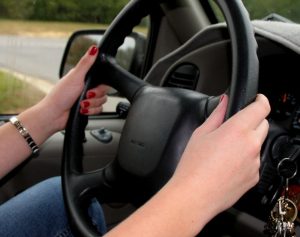
Authorities say 32-year-old Danielle Nichole Baldwin and her fiance, Sondroz Steven Olivert, 35, were killed when the drunk driver rear-ended Olivert’s vehicle. The impact by the drunk driver’s Kia caused Olivert’s Nissan to crash into a Chrysler. After that impact, the alleged drunk driver slammed into two other vehicles.
Olivert and Baldwin, who were on their way to celebrate their anniversary, were pronounced dead at the hospital. A relative of Baldwin told a reporter the two loved going to the beach and were planning to be married next year.
Meanwhile, investigators say the driver of that Kia fled the scene of the crash. He was, however, found a short time later and transported to a local hospital with non-life-threatening injuries.
Without explaining how they reached this conclusion, investigators said they believe alcohol played a role in this series of crashes. However, no charges have been filed.
In a case like this, there may be a number of avenues for our wrongful death attorneys to pursue compensation for loved ones left behind.
First, of course, is the alleged drunk driver and his or her insurer. However in too many of these cases, drivers who flee the scene of a crash don’t have insurance to begin with.
There are a few options victims have at that point. First, it’s worthwhile to note that debt incurred in a DUI accident (i.e., by a DUI personal injury or wrongful death lawsuit) is not dischargable per 11 U.S.C. 523(a)(9).
Unfortunately in many cases, DUI defendants do not have any noteworthy assets or income from which to collect.
Victims could then look at who owned the vehicle. If it was someone other than the driver, there may be grounds for a vicarious liability action. Vicarious liability can be asserted even when the defendant was not directly negligent. Motor vehicles are considered a dangerous instrumentality in Florida, which means owners can be held responsible if the vehicle was entrusted to someone who drove it carelessly or recklessly.
DUI accident victims could also explore the possibility of a dram shop law action. This is when the bar that served the drunk driver before he or she got behind the wheel is held liable for the injuries that result when that patron drove drunk. In Florida, such liability can only be imposed when the accused driver was either:
- Under 21-years-old;
- Known to be habitually addicted to alcohol.
Finally, victims will want to look at the uninsured/ underinsured motorist (UM/ UIM) coverage that applied to those involved. These policies will step in to provide coverage for serious injuries and wrongful death when the at-fault driver either:
- Had no car insurance;
- Did not have enough car insurance to fully cover the damages inflicted by drunk driving.
Although the driver may face criminal charges, this is separate from any civil liability that may be imposed by the families of the victims.
If you have been a victim of a traffic accident, call Chalik & Chalik at (954) 476-1000 or 1 (800) 873-9040.
Additional Resources:
Couple Killed in Crash in Fort Lauderdale, May 1, 2016, By Erika Pesantes, Sun Sentinel
More Blog Entries:
Car Accident Lawsuit Names Snapchat as Defendant, May 3, 2016, Fort Lauderdale DUI Accident Lawyer Blog
The post Fort Lauderdale DUI Car Accident Proves Fatal for Two first appeared on SEONewsWire.net.]]>
But is that warning enough to divorce the company from liability for these so-called, “high speed selfies”? Should it have known that people were going to use (and in fact were using) the filter to record themselves driving fast behind the wheel?
A car accident lawsuit filed recently in Georgia asserts that company should be held responsible to compensate for injuries caused by an 18-year-old driver who used the filter while allegedly traveling 107 mph. Plaintiff alleges the company “motivated” younger drivers to use the filter while driving by doling out points for using the app, encouraging use during everyday activities – like driving.
The young driver and the friends in the car with her have argued instead that it was plaintiff who drifted into their lane, causing her to lose control of the vehicle.
Plaintiff says as a result of the crash, he suffered severe traumatic brain injury and was hospitalized for five weeks. A former Uber driver who had just started his shift at the time of the crash, he has reportedly been unable to return to work.
An accident reconstructionist reportedly determined that at the time of the crash, defendant driver was traveling at 107 mph. Shortly after the crash, as the teen lie on a stretcher, in a neck brace and with blood dripping down her face, she snapped another photo. That one she captioned, “Lucky to be Alive.”
The case is interesting not only for the fact that it once again underscores the dangers of distracted driving (which largely involves people who refuse to put down their smartphones), but it also highlights a new push to recognize distraction as a danger akin to drunken driving. Cases like this will continue to crop up if we treat providers of this technology the same way we do bars under state dram shop laws. Licensed establishments that serve alcohol can be held liable in some cases for serving to minors or those who are known to be habitually addicted to alcohol. Plaintiffs here are seeking accountability from Snapchat here in the same way.
Founder of Mothers Against Drunk Driving and also of a new organization called Partnership for Distraction-Free Driving, Candace Lightner, called distracted driving a killer that is still socially acceptable.
Snapchat awarded users “trophies” for using the speed filter, but never expressly offered trophies for high speed driving. The app itself displays the warning not to Snap and drive.
The local Georgia police department handling the case has not charged the teen driver with speeding because, a representative says, there were conflicting reports about how fast she was driving. The agency is investigating that aspect as well as whether she was using social media while driving and also whether plaintiff may have violated the law by changing lanes without signaling.
Petitions on Change.org have called for Snapchat to nix the speed tracker. The company has not at this juncture given any indication that it would do so.
If you have been a victim of a traffic accident, call Chalik & Chalik at (954) 476-1000 or 1 (800) 873-9040.
Additional Resources:
Snapchat at 107 MPH? Lawsuit Blames Teenager (and Snapchat), May 3, 2016, by Katie Rogers, The New York Times
More Blog Entries:
Moreno v. City of Gering – Government Liability in Bus Accident, April 27, 2016, Car Accident Lawyer Blog
The post Car Accident Lawsuit Names Snapchat as Defendant first appeared on SEONewsWire.net.]]>
A former hospital nurse from Hialeah asked the court to declare Florida’s workers’ compensation law unconstitutional, asserting that the ongoing erosion of benefits year after year fails to pass constitutional muster.
The court heard oral arguments earlier this month in Stahl v. Hialeah Hospital et al., in which nurse Daniel Stahl laid forth the case that workers’ compensation in Florida – since its inception in 1935 – has been “picked away and picked away” by lawmakers seeking to appease corporate fundraisers and insurance lobbyists. It has resulted in a situation where, the plaintiff alleged, workers in Florida are not much better off those those toiling away in sweat factories.
Specifically at issue in the Stahl case is that plaintiff would have been entitled to permanent partial disability benefits due to a work-related injury – but those benefits no longer exist in Florida due to legislative changes in recent years.
Here’s why this matters to all injured workers in the state: Workers’ compensation was created as a “grand bargain.” In exchange for fast, fault-free benefits for basic needs (i.e., medical expenses, lost wages, funeral expenses, survivor benefits, etc.), workers forfeit the right to sue their employers for negligence that results in a work-related injury. This is referred to as the “exclusive remedy.”
But back in 2003, state legislators scrapped benefits for permanent partial disability. So workers who have suffered some degree of permanent but not total disability can’t obtain long-term compensation anymore. That’s wrong, plaintiff argues.
The case is being closely watched, especially after justices decided not to weigh in on another workers’ comp challenge, Florida Workers’ Advocates v. State of Florida.
While one justice raised the issue that this plaintiff, who was injured back in 2003 – just after the new law was passed – while lifting a patient, effectively expanded his challenge to encompass the entire workers’ compensation system. Plaintiff’s attorney countered that while no worker would have every single section of the law apply to them, it was nonetheless appropriate to challenge the entire law. Defense attorneys posited that this idea of the “kitchen sink cumulative argument” is best left to the legislature, while the courts should only consider taking a position on the law where the case has ample relevant issues and evidence.
The hospital further argued that even if the court were to take on this issue, plaintiff wasn’t the best person for it because he never established he would have been entitled to permanent partial disability in the first place.
After plaintiff’s injury, he was no longer able to continue doing his job. He had no choice but to seek other employment, which in his case involved teaching at a nursing school. This meant accepting a pay cut. For this, he says, he absolutely could and probably would have been compensated with permanent partial disability.
Florida lawmakers have slashed workers’ rights repeatedly over the years with a myriad of measures, including:
- 1970 – repealing the right to opt-out of the system;
- 1993 – Reducing temporary disability benefits limit to 104 weeks;
- 2003 – removing benefits for partial disability
If you have been injured at work, call our offices today.
If you have been a victim of a traffic accident, call Chalik & Chalik at (954) 476-1000 or 1 (800) 873-9040.
Additional Resources:
Workers’ comp fight could have high stakes, April 4, 2016, By Jim Saunders, Sun Sentinel
More Blog Entries:
Construction Accident Statistics Keep Workers on High Alert, Oct. 10, 2014, Miami Work Injury Lawyer Blog
The post Florida Supreme Court to Weigh Workers’ Compensation Challenge first appeared on SEONewsWire.net.]]>
In a number of these accidents, county officials end up settling the resulting injury lawsuits, including most recently one for $75,000 after a woman was injured due to a bus accident on I-95 in 2013 that resulted in a four-car pileup.
Although bus accidents are relatively rare compared to car accidents, they are still an issue and victims need to know what recourse they have to recover damages for medical expenses, lost wages and pain and suffering. Ascertaining damages, too, can be a challenging and quite technical endeavor.
Our Miami bus accident attorneys are prepared to help.
In keeping abreast of the most up-to-date in bus accident law, we came across the recent case of Moreno v. City of Gering, a case heard recently by the Nebraska Supreme Court. Plaintiff was a passenger in a handibus owned and operated by the county when the handibus was struck by a van operated by a city volunteer firefighter. Plaintiff was ejected from the bus and landed on the pavement. She suffered personal injuries as a result.
Unlike in many bus accident cases, defendants – both the city and the county – admitted liability. That meant the only matter in dispute was damages, meaning how much were plaintiff’s injuries worth. This was to be determined at a bench trial.
A major point of contention was the cervical fusion surgery performed on plaintiff by a doctor who reportedly came under fire in published reports for performing an unusually high number of these surgeries when they were unnecessary and potentially dangerous. Doctor was being sued for medical malpractice by a number of plaintiffs. Defendants sought records that documented those surgeries and plaintiff didn’t object.
Ultimately, the court ruled this information wasn’t necessary because it related to non-party patients that were only going to be used as character witnesses against the doctor and his reported propensity to perform unnecessary surgeries. The probative value of the evidence in this case, the court ruled, was minimal.
The doctor would later testify that the accident had aggravated a pre-existing condition for the plaintiff that required the surgery.
Defense presented expert witness testimony to counter the doctor’s assertion that the surgery was necessary. However, at one point, one of those witnesses described the surgeon’s treatment of plaintiff as “worse than malpractice,” that the surgeon was a “criminal,” the surgery was “unnecessary” and also an “assault.”
Despite these statements, jurors awarded plaintiff $575,000. They determined the accident aggravated plaintiff’s pre-existing condition and the surgery was necessary.
Defendants appealed, arguing the trial court erred in overruling their motion to compel discovery regarding the surgeon, finding the surgery was necessary and awarding damages based on the surgery and related medical care.
The Nebraska Supreme Court affirmed. The trial court has discretion in deciding motions pertaining to discovery, and the higher courts will only review for an abuse of that discretion. It was concluded based on the record that the lower court clearly understood the records defendants sought to obtain, knew the purpose they wished to use them for and chose not to. There was no indication that the trial would have reached a different conclusion had the court decided otherwise.
If you have been a victim of a traffic accident, call Chalik & Chalik at (954) 476-1000 or 1 (800) 873-9040.
Additional Resources:
Moreno v. City of Gering, April 15, 2016, Nebraska Supreme Court
More Blog Entries:
2015 brought biggest increase in car accident deaths in 50 years, March 10, 2016, Miami Bus Accident Attorney Blog
The post Moreno v. City of Gering – Government Liability in Bus Accident first appeared on SEONewsWire.net.]]>
The tragic auto accident, which occurred in March 2015 at the intersection of State Road 78 and U.S. 27 in Glades County, was the subject of a year-long investigation and a number of changes to the intersection where the crash occurred. The conclusions of the report help to clarify the avenues of financial recovery victims may have.
All the people aboard the bus were from Fort Pierce and belonged to the Independent Haitian Assembly of God Church and were returning from a Palm Sunday celebration with a sister church in Fort Myers.
Local investigators determined early on that the 58-year-old van driver breezed through a stop sign, apparently not seeing it, before tearing across the four-lane highway and careening off the road and nosediving into a steep embankment before landing in a canal. The driver – one of only two people wearing a seat belt in the van – did not survive. Of the 10 who survived, all – including a four-year-old girl – were seriously injured.
There were no other witnesses to the crash. In fact, the only reason help arrived was because one of the passengers was able to stagger to the roadside and flag a passing vehicle to call police.
Investigators also knew fairly quickly that the van was rated for safely carrying 15 people, and yet was carrying 18. A 2004 report by the National Highway Transportation Safety Administration (NHTSA) revealed car accidents involving these 15-passenger vans were more likely to be deadly due to the risk of rollover. That didn’t happen in this case, but investigators did learn the van was not properly equipped with seat belts, as the law requires.
The driver had an active class B commercial driver’s license good through 2019, had been medically cleared by his doctor per annual state requirements and appeared to be in good health. He was also familiar with this particular route. As far as his driving safety history, he had been cited for speeding three times in his driving history, the most recent in 2010, and he had a citation for careless driving in 2004.
As far as the van itself, there were no notable mechanical problems.
The intersection was equipped with all the legally required signage, though the Florida Department of Transportation (FDOT) did end up making some changes after the crash, per recommendations made by the NTSB. Those included: A larger stop sign, a flashing “stop ahead” sign, rumble strips and reflective markers along the canal.
As far as liability, it’s tough to know without having in-depth knowledge of all the details, but in general, we can say potential parties in this case might include:
- The estate of the driver/ driver’s insurer
- The church/ church’s insurer (both as owner of the van and employer of the driver)
- Victims’ underinsured motorist (UIM) carrier
In other situations, we might recommend exploring whether the manufacturer could be held liable for a defect and also the government agency responsible for road maintenance, but neither of those appear to have been an issue in this case.
If you have been a victim of a traffic accident, call Chalik & Chalik at (954) 476-1000 or 1 (800) 873-9040.
Additional Resources:
Fatal Glades County Van Crash Report Released, April 12, 2016, By Michael Braun, News-Press
More Blog Entries:
Facts About Florida Car Accidents, April 8, 2016, Miami Car Accident Attorney Blog
The post Van Driver in Fatal Florida Crash Impaired by Allergy Medicine first appeared on SEONewsWire.net.]]>
The amount of time depends on a number of factors, including the type of case, where it’s being filed and whether you knew or had reason to know about the injury and/or cause of it right away.
In medical malpractice lawsuits, the statute of limitation in Florida holds that the case must be filed within:
- Two years from the time the incident was discovered or should have been discovered;
- No later than four years from the date the action occurred;
- No later than seven years in cases of fraud, concealment or intentional misrepresentation of fact that prevented discovery of the injury within that four-year period.
The bottom line is those pursuing injury litigation need to act quickly. Two years may sound like a substantial amount of time, but consider too there are additional notice and filing requirements for medical malpractice lawsuits that demand extra time. For example, claimants in medical malpractice lawsuits must file a notice of intent with the defendant before a lawsuit can be filed. Additionally, plaintiffs have to have an affidavit from at least one (though probably more) expert witnesses in hand before they can file; these affidavits have to attest to the professional opinion that defendant breached the accepted standard of care for his or her professional field.
This kind of evidence takes time, and as the recent case of Bove v. Naples HMA shows us, a case that is filed down to the wire may not work out well for plaintiff.
According to court records, a man died on Feb. 26, 2012 after suffering an internal bleed after doctors performed a biopsy of bone marrow on him. After the bleed was discovered (but before patient died),patient was evaluated by a physician who determined the bleed was co-morbid, meaning it was occurring in conjunction with other underlying medical ailments.
Patient’s widow (later the plaintiff) met with an attorney in July 2012, though it wasn’t until February 2014 that she received copies of letters from two medical experts who opined her husband’s death had been caused by the internal bleed resulting form the bone marrow biopsy.
On Feb. 25, 2014 – the day before the two-year anniversary of her husband’s death – plaintiff filed a notice of intent to pursue litigation to the doctors who had conducted and overseen her husband’s bone marrow biopsy. However, this notice was not received until March 4, 2014. The notice stated the two-year time frame “would begin to run from the from the date of (decedent’s) death,” and indicated this was the date the family discovered the negligence of defendants.
This proved a critical error.
She later filed her wrongful death lawsuit, and defendants responded with motions to dismiss because the statute of limitations had expired. Trial court granted.
On appeal, Florida’s Second District Court of Appeal affirmed, noting that although there was a case to made that plaintiff did not discover the negligence until months after her husband’s death, she had specifically stated in her notice of intent that the clock on statute of limitations started ticking on the date of her husband’s death – and she filed the lawsuit too late to meet that deadline. The court ruled that, “generally, parties are bound by the negligence in their pleadings.”
If you have been a victim of a traffic accident, call Chalik & Chalik at (954) 476-1000 or 1 (800) 873-9040.
Additional Resources:
Bove v. Naples HMA , April 1, 2016, Florida Second District Court of Appeal
More Blog Entries:
Liability of Car Owners for Car Accident Injuries, April 2, 2016, Miami Medical Malpractice Lawyer Blog
The post Bove v. Naples HMA – Florida Medical Malpractice Statute of Limitations first appeared on SEONewsWire.net.]]>
The term “discretionary function” is understood to mean a duty or function that necessarily requires the exercise of reason and discretion as to how, when or where the action should be done. Courts have struggled with interpreting this waiver because, to some extent, all most all duties require some discretion. Usually what is considered is whether mandatory regulations require certain specified conduct. So for example, there is some statute that indicates a government worker “shall” as opposed to “may” carry out some course of action. The second element is whether the decision requires some exercise of judgment based on considerations of policy.
Discretionary function immunity is sweeping in depth, and it needs to be considered prior to pursuing any personal injury lawsuit against the government. That said, it does not protect government agencies in all instances.
Take the recent case of City of Beech Grove v. Beloat, an Indiana Supreme Court case brought by a woman who suffered a trip-and-fall injury on a public street and sued the city for negligent maintenance.
The underlying incident occurred in June 2012 as plaintiff was walking from her home to the library. She began crossing the street and as she did so, she took note of a pickup truck that had stopped a few feet into the crosswalk area. In order to avoid walking right into the truck, she stepped slightly outside of the crosswalk. Suddenly, she heard a snap. She fell to the ground. She looked down to see that her foot was stuck in a deep hole in the ground.
She was unable to get up and had to remain sitting in the middle of the street until two others nearby stopped to help her. One of these individuals drove her to the hospital. It was there she learned she had a broken leg.
Plaintiff filed a personal injury lawsuit against the city, alleging the city negligently failed to maintain the street and that her stepping into that hole caused her to fall and incur medical bills and pain and suffering.
The city responded by denying liability and asserting immunity under the state tort claims act. The city later motion for summary judgment, asserting:
- Plaintiff was unable to prove the cause of her injury;
- City was immune from the lawsuit per the discretionary immunity function provision of the state tort claims act;
- Plaintiff was contributorily negligent.
Although the trial court denied the motion, the appellate court in a split decision granted on the basis that the discretionary immunity exception applied.
The state supreme court granted review and vacated that decision. In so doing, the Indiana Supreme Court ruled the city had failed to demonstrate that the alleged failure to maintain the street was an a policy decision that was made consciously by weighing the risks and benefits – which is what it would need to show to be granted this immunity.
The case was remanded back to the lower court for trial.
If you have been a victim of a traffic accident, call Chalik & Chalik at (954) 476-1000 or 1 (800) 873-9040.
Additional Resources:
Beech Grove v. Beloat, April 5, 2016, Indiana Supreme Court
More Blog Entries:
Study: U.S. Drivers Increasingly Dangerous, Distracted Half the Time, March 21, 2016, Florida Injury Lawyer Blog
The post City of Beech Grove v. Beloat – Discretionary Immunity Exception in Lawsuits Against Government first appeared on SEONewsWire.net.]]>
Property owners and property managers owe a duty to those who enter lawfully to make sure the site is reasonably safe. The level of responsibility depends on a number of factors, including the type of venue and the role of the person entering (i.e., business invitee vs. licensee, public property vs. private property, etc.).
Most people think of public venues when talking about premises liability law in Florida, but it can include private property, such as apartment complexes and even private homes.
Those who rent apartments – and their guests – should know they may have legal recourse in the event they are injured on another person’s property. Strong cases can be made where the injury was foreseeable and preventable and if the property owner/ manager failed to warn.
The recent case of Lompe v. Sunridge Partners is a good example. This was a premises liability apartment injury lawsuit weighed recently by the U.S. Court of Appeals for the Tenth Circuit.
According to court records in the case, plaintiff was a college student who had moved into an apartment unit in Casper, Wyo. while she attended classes.
The property was owned by a California couple who were investors and did not handle the day-to-day operations. When they purchased the property, they were informed some of the HVAC units needed maintenance and some needed replaced. They set aside $150,000 to do this on a rolling basis.
They then turned over management of the property to a property management company that was responsible for the day-to-day operations.
Two years prior to the alleged incident in question, there were a number of incidents involving excess levels of carbon monoxide, though never in individual units. One occurred in the club house and the on-site maintenance manager had to be hospitalized.
Still, no one on the property management staff was trained in checking the HVAC systems for safety, though one had requested such training.
On the morning in question, that same maintenance manager went to another unit to deliver a rental agreement when he smelled a peculiar odor. (It’s worth noting carbon monoxide is colorless, odorless and tasteless, but he would later tell authorities he smelled something odd.)
He contacted an HVAC firm, and the worker confirmed excessive levels of carbon monoxide. The building was evacuated, and plaintiff was carried out of her unit and had to be hospitalized. It was later noted her apartment unit did not have a working carbon monoxide unit.
Although she survived, she would later report long-term neurological deficiencies as a result of the carbon monoxide poisoning.
She filed a premises liability lawsuit against the property owners and property management company.
At a jury trial, she was awarded a total of $3 million in compensatory damages and $25.5 million in punitive damages, which are awarded to penalize a defendant for egregious and grossly negligent actions. Property owners were ordered to pay $3 million of that total and the property managers the rest.
Defendants challenged the court’s denial of a request for a judgment as a matter of law and also the award of punitive damages. They also argued the amount of punitive damages was excessive.
Appeals court decided there was not enough evidence to show that the property owners should have to pay punitive damages. They also determined the amount of punitive damages against the property managers was excessive, and reduced it to $1.95 million.
If you have been a victim of a traffic accident, call Chalik & Chalik at (954) 476-1000 or 1 (800) 873-9040.
Additional Resources:
Lompe v. Sunridge Partners, April 1, 2016, U.S. Court of Appeals for the Tenth Circuit
More Blog Entries:
GM Ignition Switch Verdict: Ignition Switch Didn’t Cause Crash, April 6, 2016, Miami Injury Lawyer Blog
The post Lompe v. Sunridge Partners – Apartment Injury Liability first appeared on SEONewsWire.net.]]>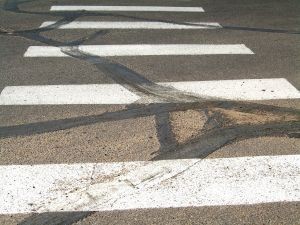
However, under current rules of civil procedure, injury victims, at-fault drivers, witnesses and lawyers are not allowed to discuss the issue of insurance. The only way such information may be allowed is if it has some direct bearing on the cause of the accident or the extent of one’s injuries – which usually, it does not.
Improper mention of insurance at trial can result in a mistrial or reversal of a verdict and order of a new trial.
That was the case in the personal injury lawsuit of Perry v. Asphalt & Concrete Servs. Inc., before the Maryland Court of Appeals (the highest court in that state).
According to court records, plaintiff was injured in a pedestrian accident. While he was crossing the street, he was struck by a dump truck and suffered serious injuries, including head trauma and rib fractures.
Plaintiff subsequently filed a personal injury lawsuit against the driver, the company that owned the truck and the company that had contracted with the truck company to do the construction work. But as it was later revealed, the issue of employment and insurance was more complicated than it appeared on the surface.
The general contractor had hired the truck company. The truck company was owned by the driver. However, as it turned out, the driver had no license and the company was not properly licensed and the truck had no insurance. This raised the question of whether defendant driver was in fact an employee of the general contractor, as opposed to an independent contractor himself.
Based on this, plaintiff asserted a claim of negligent hiring against the general contractor.
Prior to trial, general contractor filed motion for summary judgment, arguing it was not the driver’s employer and therefore was not negligent in hiring the driver and that even if it had known the driver had no license or insurance, it wasn’t the cause of the accident. Trial court denied that motion, which was followed by a motion in limine to exclude any mention that driver was not licensed or insured. The basis for this argument was that Maryland law generally doesn’t allow evidence of insurance to be admitted in trial unless it is identified as a proximate cause of the accident or negligence.
However, the circuit court allowed into evidence witness testimony regarding the driver’s lack of insurance coverage at the time of the accident. The reasoning had to do with establishment of the employer-employee relationship.
Jurors ultimately decided the case in plaintiff’s favor, awarding $500,000 for pain and suffering and $30,000 for pain and suffering, physical impairment and diminished quality of life.
The general contractor appealed this judgment, arguing that information regarding the insurance policy was inadmissible and improperly prejudiced the jury against them.
When the court of appeals weighed the case, the question was whether evidence that there was a lack of insurance by the driver likely influenced the jury regarding the general contractor’s liability for the pedestrian’s injuries.
The court decided that here, lack of insurance coverage was inadmissible and irrelevant in a negligent hiring claim because it did not establish the proximate cause of negligence or injuries. On this basis, the court reversed the verdict and ordered a new trial.
If you have been a victim of a traffic accident, call Chalik & Chalik at (954) 476-1000 or 1 (800) 873-9040.
Additional Resources:
Perry v. Asphalt & Concrete Servs. Inc., March 28, 2016, Maryland Court of Appeals
More Blog Entries:
Florida’s Dram Shop Law and the Undertaker’s Doctrine, April 4, 2016, Miami Pedestrian Accident Lawyer Blog
The post Perry v. Asphalt & Concrete Services, Inc. – $530K Accident Verdict Reversed for Insurance Mention first appeared on SEONewsWire.net.]]>
In these situations, when hot air balloon operators are facing litigation for personal injury or wrongful death, operators will often fall back on liability waivers. It’s almost guaranteed that participants will be required to sign one.
But these agreements are not bullet-proof, as the recent case of Roberts v. T.H.E. Insurance reveals. Neither is it a safe argument that operators offering free hot air balloon rides to the public for charity are somehow immune from liability.
In this case, defendant was a hot air balloon operator who agreed to offer free tethered hot air balloon rides as part of a charity fundraising event. The land on which the fundraiser was held was privately-owned, but was open to the public for the event.
It was a windy day, though the operator conceded he hadn’t read the weather report. He tethered one rope of the balloon to a pickup truck and another to a tree. This violated basic standards FAA standards, particularly for a windy day.
Plaintiff was waiting in line for one of those rides, and she’d been given a waiver of liability, indicating she would not hold the operator responsible if she was injured by the negligence of the balloon operator. She filled out that waiver, but she hadn’t yet turned it in as she waited.
Suddenly, the wind picked up. One of the ropes snapped. The basket to which the balloon was attached flew through the air and sailed straight for plaintiff. It struck her, and she was knocked to the ground, suffering injuries.
She later filed a personal injury lawsuit against the hot air balloon operator, alleging negligence.
The balloon operator countered with two defenses:
- Recreational Immunity Statute
- Waiver of Liability
Let’s talk first about the recreational immunity statute. Every state has one, including Florida, and the essence of it is that the government will all but eliminate the potential liability faced by a private land owner for dangerous conditions on the property if the land owner makes that land available for public use. It is supposed to encourage private landowners to share their property with the public.
The second, a waiver of liability, is recognized in most states as a binding contract in which a person accepts there is a certain degree of risk in an activity and frees the person or entity operating that activity from liability.
Trial court granted summary judgment to defendant and the appeals court affirmed. Plaintiff appealed and the Wisconsin Supreme Court (where the events of this case unfolded) reversed.
With regard to the recreational immunity statute, the court noted first of all that defendant was not a property owner. Yes, the members of the public got into the site for free and no, the hot air balloon operator wasn’t deriving a profit from his services. However, whether he did so or not had no bearing on whether the land was made available to the public because he didn’t own the property.
Because he was not the property owner, recreational immunity could not be extended to him.
Now with regard to waiver of liability for personal injury, this would have been a tougher argument. Ultimately, the court found that it was against the public interest. It would written so broadly as to absolve the hot air balloon operator for “any activity for any reason, known or unknown.”
The court stated that not only is the language of the waiver overly-broad, it’s not clear that waiting in line for the ride would have been something plaintiff would have considered as being covered by the waiver – especially because she wasn’t required to turn the waiver in until she prepared to board the ride. In fact, officials didn’t even discover the waiver until after the accident, when they found it crumpled on the ground near where she’d been knocked over.
If you have been a victim of a traffic accident, call Chalik & Chalik at (954) 476-1000 or 1 (800) 873-9040.
Additional Resources:
Roberts v. T.H.E. Insurance, March 30, 2016, Wisconsin Supreme Court
More Blog Entries:
Florida’s Dram Shop Law and the Undertaker’s Doctrine, April 4, 2016, Miami Injury Attorney Blog
The post Roberts v. T.H.E. Insurance – Hot Air Balloon Injury first appeared on SEONewsWire.net.]]>
The reason has to do with the fact that most auto insurance policies set a per-crash limit. So for example, a policy may allow for up to $50,000 per injured individual and up to $100,000 per accident. That would mean if three people were seriously injured – and equally injured – each would receive less than the $50,000 per-person limit. Instead, they would receive something closer to $33,000 apiece. That $17,000 difference can be big for someone who is grappling with extensive medical bills and lost wages due to the car accident.
That’s why our accident lawyers will always consider this possibility anytime we represent a plaintiff who has been involved in a multi-vehicle crash (also sometimes referred to as a “pile-up).
An example of how courts consider these cases was seen recently in the Iowa Supreme Court case of Hughes v. Farmers Auto Ins. Ass’n.
The question for justices was whether the trial court erred in finding there had only been a single “accident” for purposes of the at-fault driver’s auto insurance policy, which granted up to $500,000 per accident.
According to court records, the driver of a sport utility vehicle was traveling the wrong direction on the highway. As a consequence of this, the driver slammed into a semi-tractor-trailer traveling in the correct direction. The force of that impact totaled the SUV and ejected the SUV driver, who suffered fatal injuries.
The driver of the semi-tractor-trailer suffered serious injuries.
Just seconds later, the operator of a motorcycle approached the crash scene. He would later testify he saw the truck and what appeared to be a “dark blob” in the middle of the road. Although he was able to lay his bike down, he could not avoid serious injury. His left leg was ultimately amputated.
Both the motorcyclist and the truck driver sought damages from the SUV driver’s insurance company. In seeking to maximize the damages they could receive, plaintiffs sought a declaratory judgment from the trial court that there had been in fact two accidents, as opposed to just one.
However, the trial court denied that motion and determined that there had only been one accident. Both injured drivers appealed.
The state supreme court noted that even though it’s common to hear the term, “multiple-vehicle accident,” there are situations in which there are numerous causes, and therefore numerous accidents at issue.
However, courts in Illinois – and similarly in Florida – have held that a multiple-vehicle accident can be deemed a single “occurrence” when the collisions involve an uninterrupted chain reaction – no matter how many vehicles are involved.
Courts have stuck with this theory to find a “single accident” – even when the insurance policy didn’t expressly state, “regardless of how many vehicles were involved.”
Generally speaking, courts are going to look at whether the same negligence of the insured caused two collisions in rapid succession. If so, it’s going to be considered a “single accident.” However, if another driver’s negligence was an intervening cause or if a single driver committed separate acts of negligence that resulted in multiple collisions, then there may be more than one accident.
If you have been a victim of a traffic accident, call Chalik & Chalik at (954) 476-1000 or 1 (800) 873-9040.
Additional Resources:
Hughes v. Farmers Auto Ins. Ass’n., April 1, 2016, Iowa Supreme Court
More Blog Entries:
Liability of Car Owners for Car Accident Injuries, April 2, 2016, Miami Car Accident Lawyer Blog
The post Hughes v. Farmers Auto Ins. – Multiple-Vehicle Crashes first appeared on SEONewsWire.net.]]>- The GM ignition switch was faulty;
- This defect rendered vehicles unreasonably unsafe;
- GM failed to provide adequate warning of this dangerous defect;
- This defect did NOT cause the New Orleans crash that injured two plaintiffs.
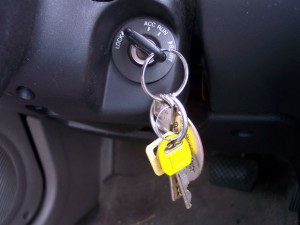
The outcome was both good news and bad news. The bad news is that for this particular plaintiff, she did not prevail in the assertion that the auto manufacturer was liable to pay her damages. However, for future cases, the finding that the ignition switch defect created an unreasonable danger and the company failed to warn about it was significant.
This was the second bellwether case on this issue, and it was one that was closely watched after the first was abruptly dismissed following allegations that the victim was dishonest on the witness stand.
In this case, the company insisted this particular car accident, which occurred on an icy bridge on New Orleans, was no different than 30 other crashes that happened in that same area that same night: attributable to the icy, slippery conditions of the road, not the ignition switch defect.
“(The accident) was caused by the driver losing control on an icy bridge during a state-wide winter weather emergency,” a company spokesperson wrote in a statement.
As far as the finding that the switch was defective, that had already been established by the fact that the company has recalled some 30 million vehicles in the last two years – with about 2.5 million of those directly related to the ignition switch. The firm claims to have fixed the problem, which is blamed for at least 124 deaths and hundreds of injuries.
So far, it has paid out $870 million in order to settle personal injury and wrongful death claims, and it’s also paid the U.S. government $900 million in order to resolve a criminal investigation.
The question now is how much the company will need to pay in order to resolve the remaining federal and state lawsuits. This second bellwether case suggests the company isn’t going to walk away without paying anything, but plaintiffs may have to work harder to prove liability. That’s going to mean more of them will likely accept a lower settlement than they might have previously anticipated.
Still, plaintiff attorney characterized the outcome as a, “victory for consumers” because it solidified the argument that GM failed to use reasonable care.
The jury verdict was handed down in New York following a two-week trial that involved two plaintiffs who said they were injured in the case. The first plaintiff was the driver and the second the passenger, and both reportedly suffered injuries when the driver lost control of the car. She alleged the loss of control was due to the ignition switch defect, which could cause the ignition to shut off mid-ride when the keys are only slightly jostled.
There are 200 pending lawsuits against the company for various defects, including the ignition switch.
This was the second of six bellwether cases – with three chosen by plaintiffs and three by the defense.
If you have been a victim of a traffic accident, call Chalik & Chalik at (954) 476-1000 or 1 (800) 873-9040.
Additional Resources:
Bell Tolls for Car Owners in GM Ignition Suits, March 30, 2016, By Paul Barrett, Bloomberg.com
More Blog Entries:
Another Wave of Airbag Recalls Affects 5 Million Vehicles, Feb. 21, 2016, Miami Car Accident Attorney Blog
The post GM Ignition Switch Verdict: Defect Didn’t Cause Crash first appeared on SEONewsWire.net.]]>

There are two primary exceptions:
- When the person who was served alcohol was under the legal age of 21;
- When the person is known to the establishment as one who is habitually addicted to alcohol.
In a recent case before Florida’s 4th District Court of Appeal, drunk driving injury victims argued the law should also be applicable to an establishment that assumes responsibility to stop patrons from getting behind the wheel drunk and then failing to do so.
Plaintiffs in De La Torre v. Flannigan’s Enterprises, Inc. relied heavily on the “undertaker’s doctrine.”
The Florida Supreme Court has used the Second Restatement of Torts, sectiosn 323-324A to define the “undertaker’s doctrine,” which involves the liability of third parties who gratuitously undertake the responsibility to render services to another person for that person’s protection. The third party can, by these actions, be held liable for physical harm that results from failure to exercise reasonable care.
There are a number of cases where this assertion has worked. In one case, Massad ex rel. Wilson v. Granzow, a party host took it upon himself to care for a guest who was drunk and had fallen and suffered a head injury. Host allegedly gave the guest a prescription painkiller, which worsened his symptoms, and then left him alone by the pool, where the guest drowned. The court applied the undertaker’s doctrine and the host was found liable.
In another case, Carroll Air Systems, Inc. v. Greenbaum, a business purchased drinks for an employee while he was entertaining clients.Employee later drove drunk and struck a third party, who was injured. The court ruled the employer wasn’t protected by Florida’s limited dram shop law because although employer didn’t furnish the drinks, it had knowledge – actual or constructive – that employee was intoxicated and in no condition to drive. Although the employer was not at the meeting, employer had the ability to control its employees.
But the 4th DCA said these cases are distinguishable from the case against Flannigan’s.
According to court records, a woman went there and drank several alcoholic beverages one evening in 2011. After a while, woman became intoxicated. Staffers at one point stopped serving alcohol to her, observing that she was drunk, and began serving her water. However, no one on staff tried to stop her when she left and got in the wheel of her car.
This was despite the fact that the restaurant had a policy in place to stop drunk patrons from driving. This involved taking the patron’s keys, calling law enforcement or ensuring the person had a sober driver. None of those actions were taken in this case, and the woman got in her car, left and was involved in a drunk driving accident, injuring the passengers.
Passengers later sued the bar, citing the undertaker’s doctrine. They argued that because the bar had this policy – and employees failed to adhere to it – the restaurant should be held liable. They argued the issue was not that the bar served the woman, but that employees failed in the duty they had assumed by way of restaurant policy.
However, neither the trial court nor the appeals court saw it that way. The state does not require establishments to stop people from driving drunk, and those that make efforts to try shouldn’t be punished for doing so, the 4th DCA reasoned.
Still, drunk driving accident victims should consult with an experienced injury lawyer in order to explore all potential avenues of recovery.
If you have been a victim of a traffic accident, call Chalik & Chalik at (954) 476-1000 or 1 (800) 873-9040.
Additional Resources:
De La Torre v. Flannigan’s Enterprises, Inc., March 9, 2016, Florida’s Fourth District Court of Appeal
More Blog Entries:
Study: U.S. Drivers Increasingly Dangerous, Distracted More Than Half the Time, March 21, 2016, Miami DUI Injury Lawyer Blog
The post Florida’s Dram Shop Law and the Undertaker’s Doctrine first appeared on SEONewsWire.net.]]>
So how are they involved? They are the owners of the vehicle. The lawsuit alleges their 25-year-old son, who was allegedly under the influence of alcohol or drugs, was driving recklessly at the time of the crash. Plaintiff asserts defendants Hanks and Wilson were aware of their son’s substance abuse history and negligently granted him access to their vehicle anyway.
Plaintiff alleges he suffered a brain injury and whiplash as a result of the accident. And while the police were never called and defendant driver was never charged with driving under the influence, plaintiff alleges that was only because driver – an aspiring rapper – begged them not to involve police, and plaintiff acquiesced.
That element is undoubtedly going to hurt plaintiff’s case, and is a good illustration of why car accident victims in Miami should always immediately:
- Report the accident;
- Seek medical attention.
This will help to bolster your credibility on the issues you are raising.
This case was filed in California. Luckily in Florida, plaintiffs do not need to prove negligence on the part of vehicle owners (if different from the driver) because Florida law broadly interprets the dangerous instrumentality doctrine to include motor vehicles.
The dangerous instrumentality doctrine is a common law rule that holds motor vehicles are an inherently and fundamentally dangerous tool. That means that when motor vehicle owners grant permission and access to others for use of their cars or trucks, they are vicariously liable for the reckless actions of the driver – regardless of whether they had prior knowledge of the driver’s recklessness or not.
This rule excludes long-term lessors, per the 1991 precedent set with Raynor v. De La Nuez. So for example, if a driver is leasing a vehicle from a dealership and then is negligent in causing a Miami car accident, the dealership is not going to be held liable for those injuries.
Similarly, the rule excludes short-term car rental facilities. First of all, there is the Graves Amendment, which is a federal law that shields motor vehicle leasing companies from liability for accidents involving those rental vehicles.
The Florida Supreme Court affirmed this federal protection from vicarious liability preempted state law. That decision was handed down in 2011 in the case of Vargas v. Enterprise. Previously, Florida allowed some leasing firms to be held responsible for up to $500,000 in damages.
But while the Graves Amendment does shield leasing firms from financial liability, it does not protect private vehicle owners.
That’s why anytime there is a car accident, your injury lawyers should look closely at who owned the vehicle. Sometimes, even if the driver lacked insurance, there may have been insurance on the vehicle itself. Alternatively, the vehicle owner may have an umbrella policy that might provide coverage for accidents like this, wherein the policyholder would otherwise be found personally responsible to pay for such damages.
If you have been a victim of a traffic accident, call Chalik & Chalik at (954) 476-1000 or 1 (800) 873-9040.
Additional Resources:
Tom Hanks and Rita Wilson Named in Lawsuit Against Son Chet Hanks for Alleged Car Accident, March 28, 2016, By Jodi Gugliemi, People.com
More Blog Entries:
Rish v. Simao – Low-Speed Car Accident Lawsuit, March 26, 2016, Miami Car Accident Lawyer Blog
The post Liability of Car Owners for Car Accident Injuries first appeared on SEONewsWire.net.]]>
According to ESPN, Walker, a Miami native, was traveling west on Northwest 75th Street on a Honda dirt bike around 8 p.m. on a Thursday. Miami-Dade police say he then collided with a Ford Escape that was traveling south on Northwest 21st Avenue.
The auto accident happened at a two-way traffic stop. Walker had not been wearing a helmet. He initially survived the impact, but was transported to Ryder Trauma Center at Jackson Memorial Hospital in Miami in extremely critical condition. There was extensive trauma to his head. Specifically, the swelling was significant and his brain had gone too long without sufficient oxygen.
Walker’s agent would later say he had no idea his client even owned a dirt bike. He said he was stung by the fact that a young man with such a promising career and his whole life ahead of him lost his life on a dirt bike.
He pleaded with others not to ride them in the street.
“Ride it off road,” he said, through tears. “Ride in the dirt. That’s why they call it a dirt bike. And wear a helmet.”
Police are still investigating the circumstances of the crash and whether the SUV driver, who stayed at the scene and was not injured, may have been all or partially to blame.
The Miami car accident lawyers at Chalik & Chalik know there aren’t a wealth of statistics on dirt bike accidents – at least not on the road – because they generally aren’t ridden on the road. What we do know is that when “off-road motorcycle riding among children and teens” was analyzed by the Centers for Disease Control and Prevention (CDC) in 2006, they found there were an estimated 23,800 children and teens under age 19 treated in hospital emergency departments for off-road motorcycle injuries. Those between the ages of 12 and 15 had the highest rates of non-fatal injuries; Patients over 16 accounted for 70 percent of injuries, with most being male and the majority driving the bikes. Nearly 8 percent of those injured had to be hospitalized.
Called dirt bikes, trail bikes and off-road motorcycles, operators and passengers of these vehicles are usually most susceptible to injuries caused by hazards like uneven terrain, trees and fences. Of course, when they are ridden on the road, there is a significant danger of being struck by a car or other automobile.
Another study published in 2004 in the journal Trauma sought a comparison of the spectrum of injuries and outcomes between off-road and on-road motorcyclists. They found there wsa no significant difference in terms of:
- Helmet use
- Loss of consciousness
- Initial systolic blood pressure
- Initial Glasgow Coma Scale
- Initial Revised Trauma Score
- Hand, wrist, forearm, arm, clavicle, foot, ankle, femur, pelvis, spinal or head injuries.
On-road motorcyclists, however ,were more likely to require blood transfusions and suffer blunt chest, skin and abdominal trauma. They were also more likely to die.
Walker had attended Miami Northwest High and was later recruited by Texas Southern University to play football. The Ravens selected him in the fourth round of the 2015 National Football League draft, and he played eight games in his rookie season, which he dedicated to his father, who died a year earlier of a heart attack.
If you have been a victim of a traffic accident, call Chalik & Chalik at (954) 476-1000 or 1 (800) 873-9040.
Additional Resources:
Ravens mourn loss of 23-year-old cornerback Tray Walker, March 20, 2016, ESPN.com
More Blog Entries:
Lowman v. State Farm – Fighting for Damages in Crash Case, March 14, 2016, Miami Accident Lawyer Blog
The post Ravens CB Tray Walker Killed in Miami Dirt Bike Accident first appeared on SEONewsWire.net.]]>
Unfortunately, these seemingly minor fender-benders can result in lasting injuries – and it may not even be immediately apparent to the person injured. That’s because symptoms of whiplash, concussion and other types of musculoskeletal and brain injuries may not be immediately apparent. That’s why it’s always advisable to seek immediate medical attention after a crash, even if you genuinely and overall feel alright.
The mere fact of slow speed and low impact does not necessarily negate a claim of personal injury in a car accident, but it can sometimes make it tougher to prove. Your attorney will likely need to present expert witness testimony in order to overcome the erroneous assumption that because the crash didn’t involve great force, there is no potential for substantial injuries.
Just as an example, consider that a 2,000-pound vehicle – the average size of a passenger car – traveling 10 mph would hit another object with nearly four tons of force. To suggest it would be impossible to do any damage is incorrect. Still, it’s a common defense in these cases, and your injury lawyer needs to be prepared to counter it.
In the recent case of Rish v. Simao, the Nevada Supreme Court reviewed a trial court decision to grant summary judgment to plaintiff as a sanction against defendant who repeatedly violated an order not to present any evidence as to the low speed/ low impact nature of the crash in question.
The state supreme court ultimately reversed because it found the lower court misapplied the standard it set in an earlier low-impact crash case. In the previous case, the state high court ruled that a defendant could not present evidence from a biomechanical engineer because that witness was not qualified to present that testimony.
However, the court in Rish wrongly concluded that meant a defendant was required to present the evidence of a qualified biomechanical engineer in order to present a low-impact defense. The higher court had only said if the expert witness testimony was going to be presented, it had to come from someone qualified to give it.
In the Rish case, plaintiff was rear-ended in stop-and-go traffic by defendant’s car. At the time of the crash, it was noted there was minimal property damage to both vehicles. Although an ambulance was called, both parties declined medical attention from EMS workers.
But days later, plaintiff’s neck began to ache and his head was throbbing. He sought medical attention, and received treatment.
He later filed a car accident lawsuit against defendant to recover for his injuries.
However, defendant sought to point out that the crash was low-impact, and therefore could not have caused injury. Plaintiff wanted to suppress this argument, and filed a motion to block all mention of the speed of the accident/ damage to the vehicles, on grounds that defense had not presented the expert witness testimony of a biomechanical engineer. Trial court granted this request.
The case was ultimately remanded for retrial, and plaintiff will now have a much steeper hill to climb to collect damages.
If you have been a victim of a traffic accident, call Chalik & Chalik at (954) 476-1000 or 1 (800) 873-9040.
Additional Resources:
Rish v. Simao, March 17, 2016, Nevada Supreme Court
More Blog Entries:
Study: U.S. Drivers Increasingly Dangerous, Distracted Half the Time, March 21, 2016, Miami Car Accident Lawyer Blog
The post Rish v. Simao – Low-Speed Car Accident Lawsuit first appeared on SEONewsWire.net.]]>
But as our understanding of the long-term consequences of repetitive hits to the brain have expanded, there is more of a focus on head injury early diagnosis, treatment and education.
Sadly, all that comes too late for a young former player in Wisconsin, who died in the summer of 2012 of suicide. He hanged himself. An autopsy would later reveal the young man, Joseph Chernach, suffered from a disease known as Dementia Pugilistica or Chronic Traumatic Encephalopathy (CTE). It was determined this condition, caused by repeated concussions incurred while playing youth football, was a “substantial” factor in his suicide, as it has caused him to suffer severe emotional, behavioral, cognitive and physical problems. He was also suffering from Post Concussion Syndrome at the time of his death, at age 25.
His mother filed a lawsuit against Pop Warner, the organization for which her son played starting at age 11. It’s the biggest and oldest youth football program in the country,hosting some 225,000 young tackle football players and an additional 100,000 youths in dance and cheer programs.
And now, the organization has settled a lawsuit with Chernach’s mother. The case is noteworthy because most publicity and litigation surrounding the sport has focused on the National Football League (NFL) and college teams. This case shows us how extremely damaging these repeated hits can be on very young players.
In Pyka v. Pop Warner Little Scholars Inc., filed in Wisconsin, plaintiff sought $5 million in damages. It was alleged the organization knew about the potential risks to young players and also that the danger they faced was even more serious than for older players. And yet, defendant failed to warn either players or their parents about that danger.
Further, the lawsuit alleged the organization was negligent in organizing, promoting and allowing children to play with helmets that were disproportionately heavy for their necks and bodies.
With all this, plaintiffs alleged, Pop Warner intentionally, maliciously or recklessly exposed children to the risk of serious injury to their head, brain and other body parts.
The agency and its insurance company, Lexington Insurance Company, did not reveal for how much the case was settled, but we do know the organization carried a $2 million-per-player liability policy at the time Chernach played. Today, the organization has half that amount of per-player liability coverage.
Following the settlement agreement, the organization said it takes the safety of its players very seriously and within the last six years has undertaken a number of different initiatives to make the sport safer. Among them:
- Full-speed, head-on blocking and tackling drills are no longer allowed.
- There are new rules that limit the amount of contact a player can have at each practice.
- All athletes suspected of suffering a concussion or head injury are immediately removed from practice, competition or play.
- Any athlete removed for suspicion of a head injury or concussion is not allowed to return until he or she has been cleared by a licensed physician.
This case is just one of several the agency is facing down. It is probable that as awareness grows about this issue and also this settlement, the number of sports injury lawsuits filed against the organization will increase.
If you have been a victim of a traffic accident, call Chalik & Chalik at (954) 476-1000 or 1 (800) 873-9040.
Additional Resources:
Pop Warner Football Settles Wisconsin Head Injury Lawsuit, March 21, 2016, By Stephanie K. Jones, Insurance Journal
More Blog Entries:
Newest Complete NHTSA Crash Report: Fatal Car Accident Analysis, March 16, 2016, Miami Sports Injury Lawyer Blog
The post Pop Warner Head Injury Lawsuit Settled first appeared on SEONewsWire.net.]]>
This was the conclusion gleaned from the largest, federally-funded study in the U.S., the results of which were recently published in the journal Proceedings of the National Academy of Sciences. Researchers with the Virginia Tech Transportation Institute (VTTI) reported that in the early 2000s, drivers in the U.S. had a per-mile fatality rate that was better than the vast majority of developed countries.
Today? We are ranked No. 17 out of 29. In terms of roadway fatalities, our per-mile death rate, as compared to other countries is:
- 11.4 in the U.S.
- 3.7 in the United Kingdom
- 6.8 in Canada
- 9.1 in the Philippines
- 6.8 in Brunei
The researchers opine that perhaps the biggest problem is the fact that U.S. drivers are consumed with their cell phones. They cannot get enough of them.
Study authors tracked the driving habits of 3,500 drivers over the course of three years. With permission from the participants, of course, researchers affixed cameras, sensors and radar inside the vehicles. They tracked the drivers’ behavior with every mile they drive. Participants were fully aware they were being watched, though the results were anonymous. In all, researchers were able to analyze data from some 35 million miles traveled.
What they discovered: Drivers in the U.S. are using their phone in some way for 50 percent of the drive.
Now, we all know the public warnings about how unsafe texting and driving is and most states have even passed laws in this regard. Still, the cell phones appear to be a central part of travel for most U.S. drivers.
Texting itself wasn’t actually all that common. Researchers saw drivers texting about 1.91 percent of the time. However, the drivers who did text increased their odds of a crash by 6-fold, as compared to those drivers who were 100 percent sober, alert and attentive.
Dialing a number was less common – observed just 0.14 percent of the time. And yet, researchers found that it was correlated with a 12-fold increase in car accidents.
Talking on the phone was more common, with researchers observing this behavior 3.24 percent of the time. However, just this act alone doubled the odds a driver would be in a crash.
Reaching for a phone – this seemingly innocuous act – increased the risk of a wreck by five times.
But phones weren’t the only culprit, and there were a few findings that surprised researchers.
For one, it’s been believed that while teen drivers were greatly distracted by teen passengers, adult passengers (for all drivers) were actually beneficial. The thinking was that adult drivers are paying attention to the road and may be like an extra set of eyes for the driver – even if the two were engaged in a conversation. However, researchers found that conversations with an adult passenger were associated with a 1.4-fold increase in car accidents.
Eating, drinking and applying makeup didn’t seem to make much difference in driver performance. However, driving while emotionally distraught had a huge impact. Although it was only observed to occur about 0.2 percent of the time, someone who was extremely emotional or agitated resulted in a 1,000-fold increased risk of a crash.
If you have been a victim of a traffic accident, call Chalik & Chalik at (954) 476-1000 or 1 (800) 873-9040.
Additional Resources:
U.S. Drivers are Distracted More Than Half the Time They’re Behind the Wheel, March 8, 2016, By Aarian Marshall, CityLab
More Blog Entries:
NHTSA: More Americans Wearing Seat Belts, March 2, 2016, Miami Car Accident Attorney Blog
The post Study: U.S. Drivers Increasingly Dangerous, Distracted Half the Time first appeared on SEONewsWire.net.]]>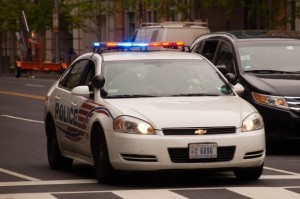
You rely on that gesture with the understanding that person isn’t going to tell you to go when there are cars coming? But what if it’s not actually completely safe? Does that driver owe any duty whatsoever to make sure that it is?
That was the issue in a recent car accident case before the Maine Supreme Judicial Court. In Murdock v. Thorne, a police lieutenant was waiting to pull in to the driveway of a police station. It was a four-lane road. Opposing direction traffic was stopped ahead of a red traffic light. A motorist traveling the inside lane of that opposing traffic stopped short of the police station driveway, so as to let the officer make his turn.
At first, the driver motioned for the lieutenant to wait a moment. He then checked his rear mirrors before turning back to the officer and waved him ahead, indicating it was safe to go.
According to court records, the officer inched his way forward to cross the opposing lane of traffic. He said he was relying on his own sight – and not the indication given by the other driver – but he still would not have proceeded had the driver not waved him ahead.
Just then, the motorist in front of whom the officer was crossing looked back in his rear view mirror and spotted another vehicle approaching. It was later determined that vehicle was traveling at or below the 25 mph speed limit.
The motorist who had waved the cop ahead now laid on the horn and started waving, in an effort to communicate that it was no longer safe. However, the officer did not hear or see this. He continued to proceed and was struck by the approaching vehicle.
He suffered serious injuries as a result.
The officer then filed a lawsuit against the motorist who waved him ahead, the driver who struck him and the insurance company that provided underinsured motorist coverage through his employer.
He also collected workers’ compensation benefits from his employer. So serious were his injuries that he was forced to resign from the police department later that year.
In his lawsuit, he alleged the other two motorists were negligent and that the insurance company was required to pay him underinsured motorist benefits.
The lower court granted summary judgment to the motorist who had waved the officer ahead as well as to the insurance company. However, the issue of whether the motorist who struck him was liable was still at issue.
Plaintiff appealed the summary judgment issued to the other two defendants to the state supreme court. However, justices dismissed the appeal. They noted that the questions raised in this case were important matters of first impression for the state, and could result in significant expansion of liability if they sided with plaintiff. However, because the matter was not fully resolved at the trial level, the court felt it could proceed with a review of the case on appeal.
Once the remaining claim proceeds to the judgment phase, any outstanding issues can be addressed at that time.
If you have been a victim of a traffic accident, call Chalik & Chalik at (954) 476-1000 or 1 (800) 873-9040.
Additional Resources:
Murdock v. Thorne, March 10, 2016, Maine Supreme Judicial Court
More Blog Entries:
Report: Florida Has the Most Motorcycle Deaths in the U.S., March 8, 2016, Miami Car Accident Lawyer Blog
The post Murdock v. Thorne – Liability for Drivers Waving Through Cross-Traffic? first appeared on SEONewsWire.net.]]>

Released just this month, the 2014 Motor Vehicle Crashes Overview report revealed that:
- A total of 32,675 people died in highway crashes in 2014;
- This was down from 32,894 fatal car accidents in 2013;
- This represented a 0.7 percent increase in traffic deaths that year;
- This follows a general decline in traffic deaths that began in 2006.
Encouraging as all this is, it’s not the end of the story, unfortunately. That’s because preliminary figures comparing the first nine months of 2015 to the first nine months of 2014 show there was actually a 9.3 percent increase.
In that report, the NHTSA showed:
- 26,000 people died on U.S. roads in the first nine months of 2015;
- 23,796 people died in traffic accidents in the first nine months of 2014;
- In the Southeastern U.S., the number was up 16 percent;
- In the Northwest, the number of crash deaths spiked by 20 percent.
Overall, traffic deaths fell by 22 percent from 2000 to 2014.
So what does all this tell us?
While certainly we are on the overarching right path, we still have a long way to go. In particular, some of the issues that are consistently tripping us up on the road:
- Distraction;
- Alcohol/ drug impairment;
- Careless/ reckless;
- Speeding.
Although the most recent figures suggest we’re on an upward trend again, we won’t be able to say for sure until the full numbers from 2015 are released, likely sometime later this year.
But we can still identify some over-arching issues and victories based on the full-year 2014 report. Among them:
- There were 219 fewer traffic deaths from motor vehicles in 2014 than in 2013;
- In 10 years, we have seen a 25 percent drop in the number of traffic fatalities;
- The estimated number of people injured in traffic crashes increased by 25,000 in 2014 compared to 2013. Although the NHTSA called this a “not statistically significant” increase (because nearly 2.5 million people are injured in crashes every year), it is still substantial. It may also indicate that some of those who might otherwise be killed in car accidents are surviving, perhaps because of better automotive technology;
- The fatality rate per 100 million vehicle miles traveled dropped to 1.07, which is the lowest it has ever been since the NHTSA started collecting data in 1975 via the Fatality Analysis Reporting System (FARS);
- In all of 2014, there were 9,967 people killed in traffic crashes wherein alcohol impairment was a factor, representing a decreased of 1.4 percent;
- Death among passenger vehicle occupants, which had been inching upward since 2012, for the first time dropped by 1 percent;
- The number of motorcycle accident deaths fell by 2.3 percent, resulting in 106 fewer bikers killed on U.S. roads, making it the second year in a row decrease in this category;
- Pedestrian fatalities, however, increased by 2 percent year-over-year from 2013 to 2014. It was the highest number of pedestrian deaths since 2005 and was in line with a general increase that has been noted since 2009.
Another notable change is the fact that while passenger vehicle occupant deaths are down, motorcyclists, pedestrians and bicyclists – all vulnerable road users – now comprise a more significant portion of traffic accident victims than ever before.
If you have been a victim of a traffic accident, call Chalik & Chalik at (954) 476-1000 or 1 (800) 873-9040.
Additional Resources:
2014 Motor Vehicle Crashes: Overview, March 2016, National Highway Traffic Safety Administration (NHTSA)
More Blog Entries:
Lowman v. State Farm – Fighting for Damages in Crash Case, March 14, 2016, Miami Car Accident Attorney Blog
The post Newest Complete NHTSA Crash Report: Fatal Car Accident Analysis first appeared on SEONewsWire.net.]]>

That is, that the negligent actions of defendants caused plaintiff’s injuries and therefore plaintiff is entitled to compensation. Depending on the case, one element may be more tough to prove than the other, but it’s important not to neglect any of them.
In the recent case of Lowman v. State Farm, plaintiff was able to establish that her insurance company was liable in her uninsured motorist (UM) coverage case. However, when it came to the issue of damages, jurors awarded her $0. When she appealed the case to the Nebraska Supreme Court, she asserted it was contradictory for jurors to find in her favor on liability, and then award her no damages. The state supreme court disagreed, citing past case law precedence.
According to court records, plaintiff was injured in a car accident with a vehicle driven by an uninsured driver. More than two years after the crash, plaintiff and her husband filed a complaint against their own auto insurance company, seeking collection of underinsured motorist coverage.
Before trial, insurer admitted that the underinsured driver was negligent. Still, the case went before a juror on the issues of causation and damages. Just before trial, plaintiff withdrew her claim for loss of earning capacity. She also conceded that all of her medical bills had been paid by her health insurance company. Therefore, plaintiff’s attorneys only argued for damages with regard to pain and suffering.
At the close of trial, jurors were given a single verdict form that indicated whether they found in favor of plaintiff and if so, for how much. Jurors indicated they did find in favor of plaintiff, but awarded $0 in damages.
Plaintiffs requested a new trial, but that request was denied, so they appealed. They argued the court erred in giving jurors a verdict form that allowed jurors to find in favor of them, yet award no monetary damages. The state supreme court disagreed.
The court first cited the 1954 case of Ambrozi v. Fry, in which jurors in a negligence lawsuit found in favor of plaintiff, but awarded no damages. Trial court ruled this was an invalid verdict and sent it back. Jurors returned with a damage award of $75. Plaintiff sought a new trial, which was granted. Defendant appealed. The state supreme court ruled it was clear the jurors intended to find in favor of the plaintiff, and yet award no damages. However, the court still affirmed the award of a new trial because the injuries suffered by plaintiff clearly exceeded $75, and thus the jury’s award was inadequate.
Since then, the court has affirmed a number of other cases in which jurors found in favor of plaintiff, and yet awarded $0 in damages.
Of course, this isn’t necessarily a common outcome. However, the issue of damages is not one that can be overlooked, and must be approached with as much meticulous analysis and research as the issues of negligence and causation.
Damages may be proved by presenting medical records, therapy reports, testimony from family members, expert witness conclusions, pay stubs and analysis by those who can predict your future would-be pay, given your career trajectory before the injury and more.
Our goal is to maximize our clients’ compensation in the best interest of justice and their future.
If you have been a victim of a traffic accident, call Chalik & Chalik at (954) 476-1000 or 1 (800) 873-9040.
Additional Resources:
Lowman v. State Farm, Feb. 26, 2016, Nebraska Supreme Court
More Blog Entries:
“Frivolous Injury Lawsuits” Problem a Myth, Feb. 27, 2016, Miami Car Accident Attorney Blog
The post Lowman v. State Farm – Fighting for Damages in Crash Case first appeared on SEONewsWire.net.]]>


